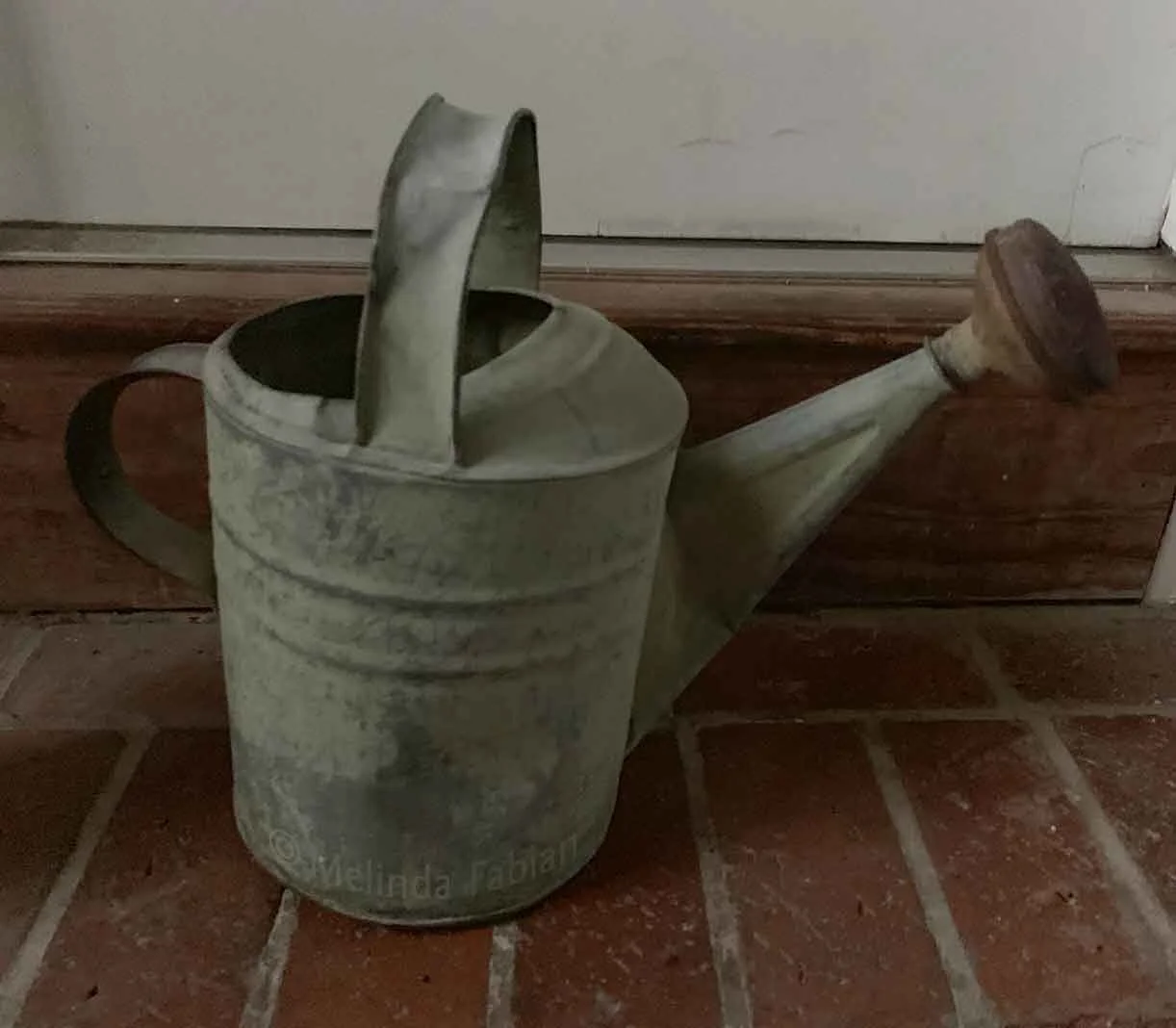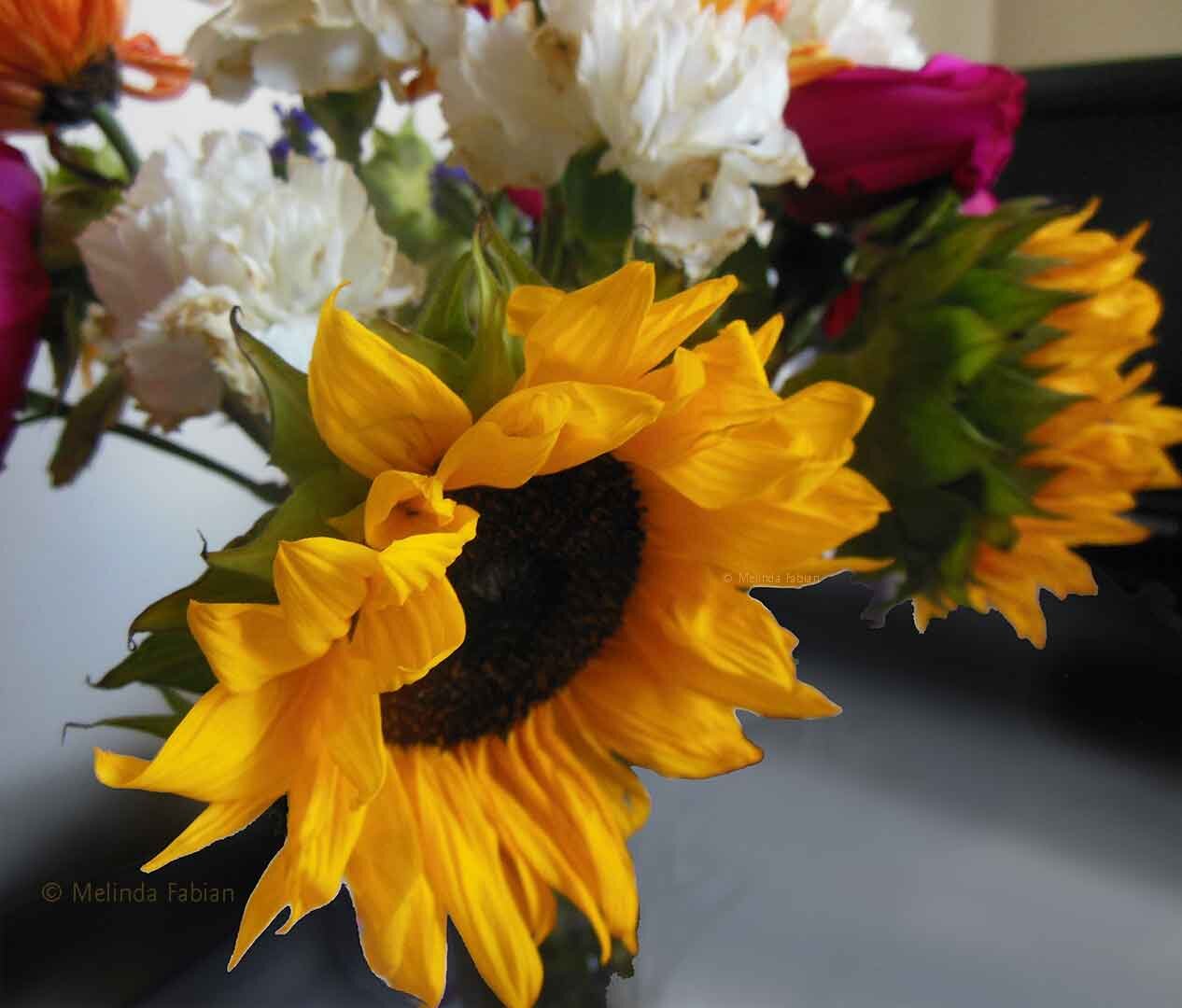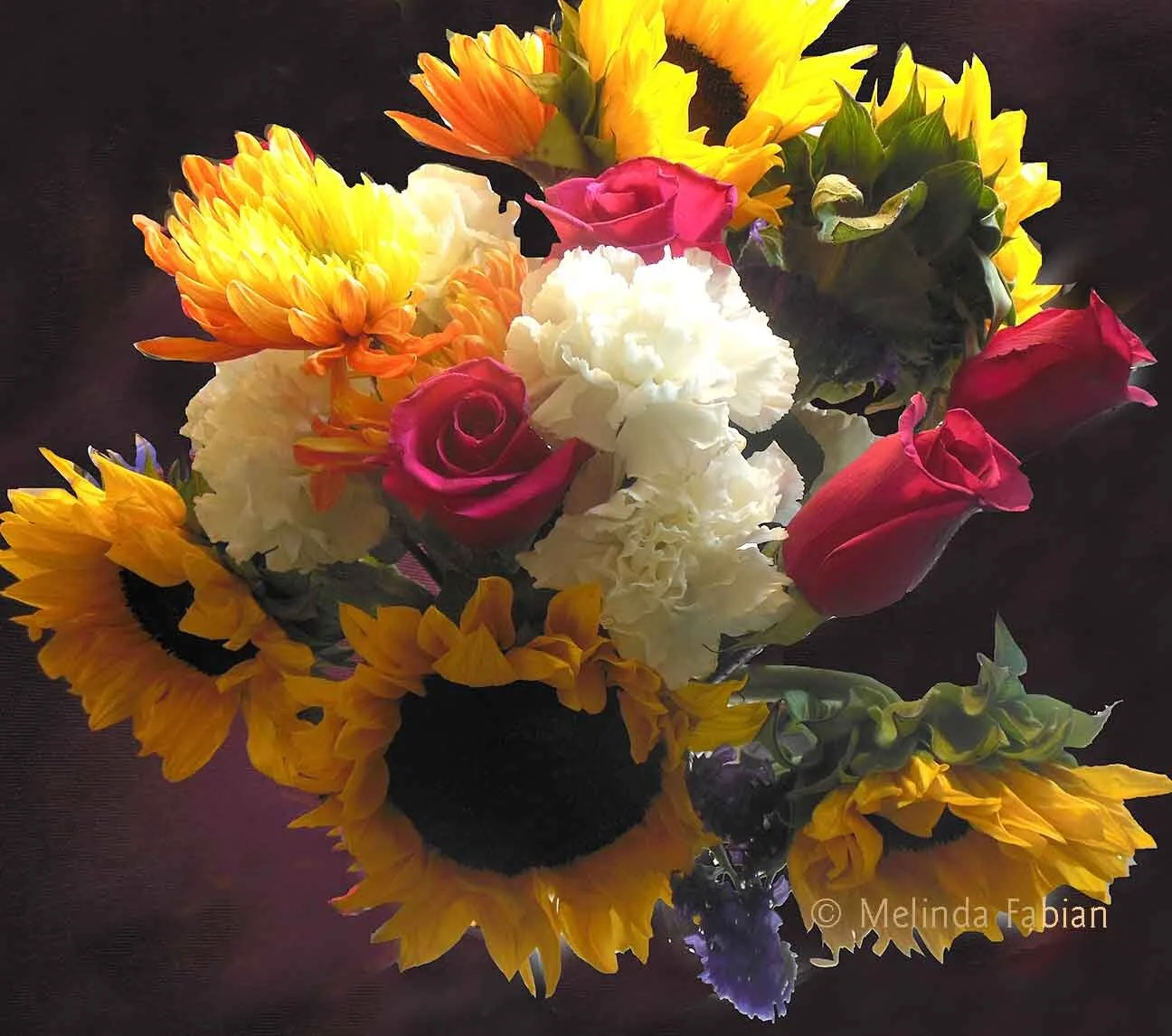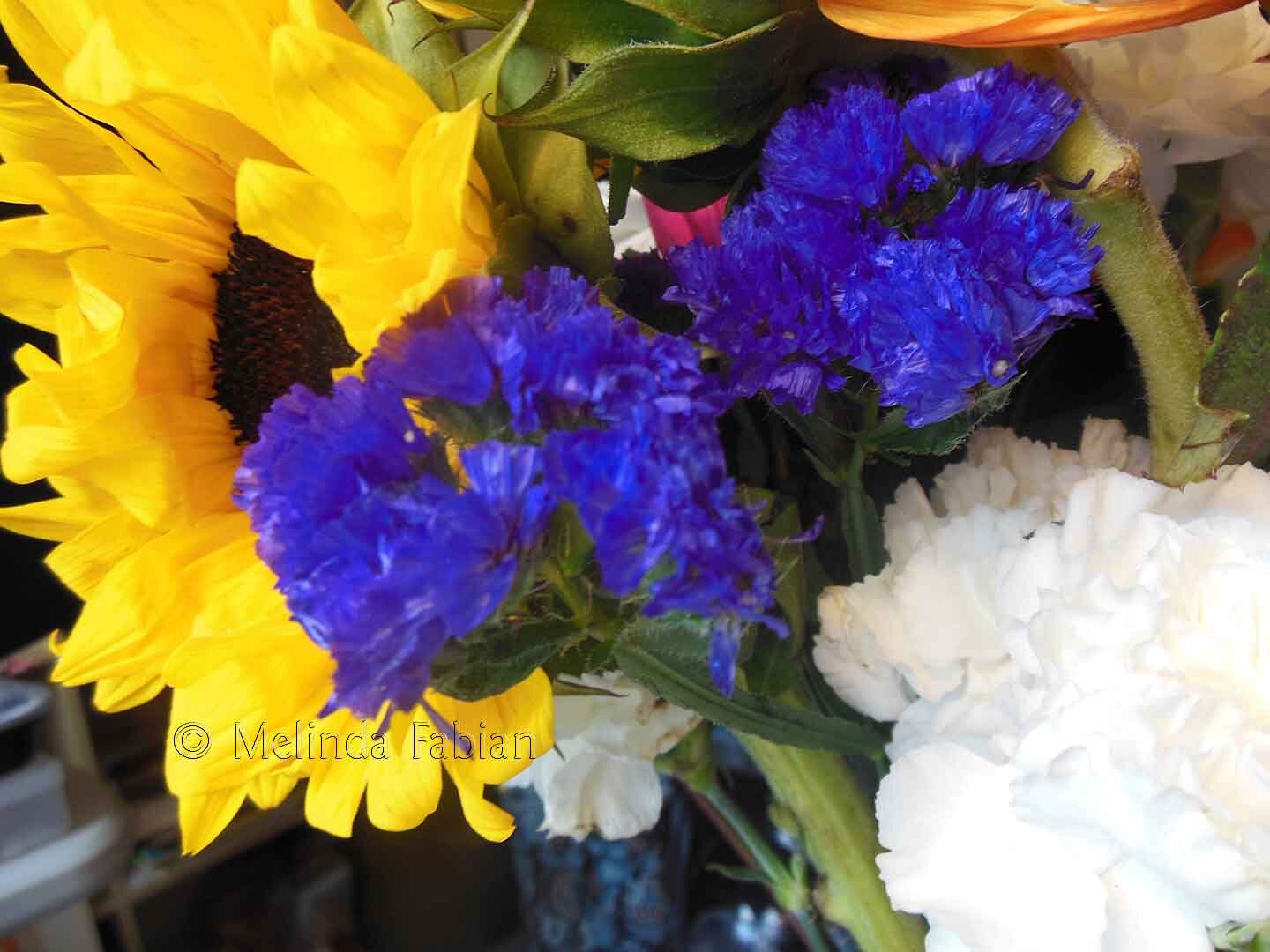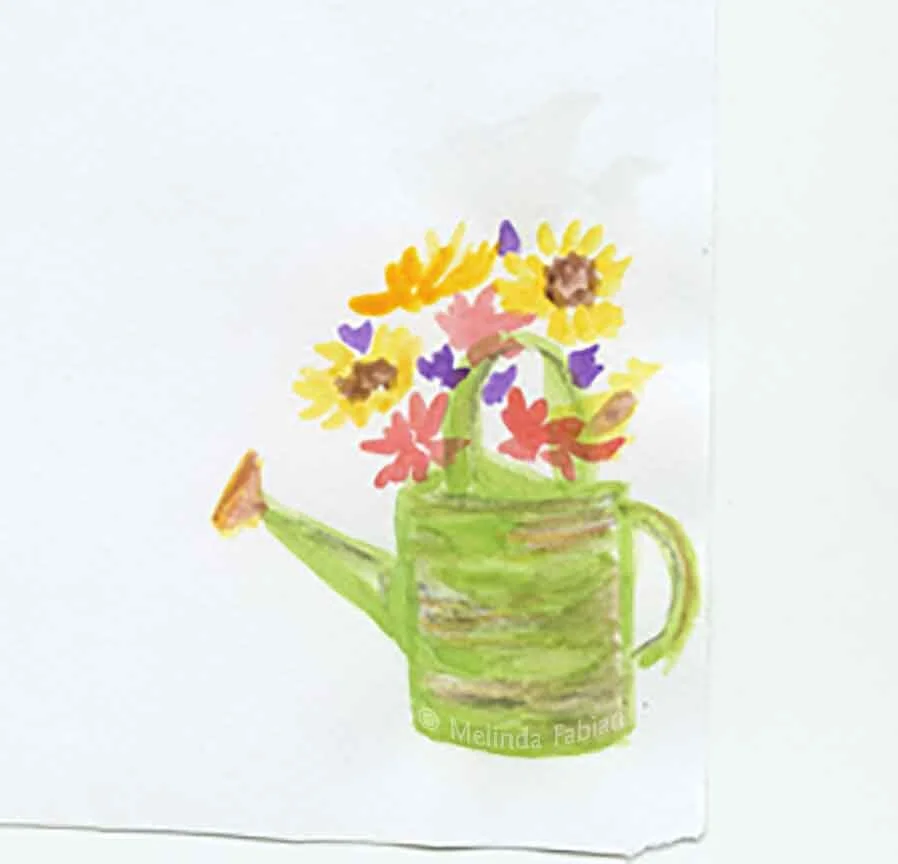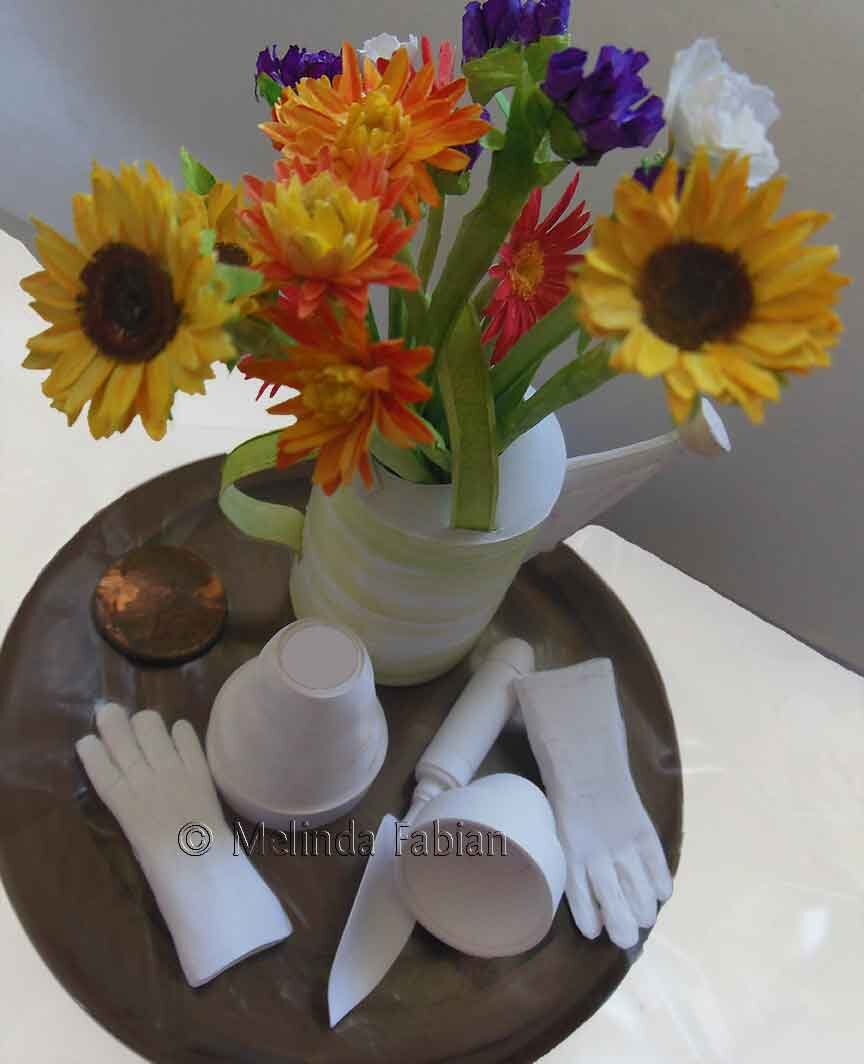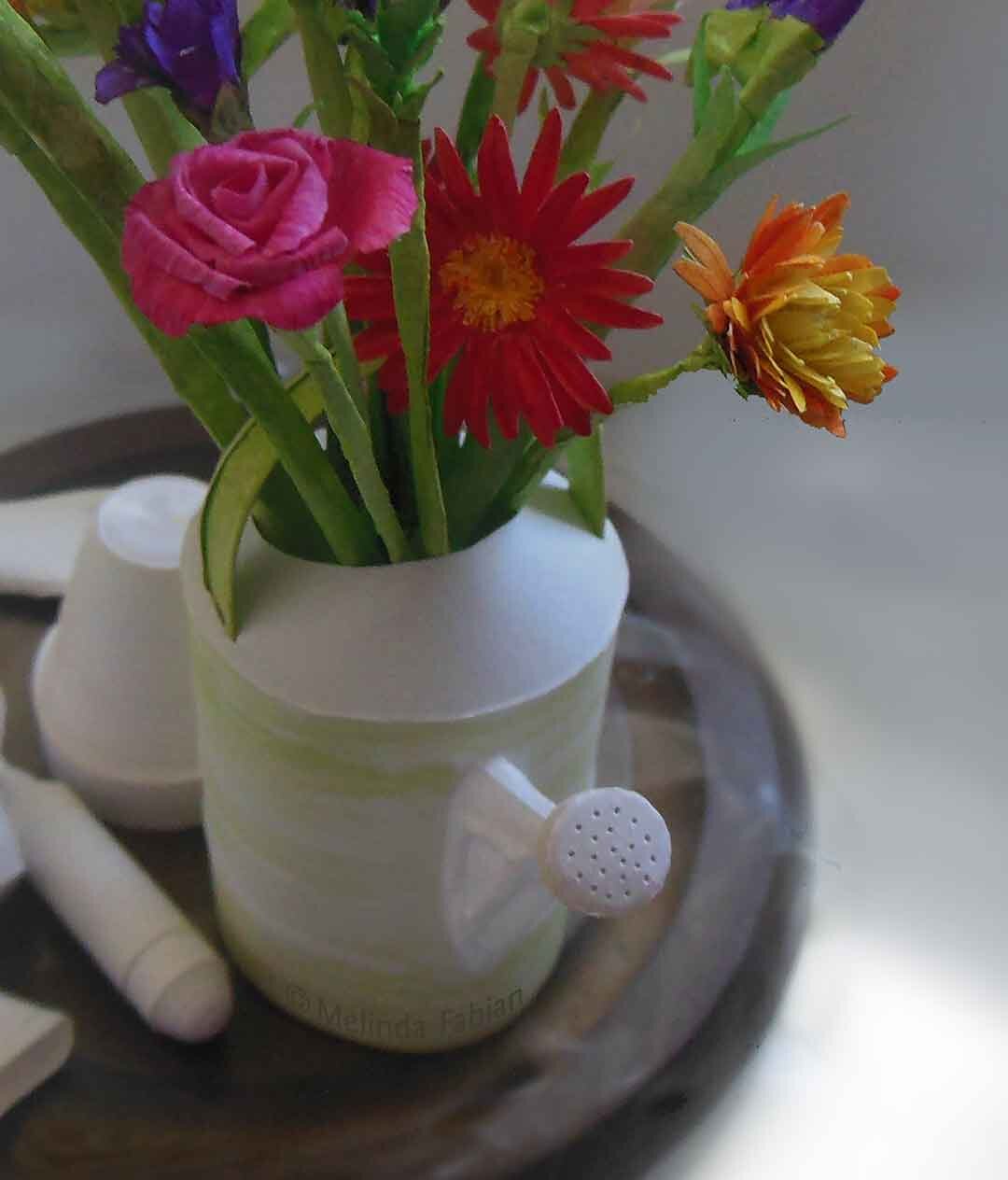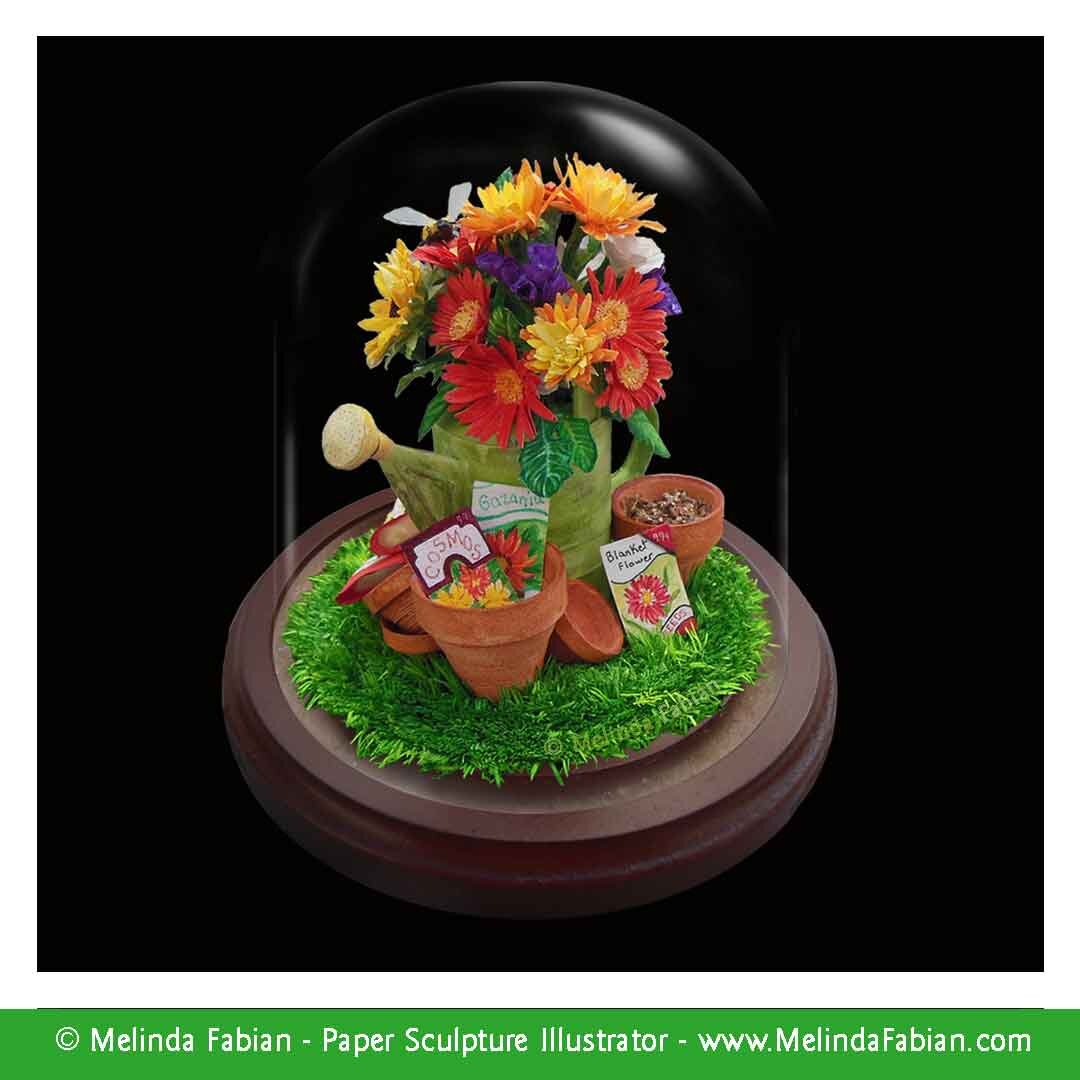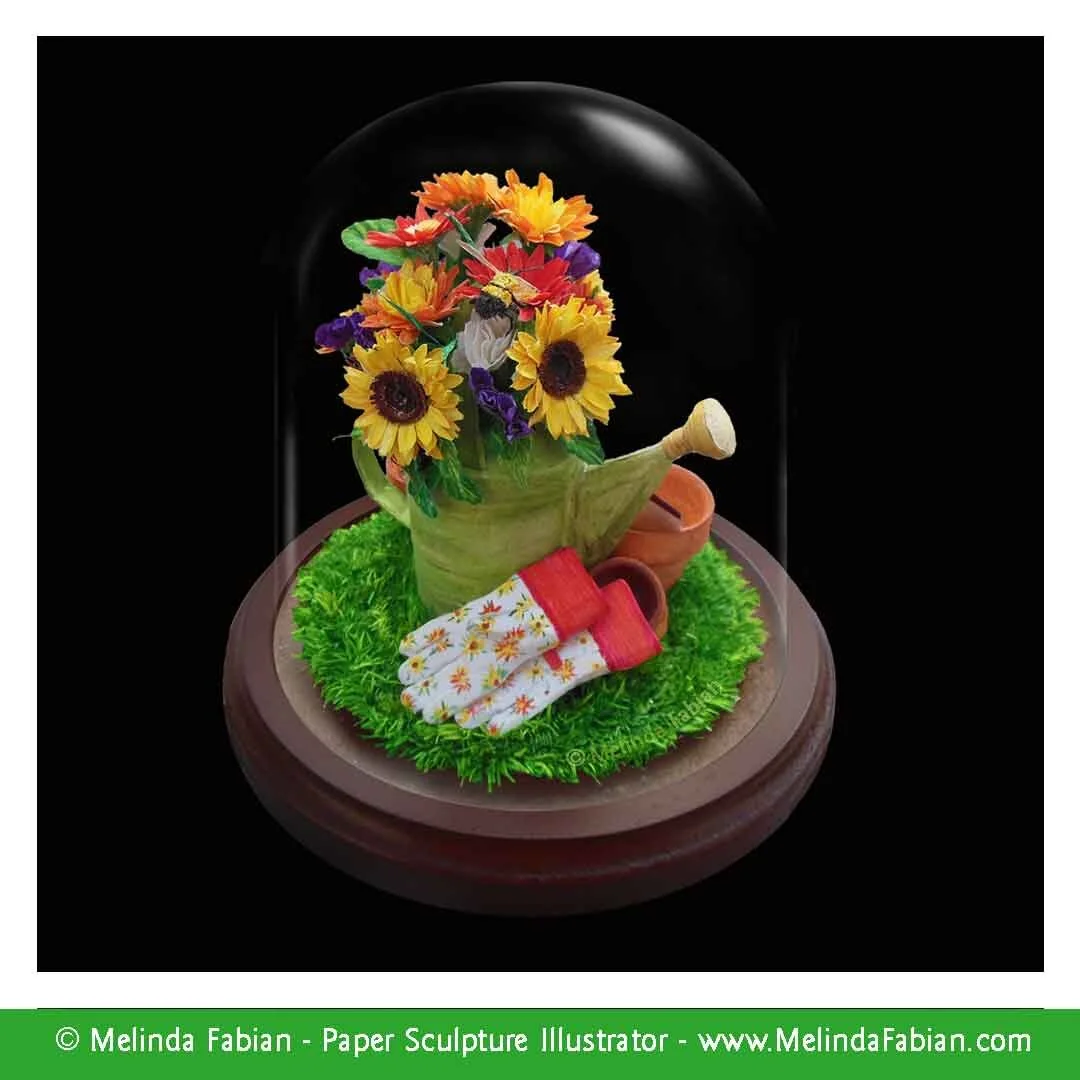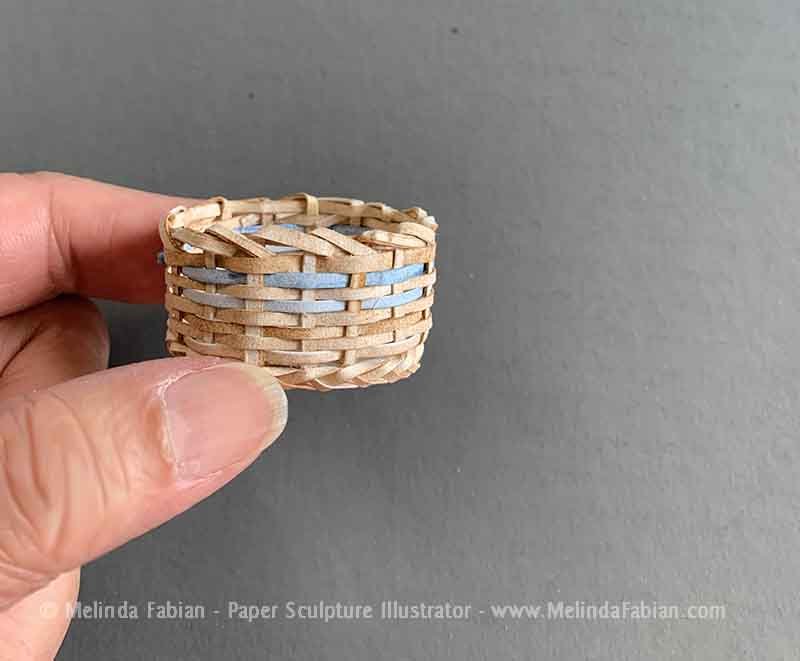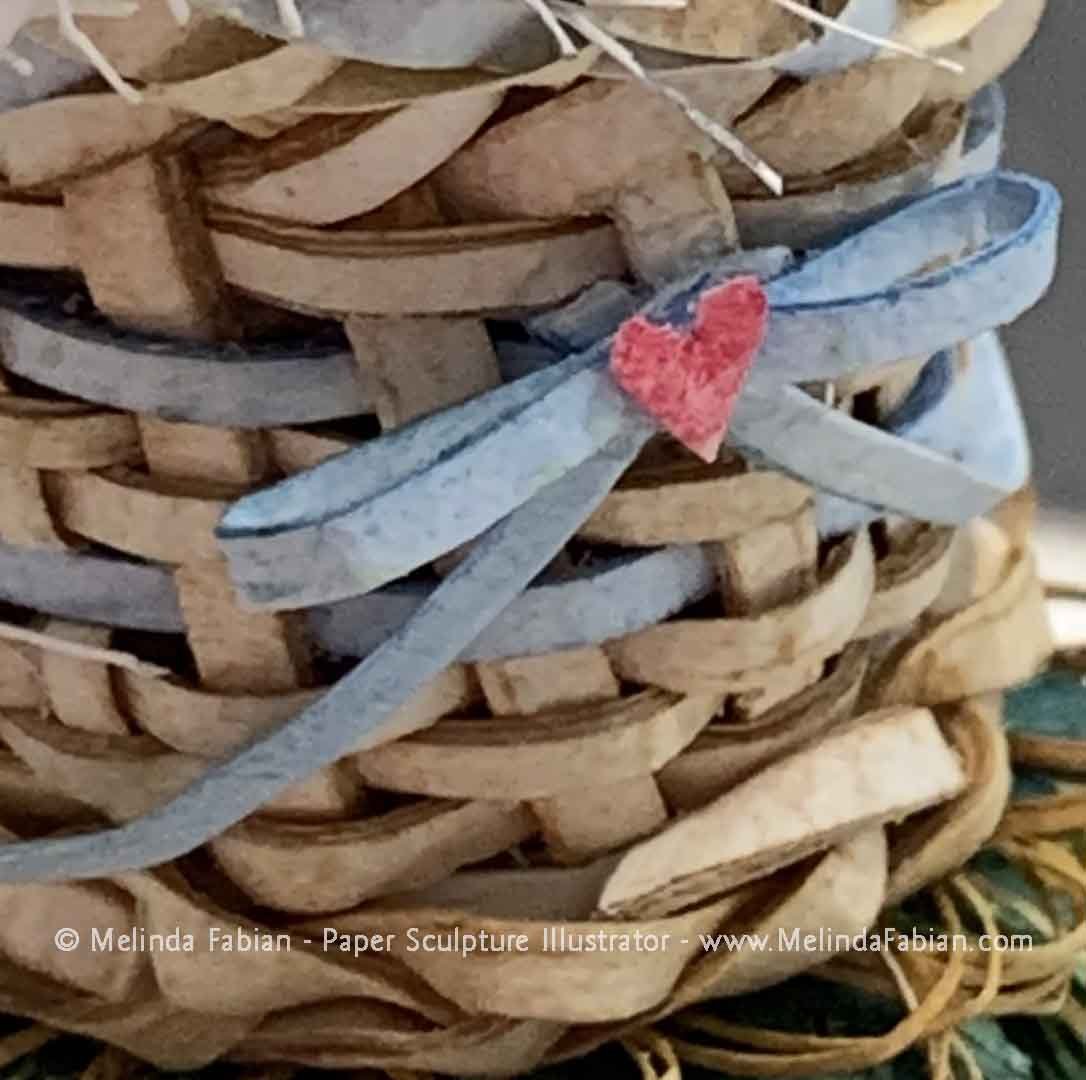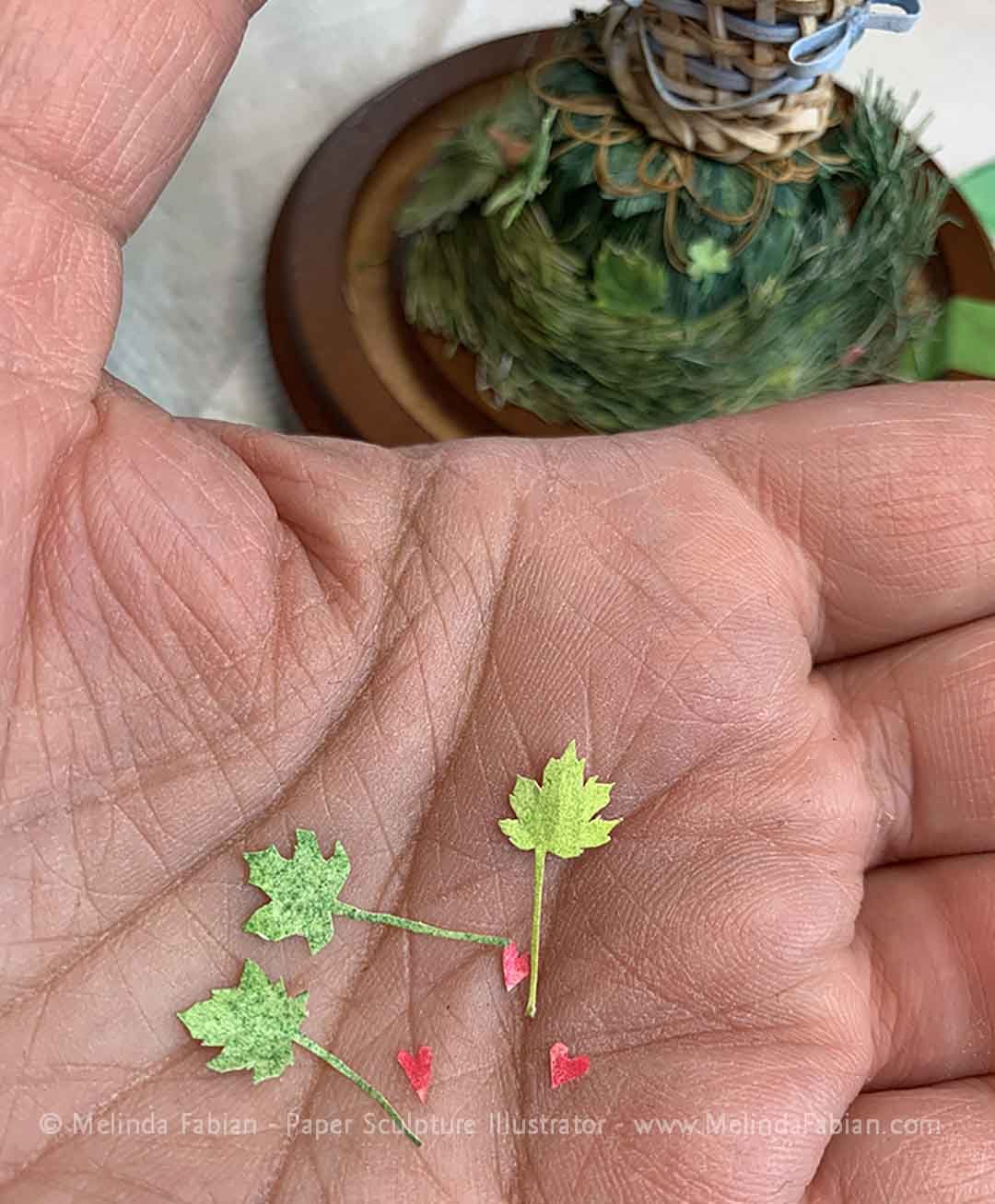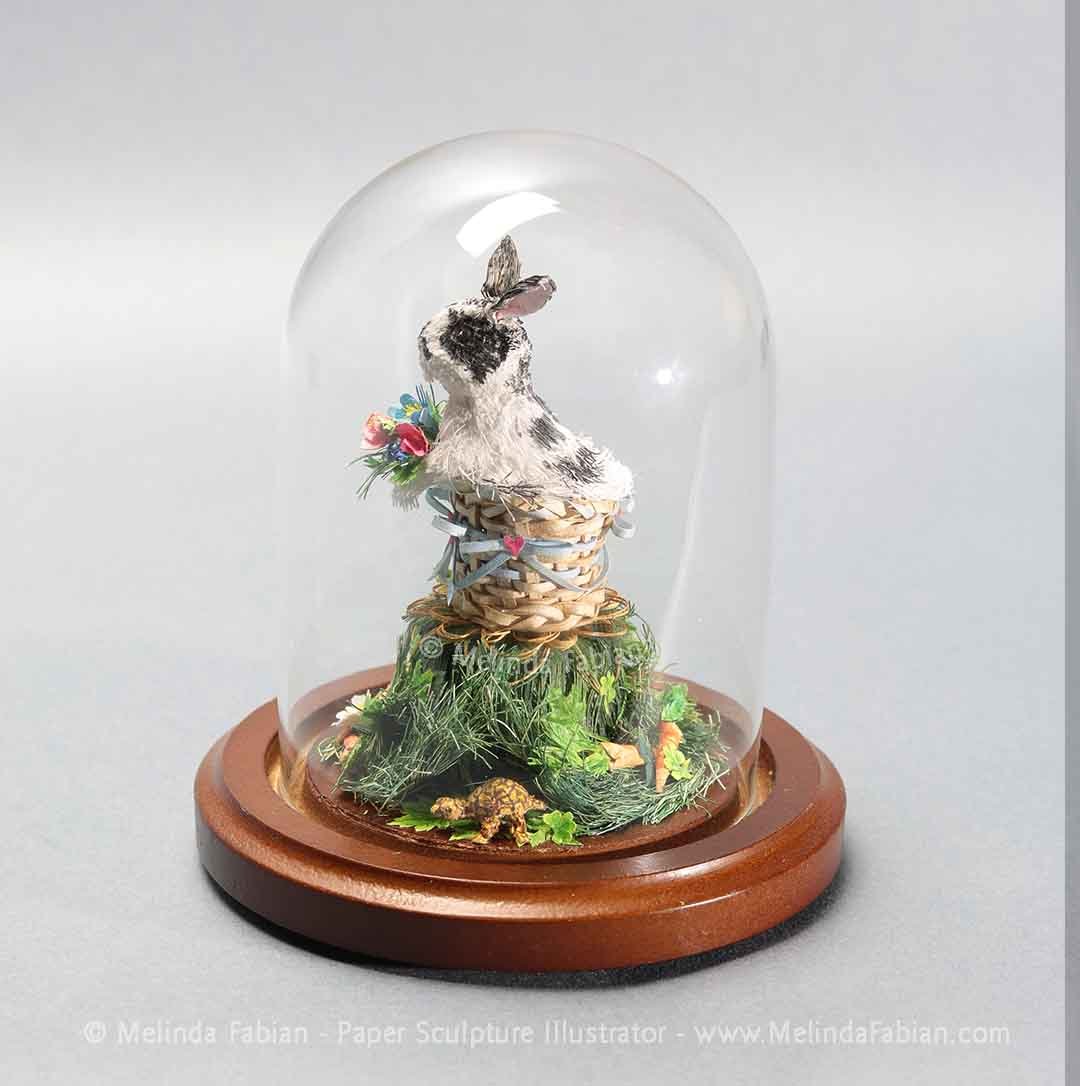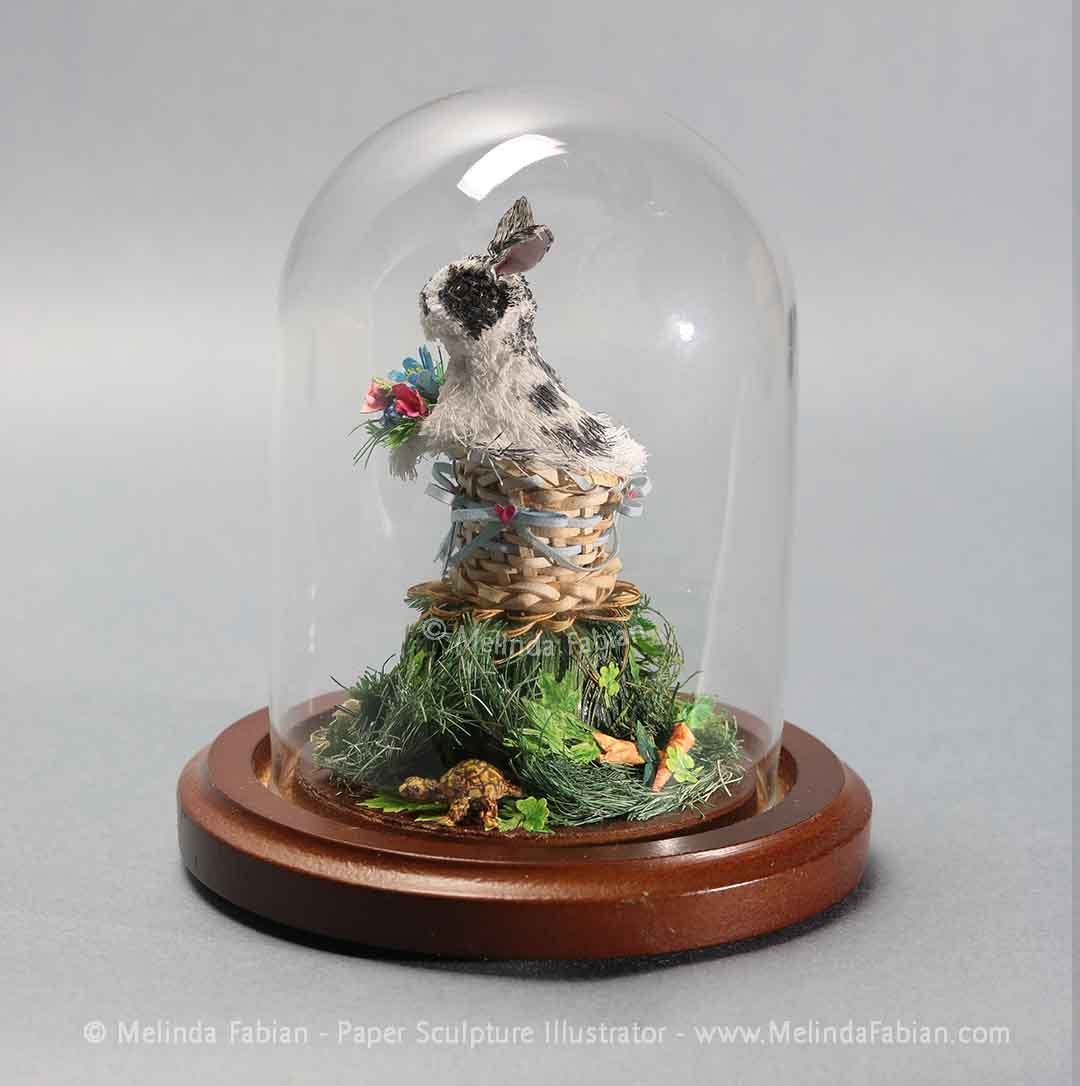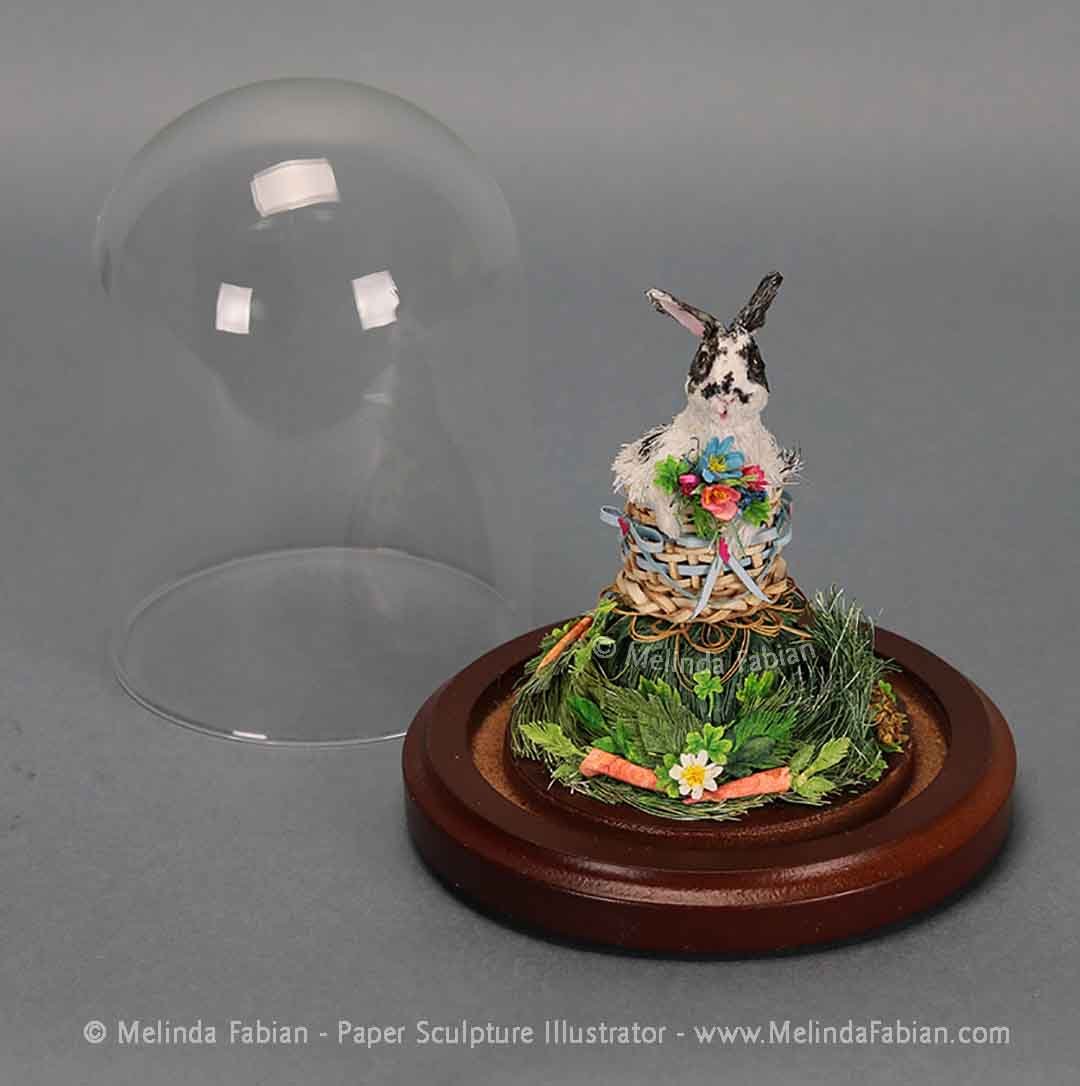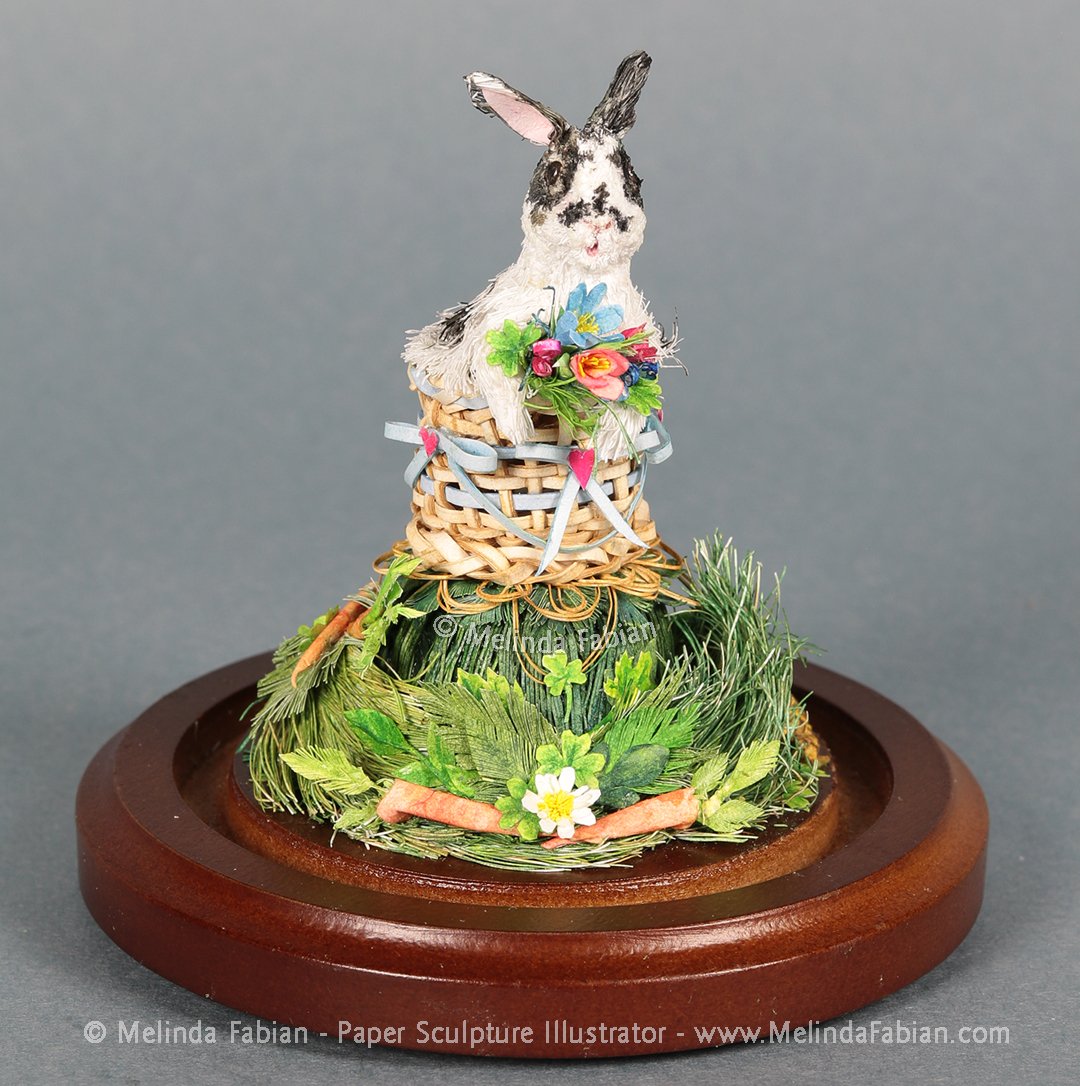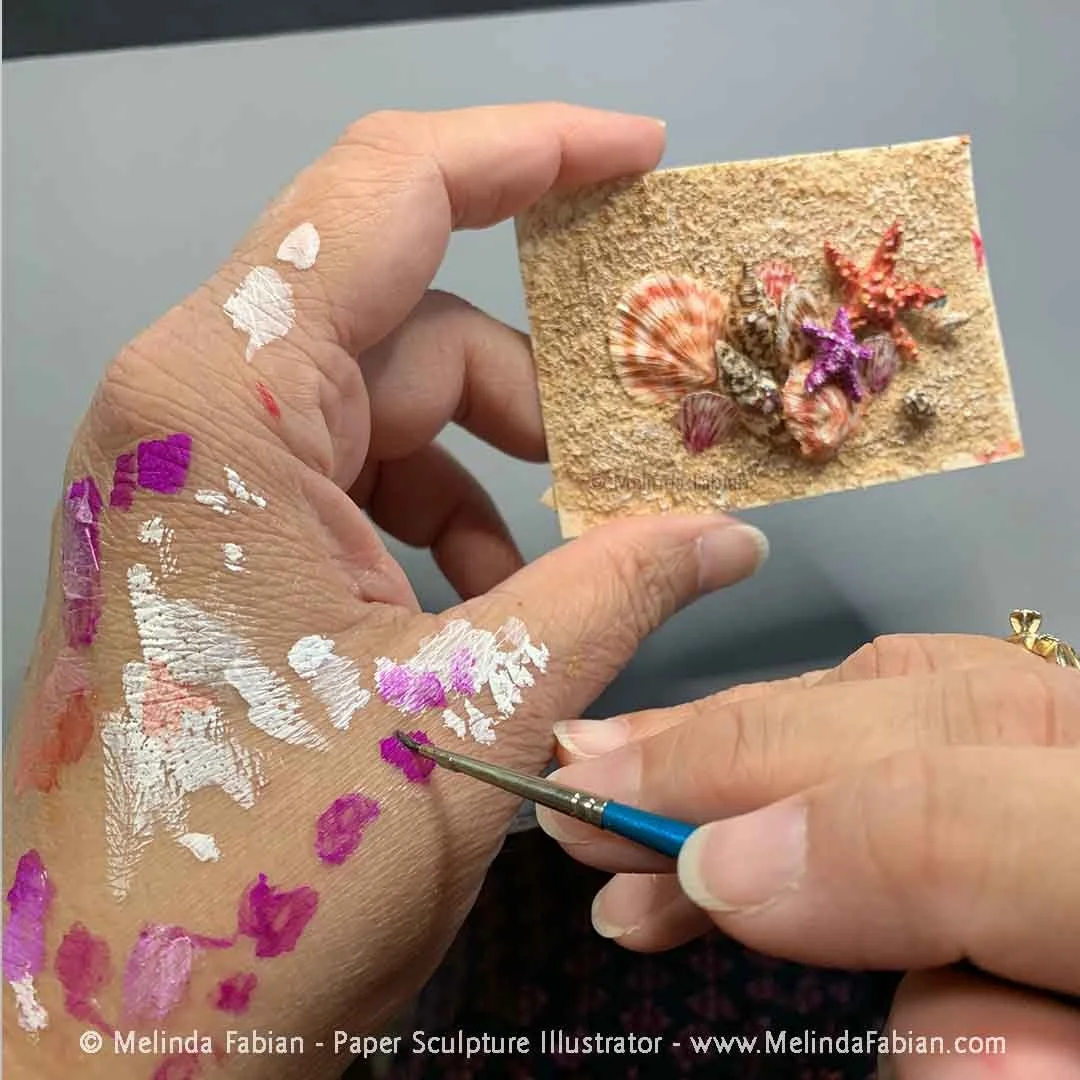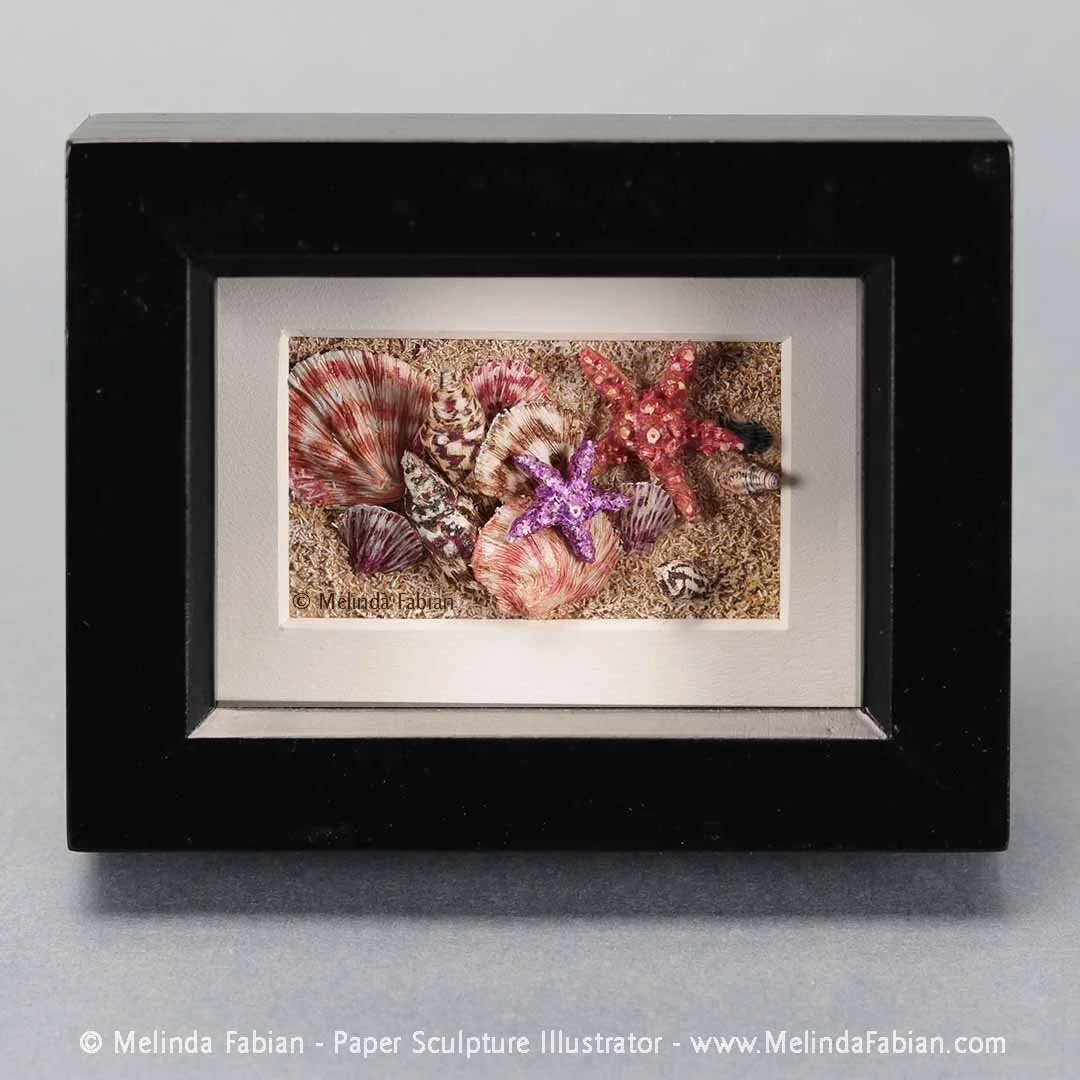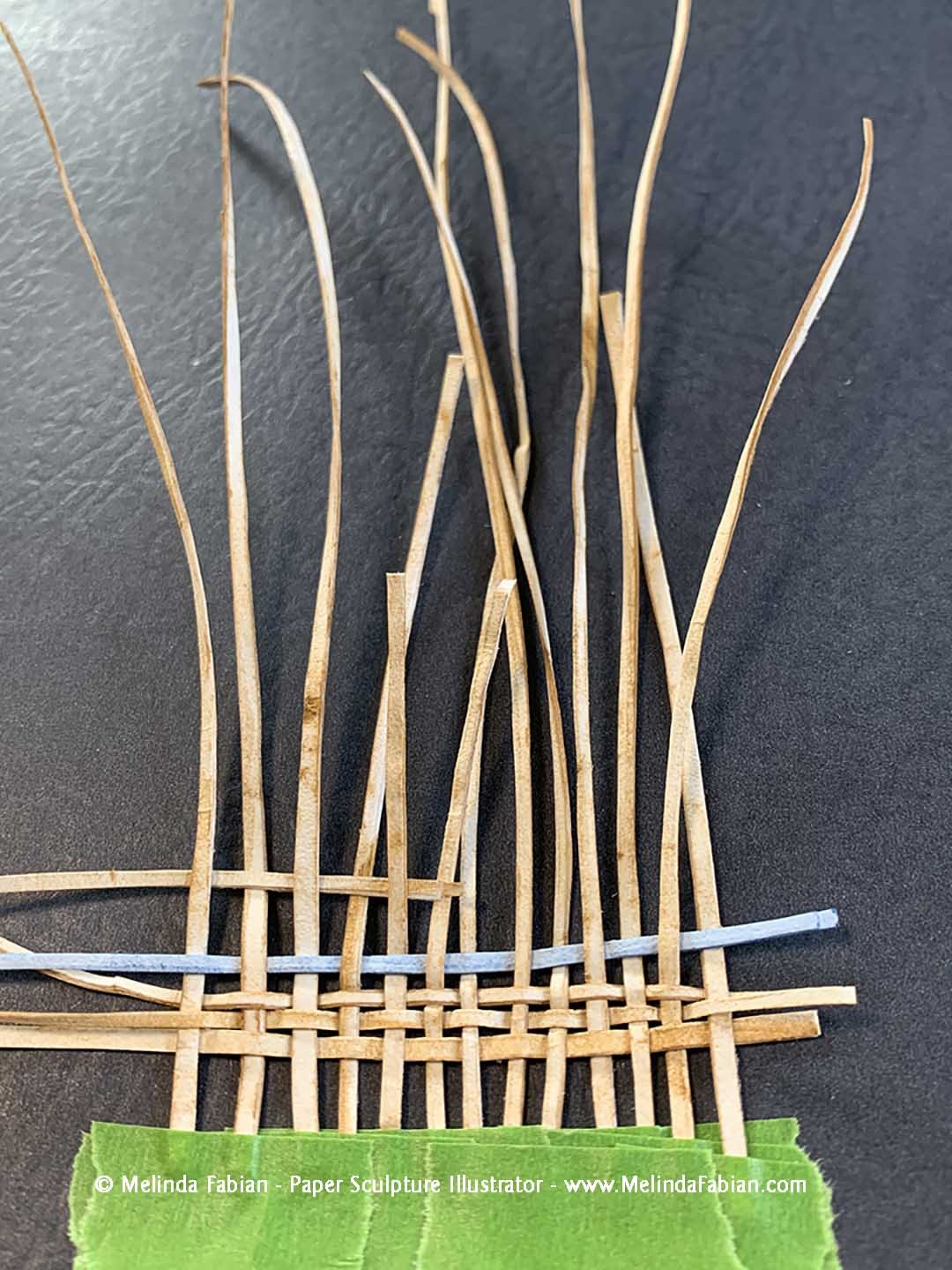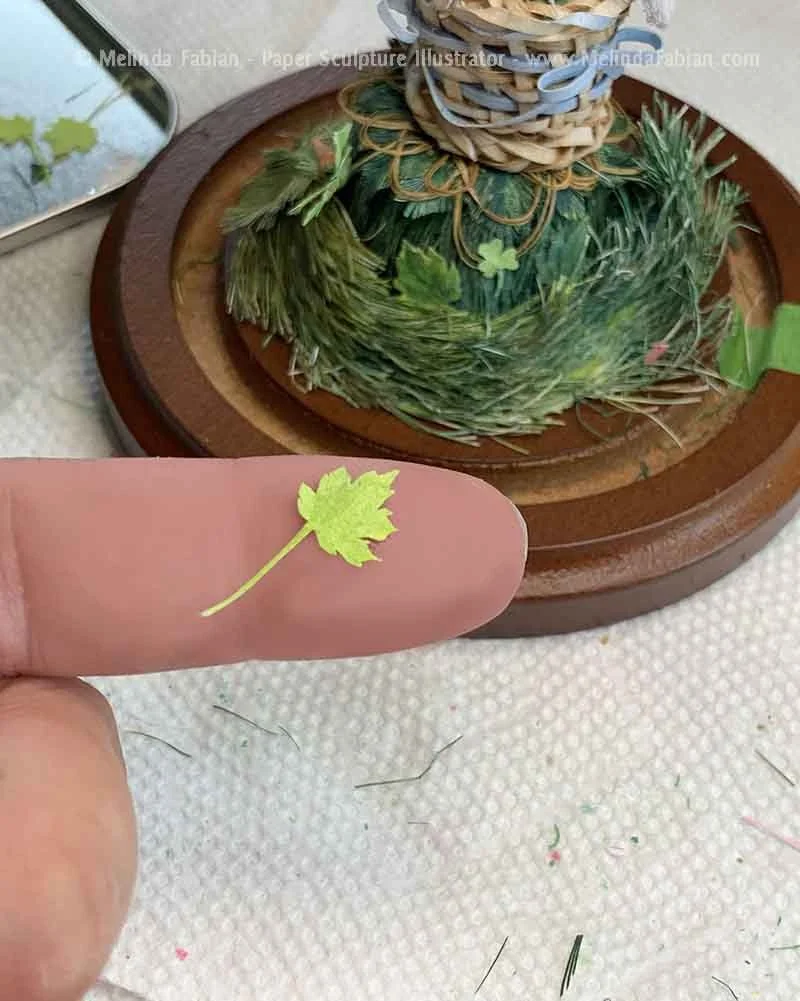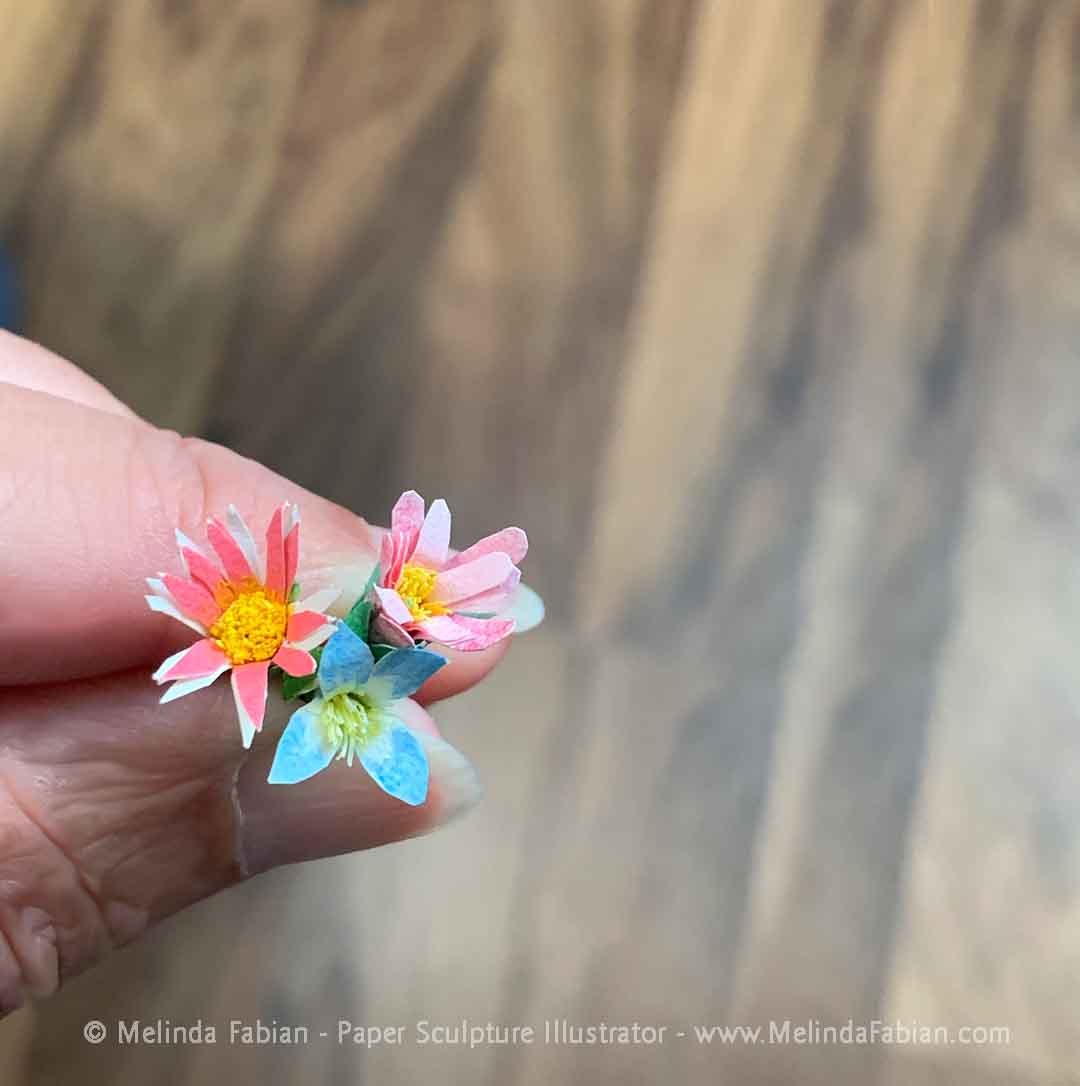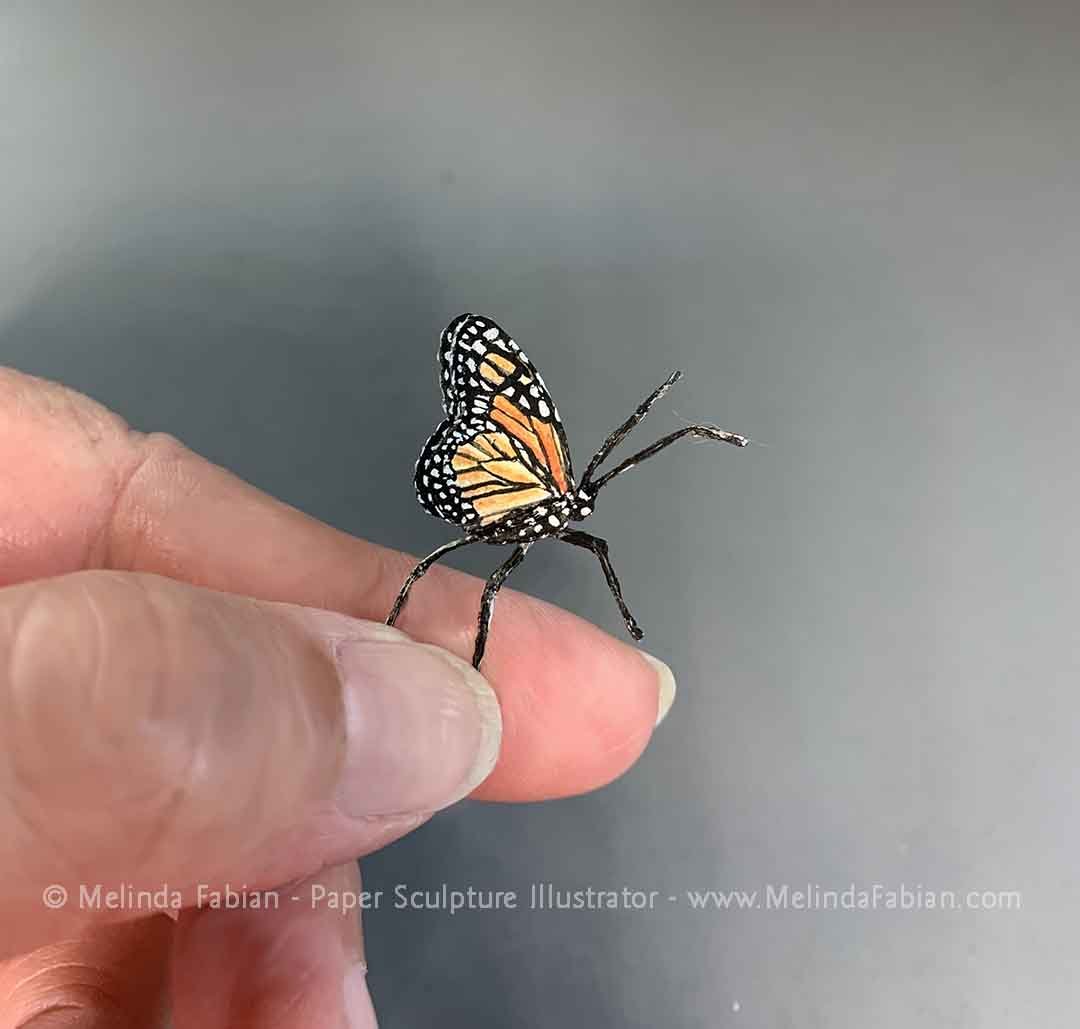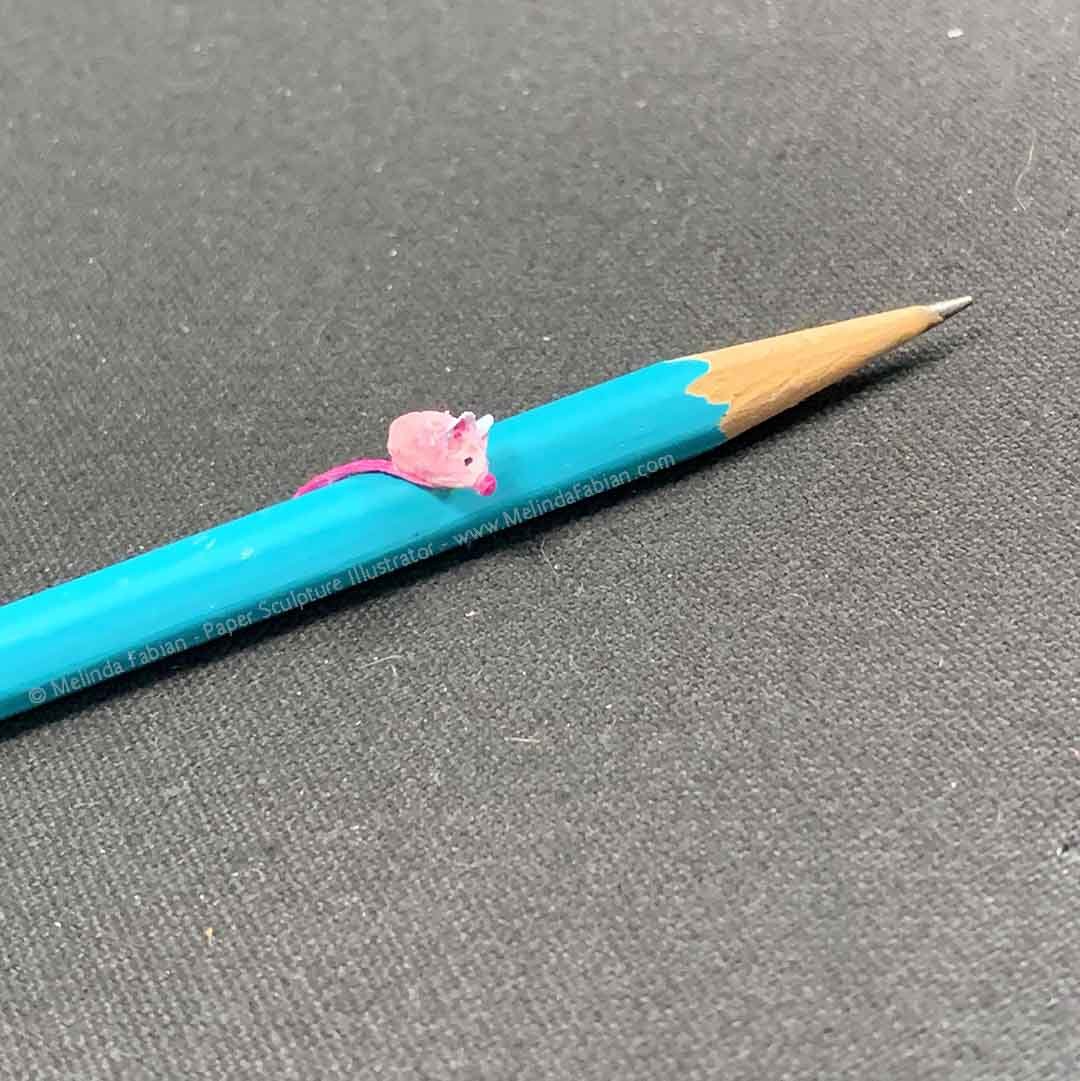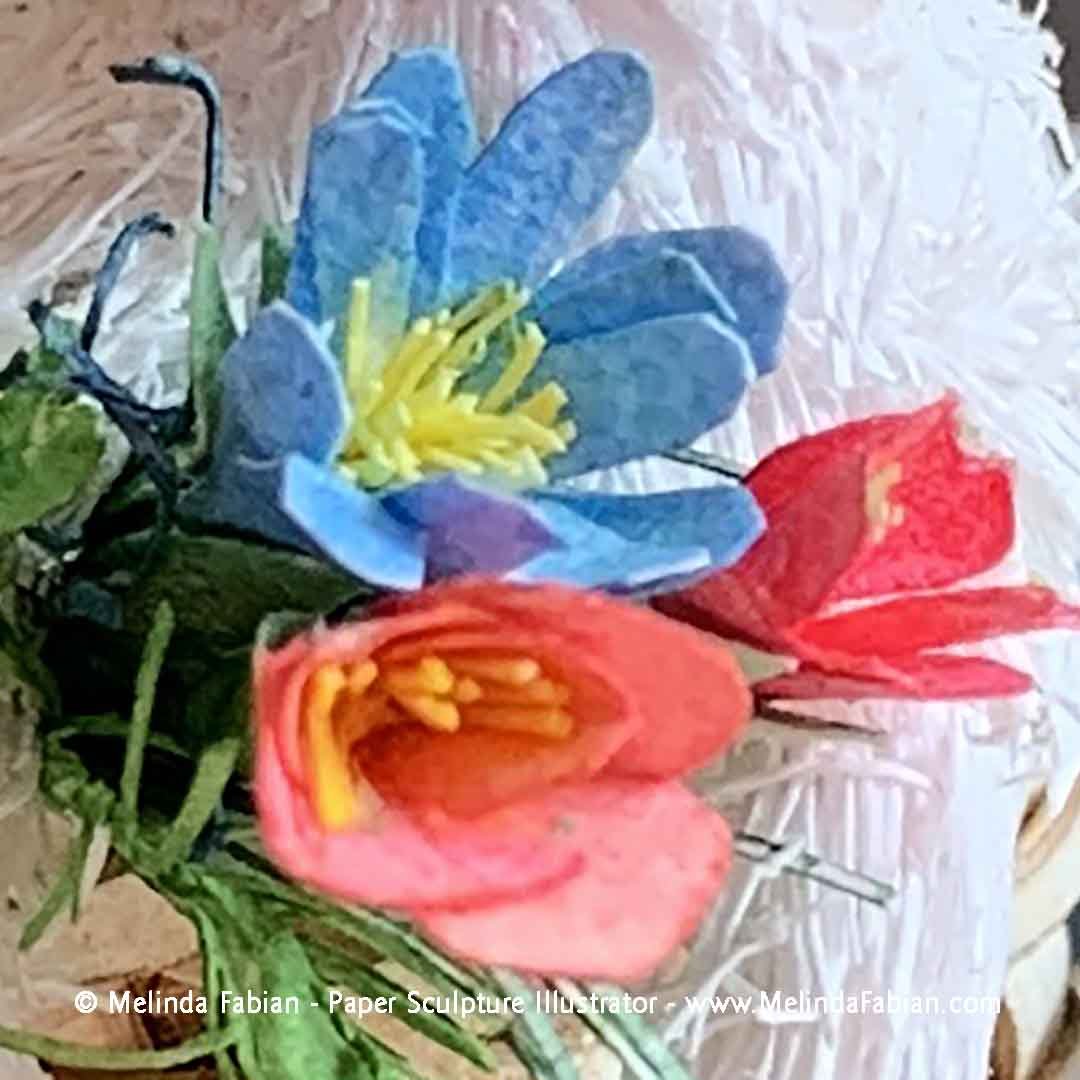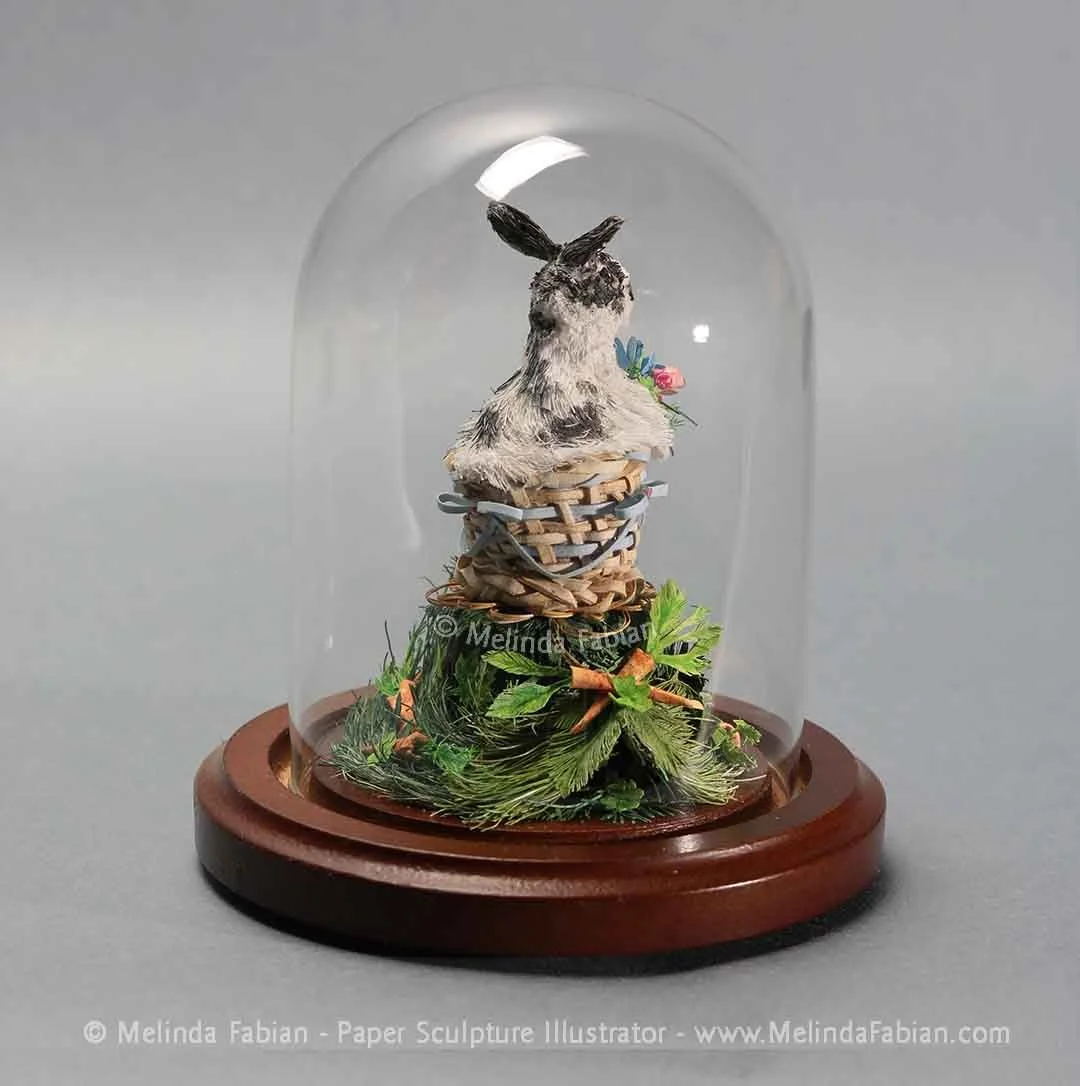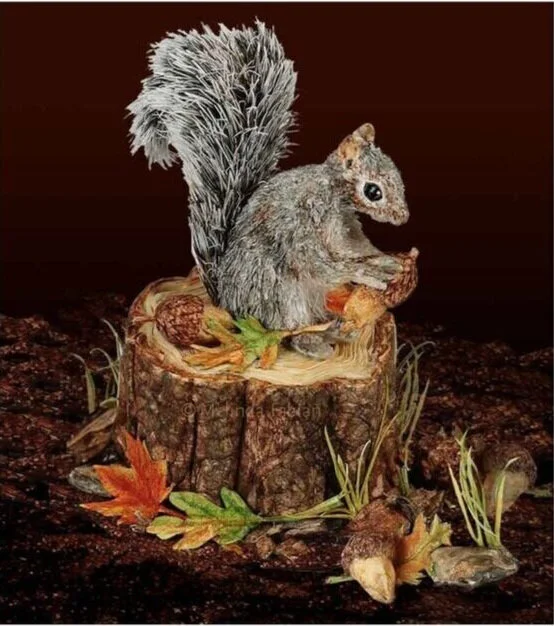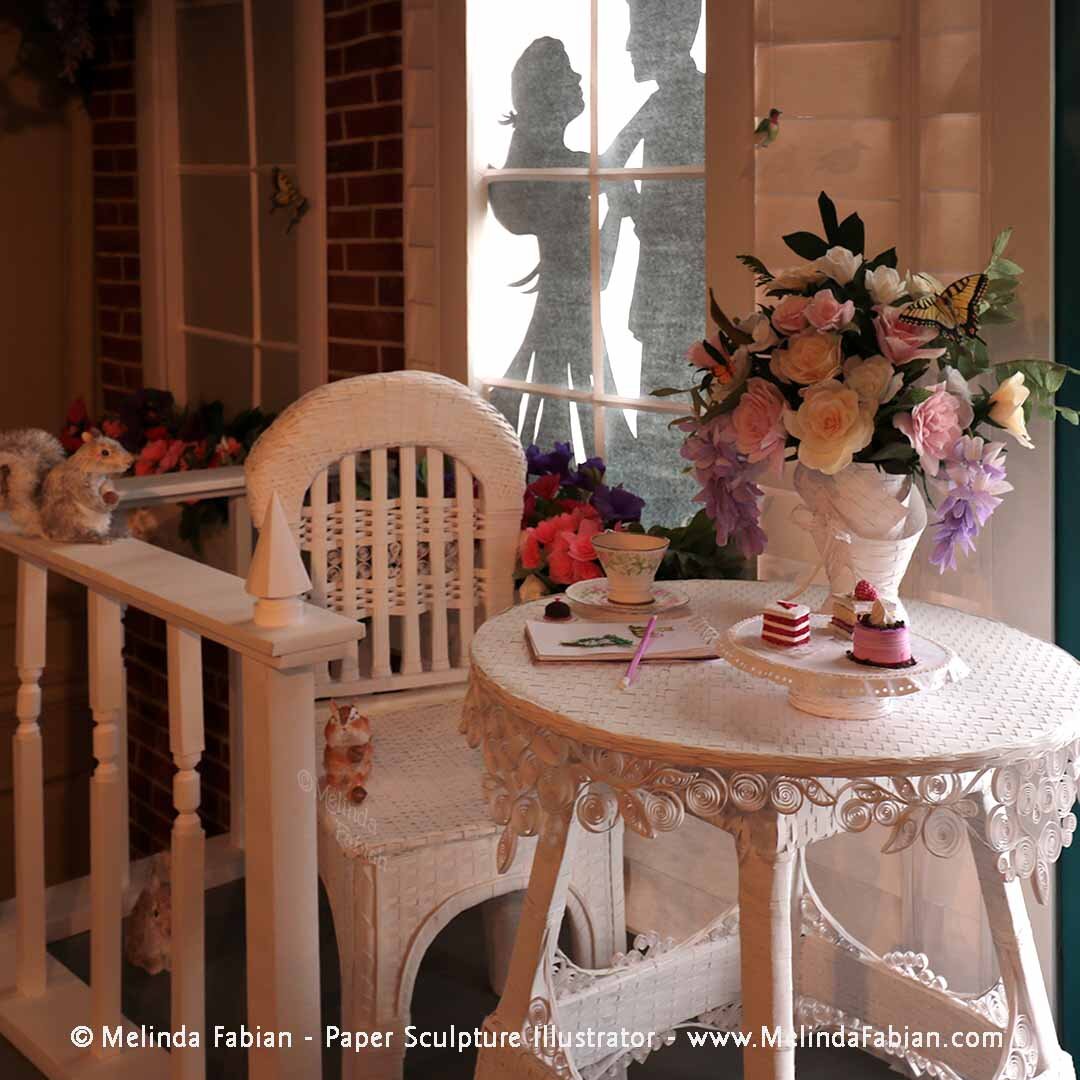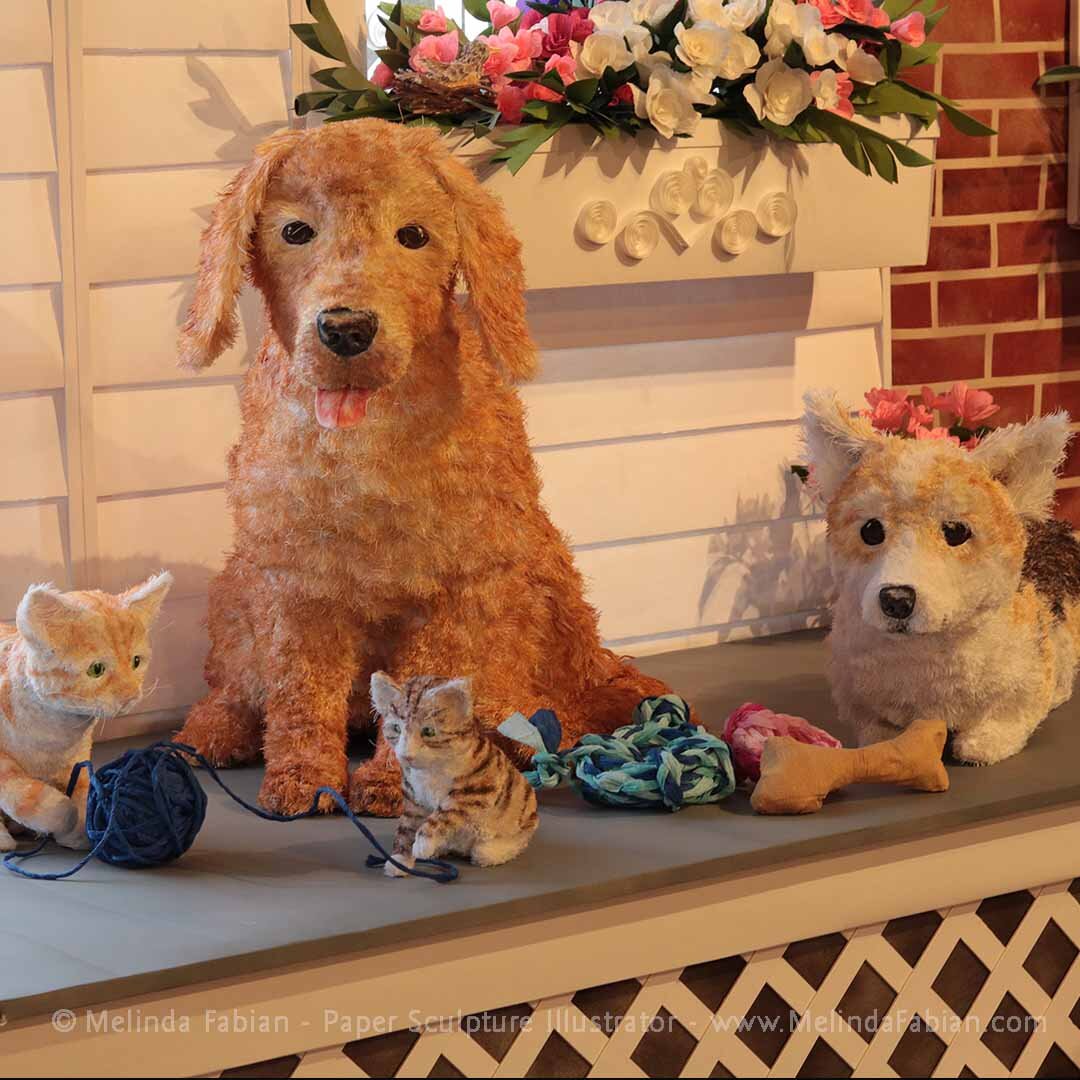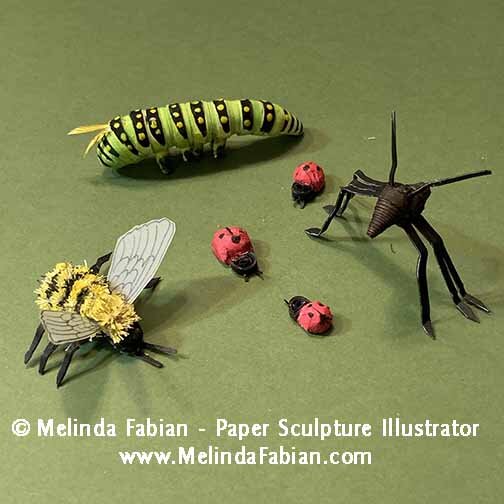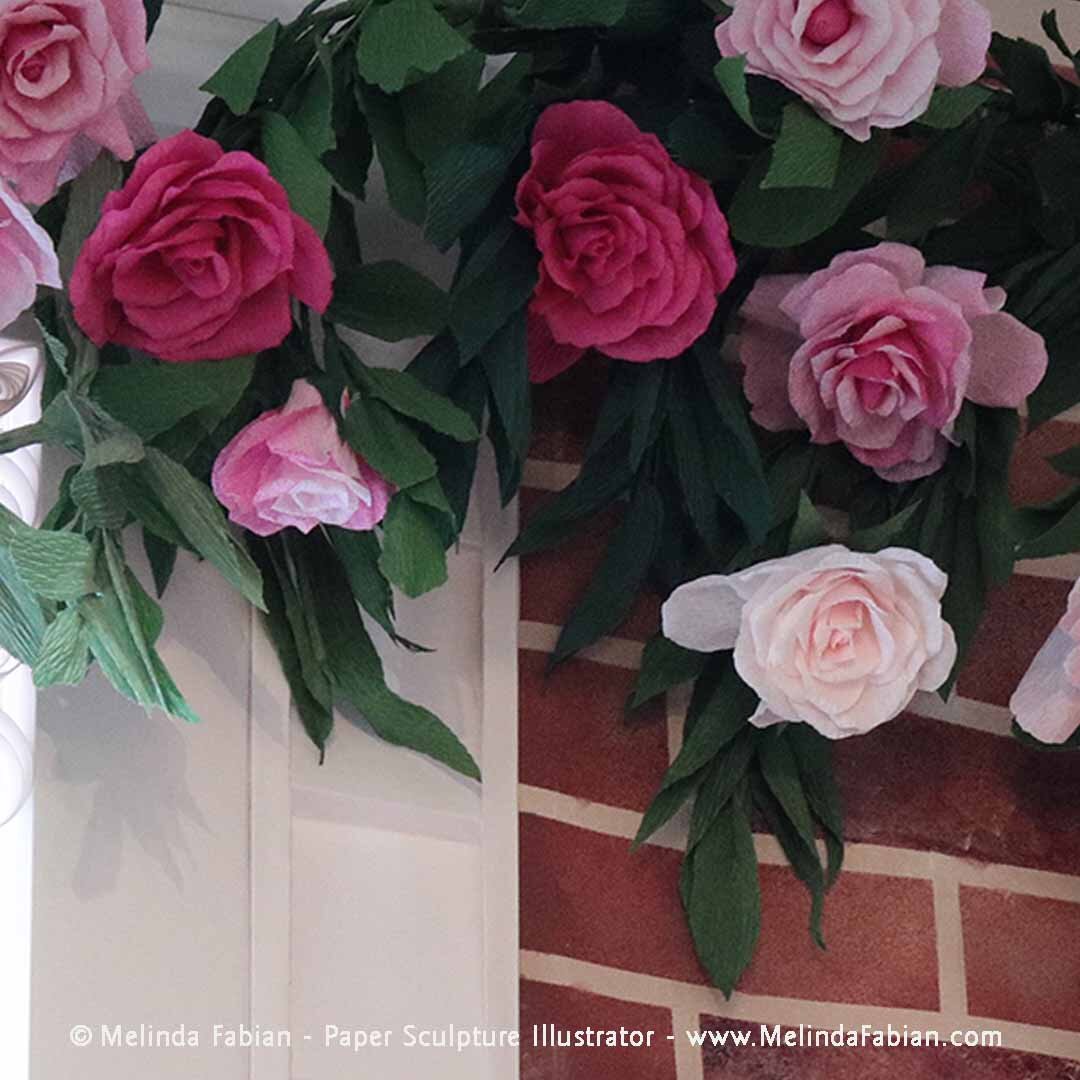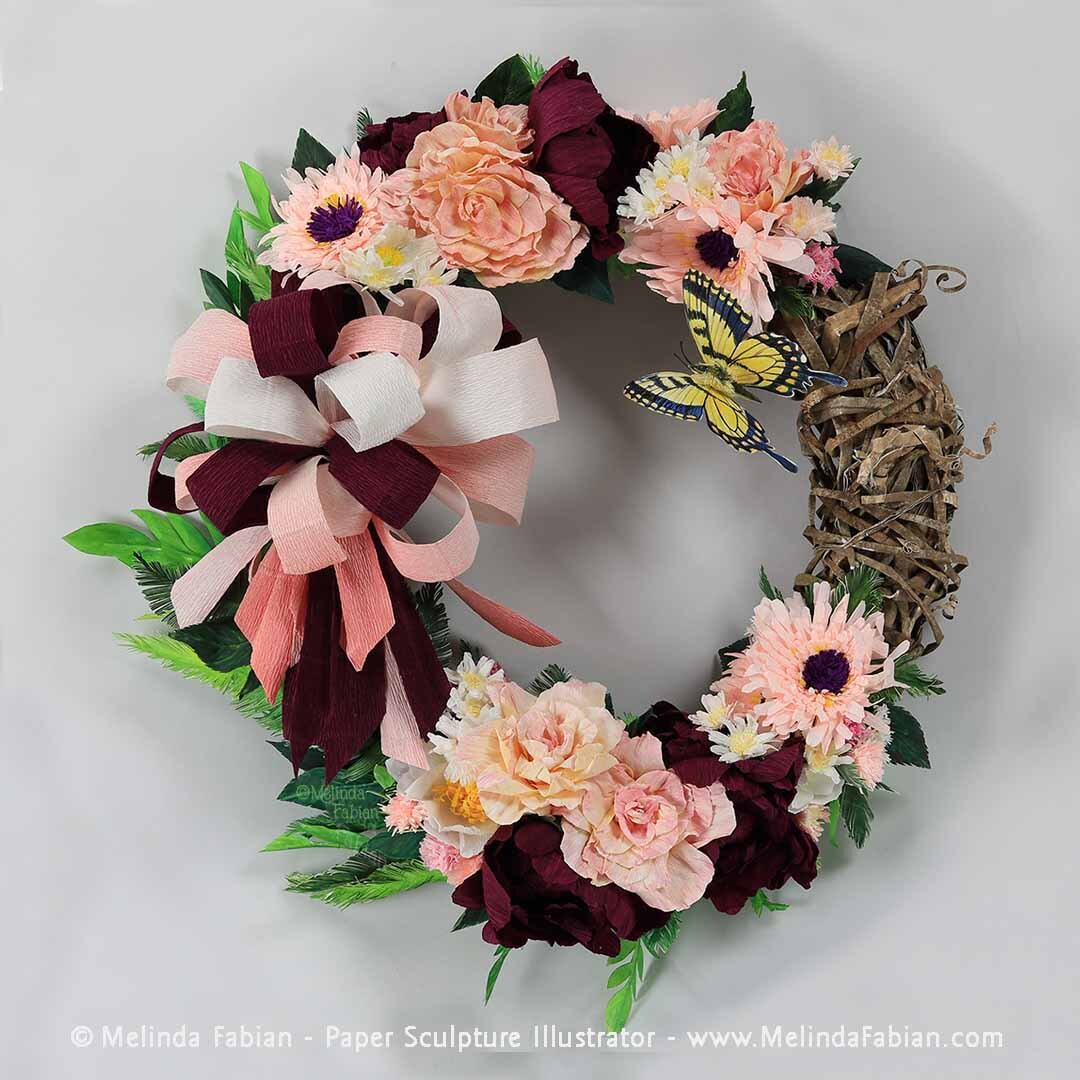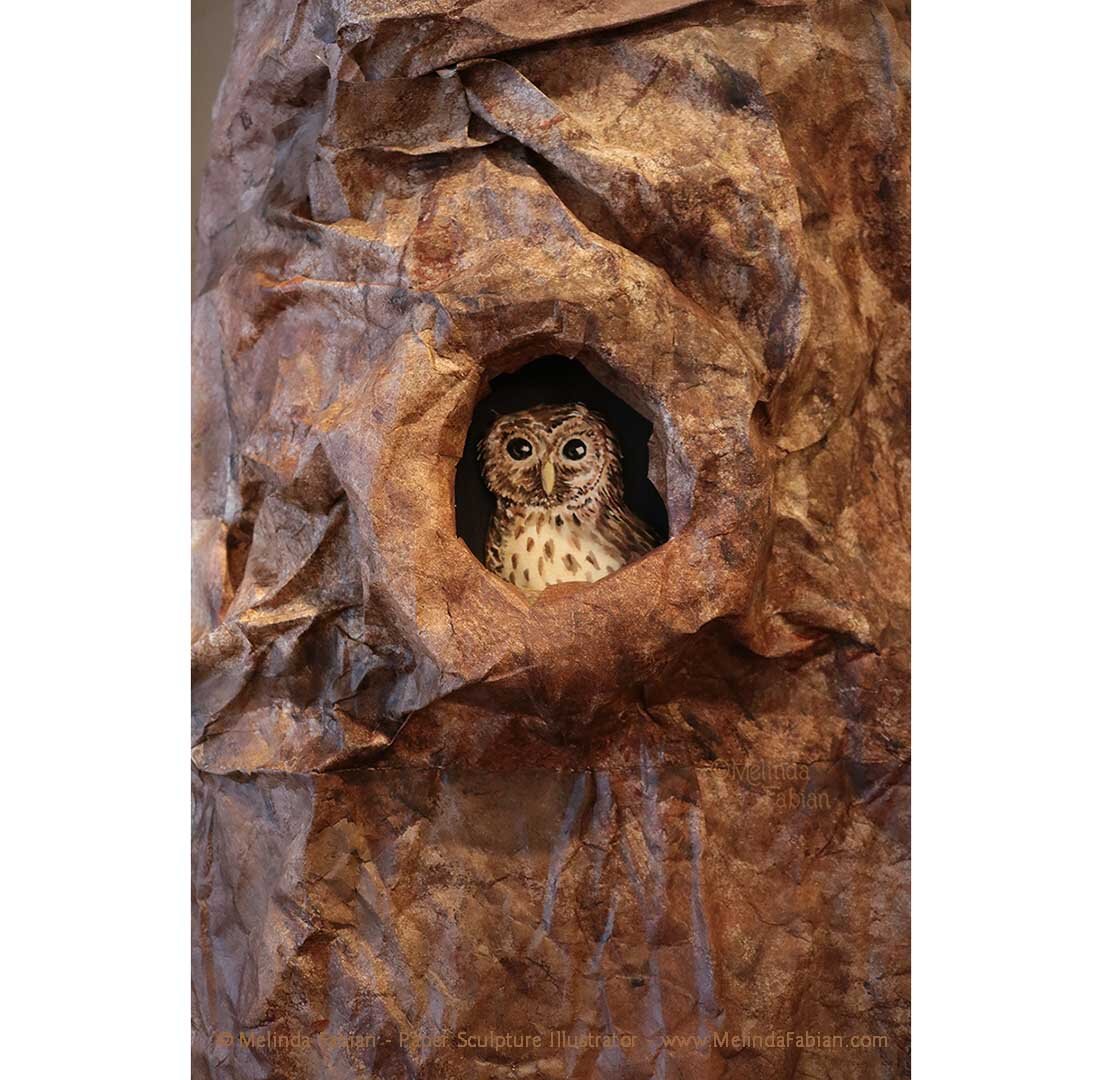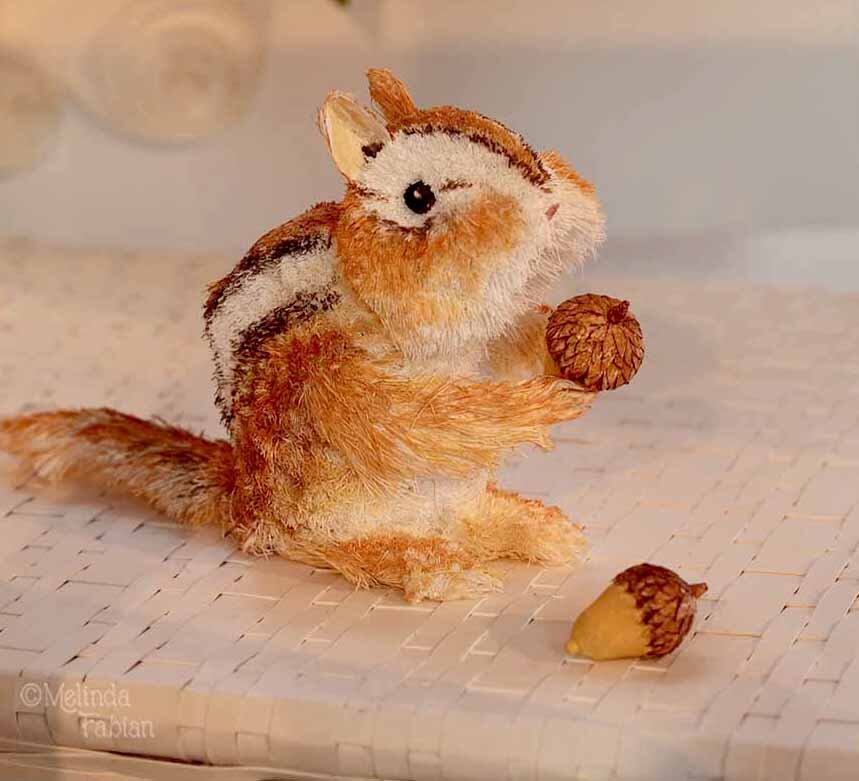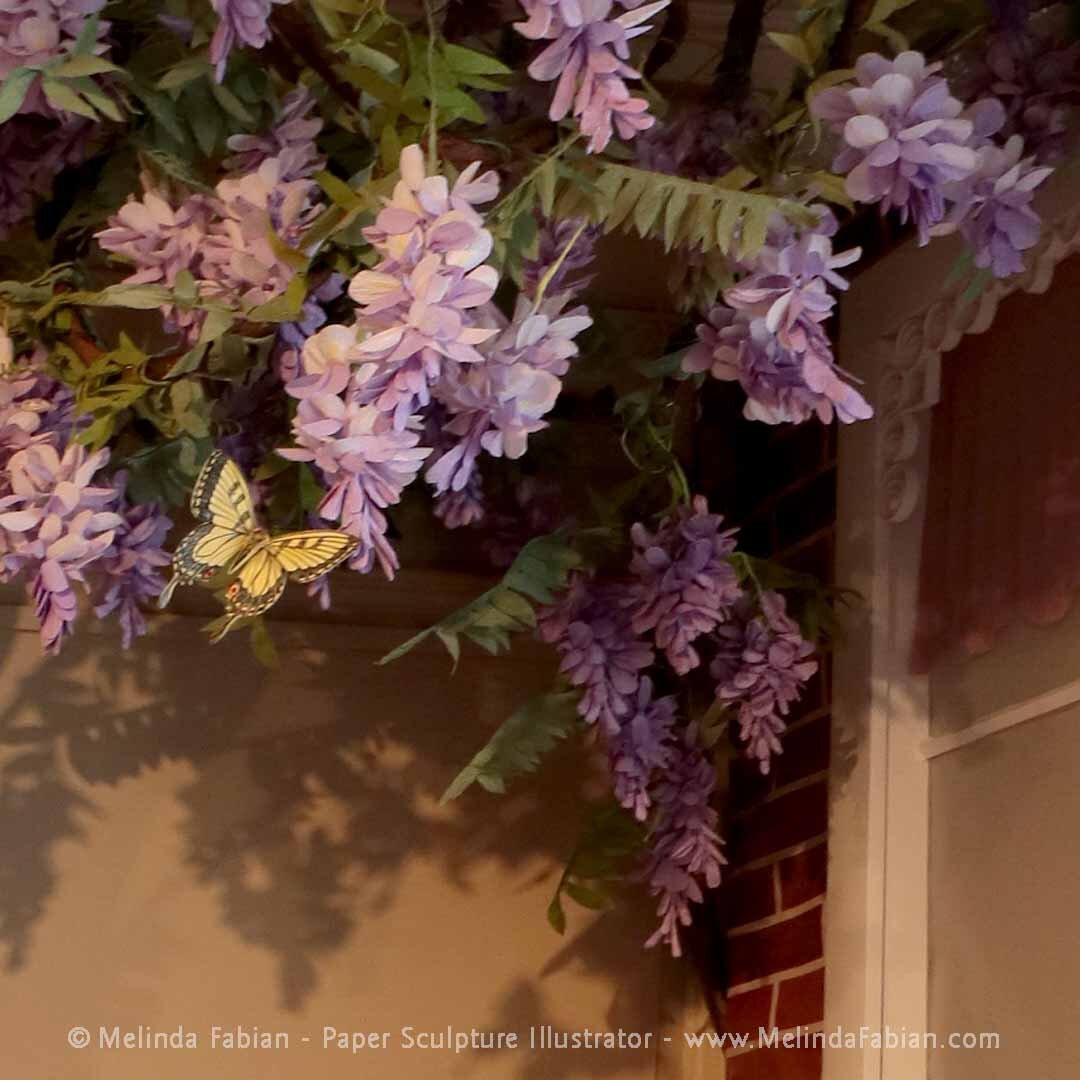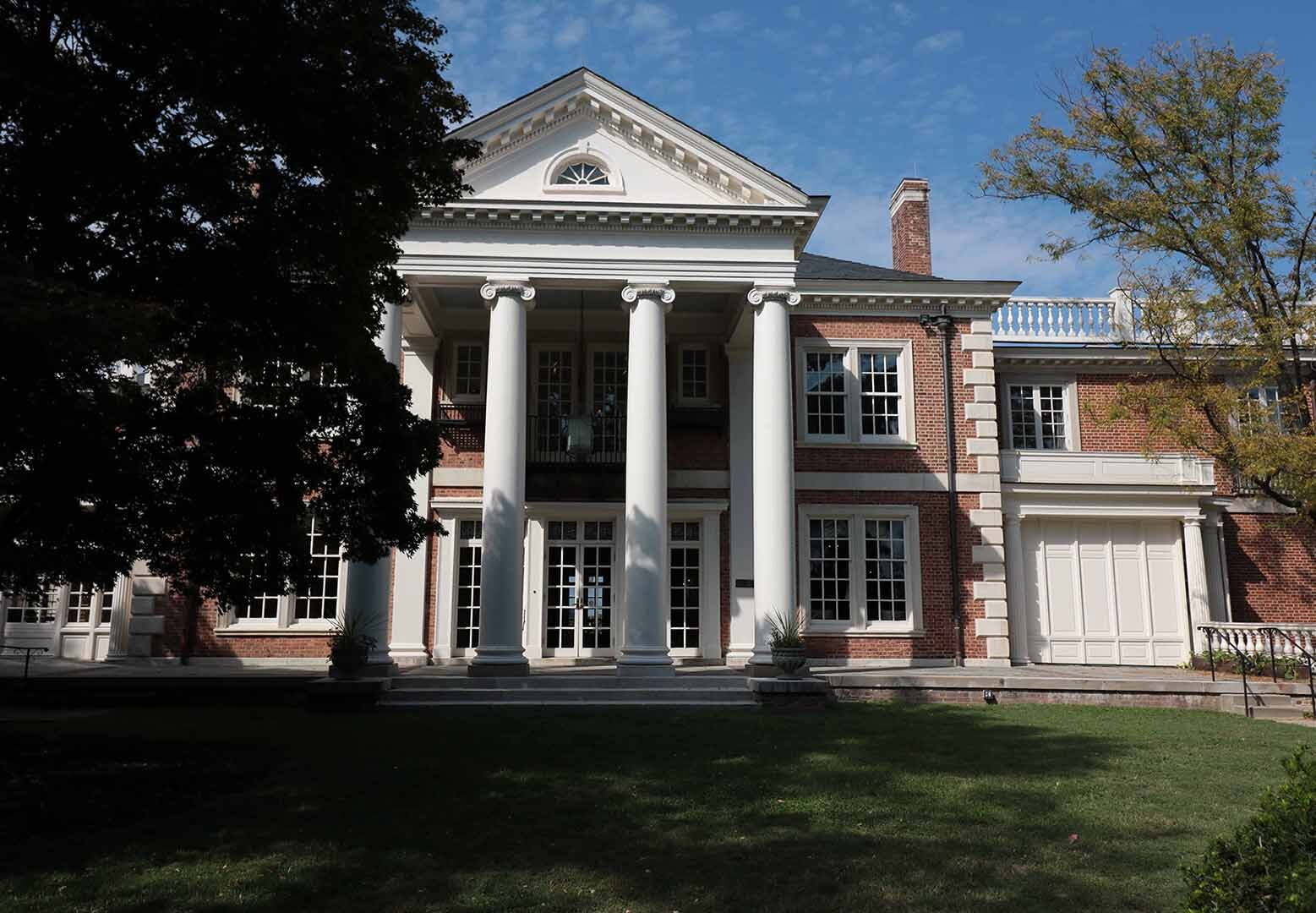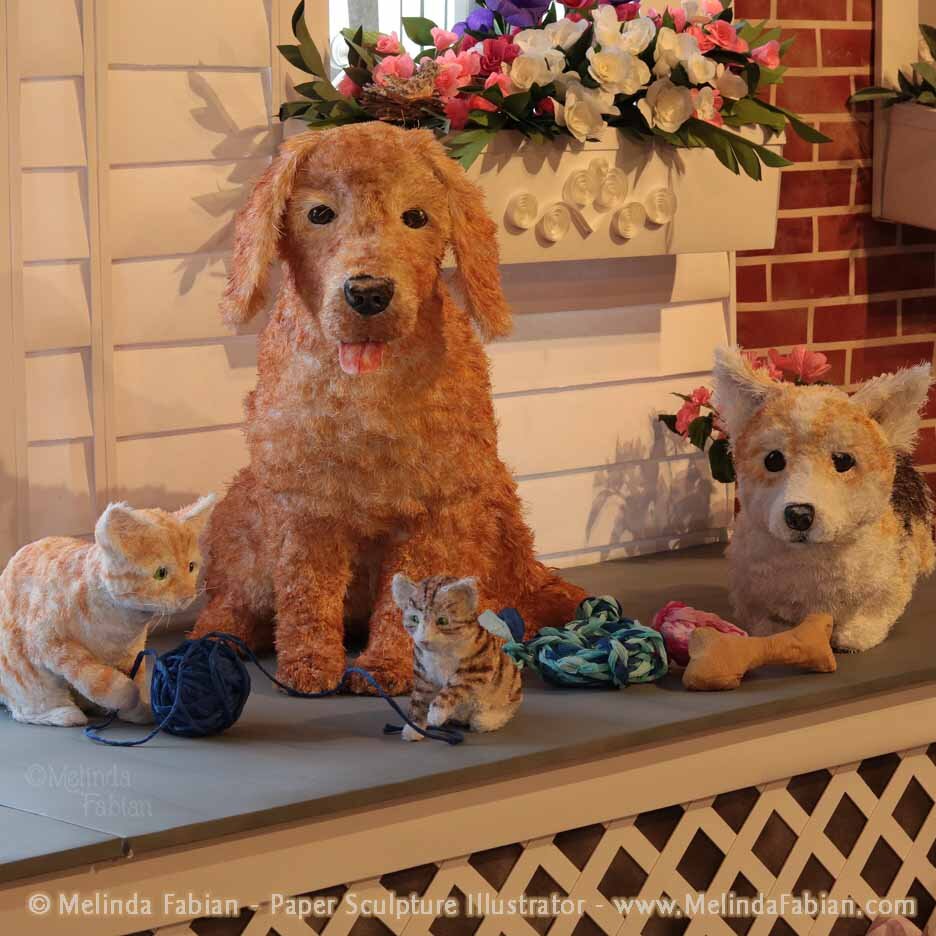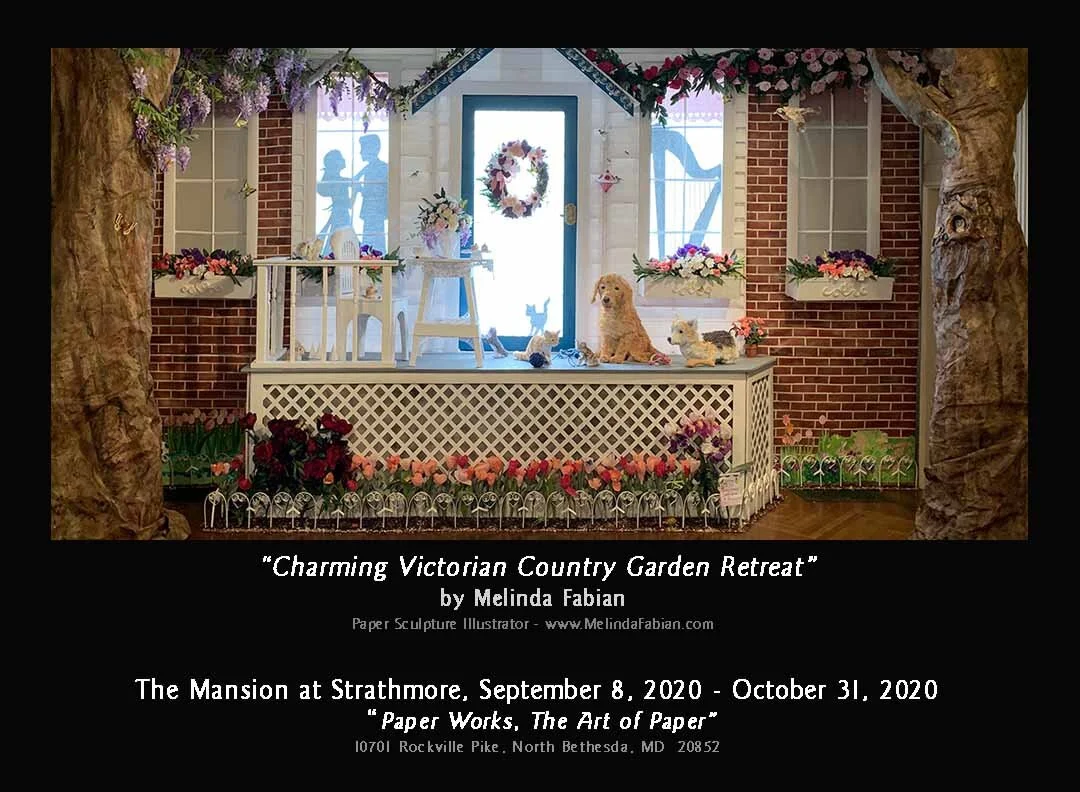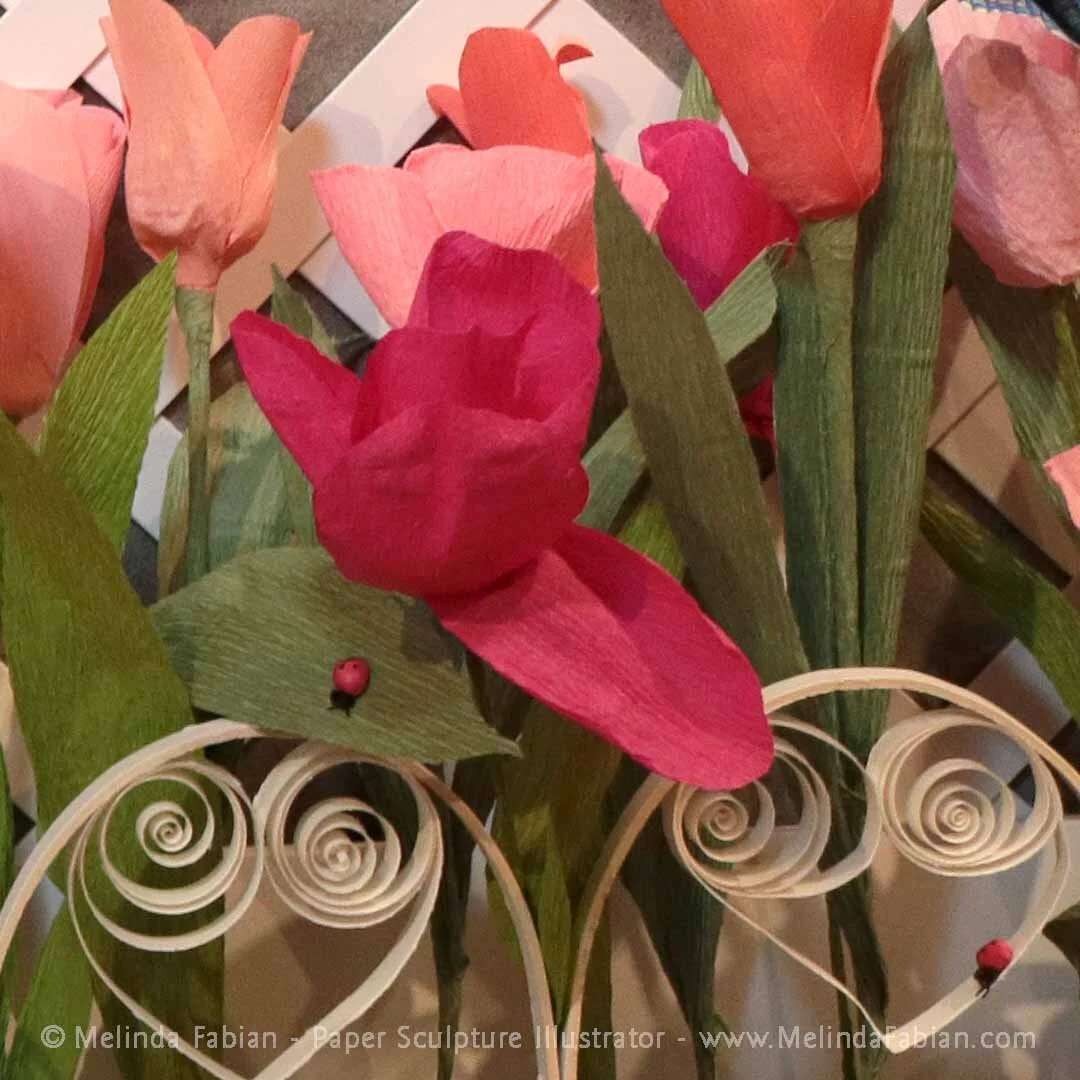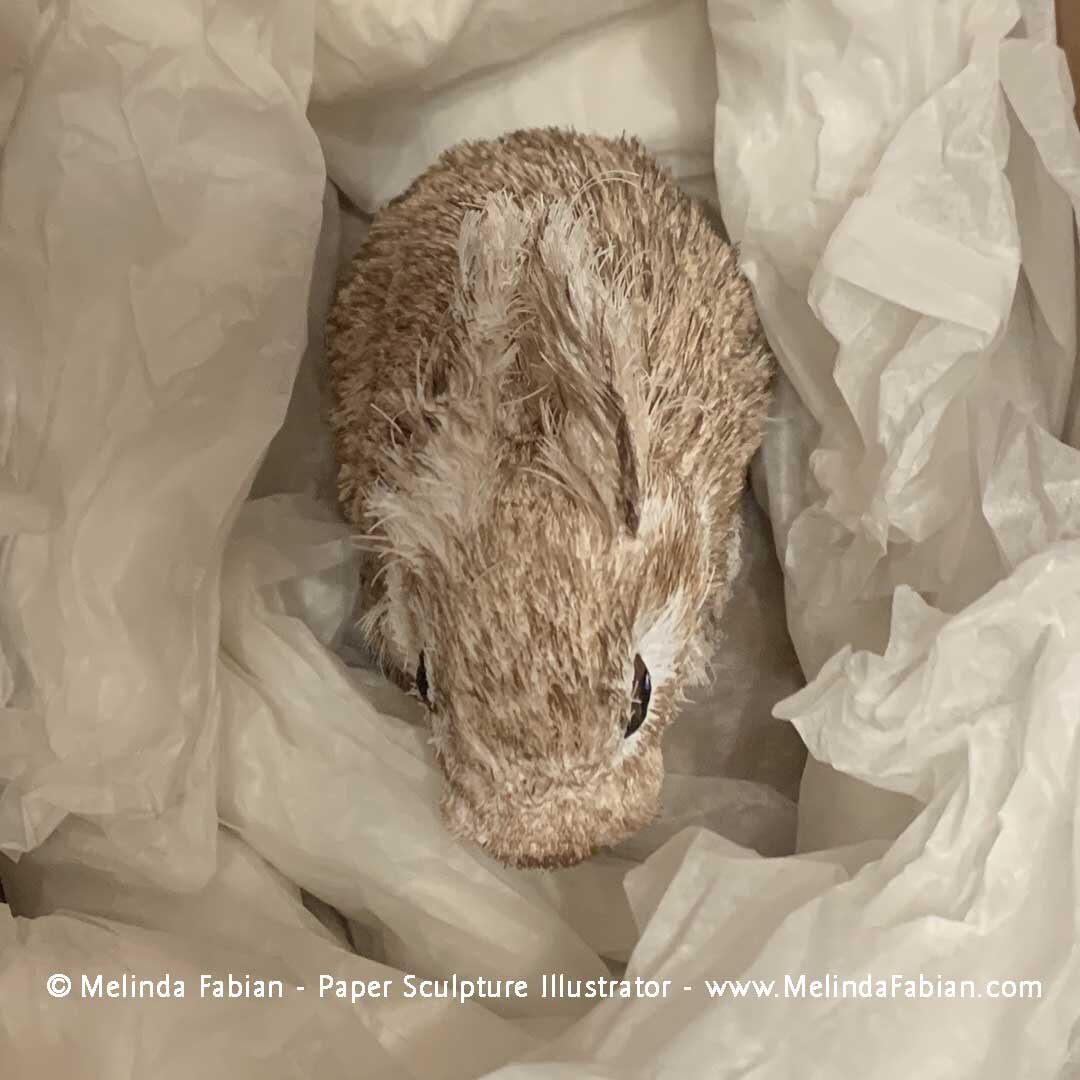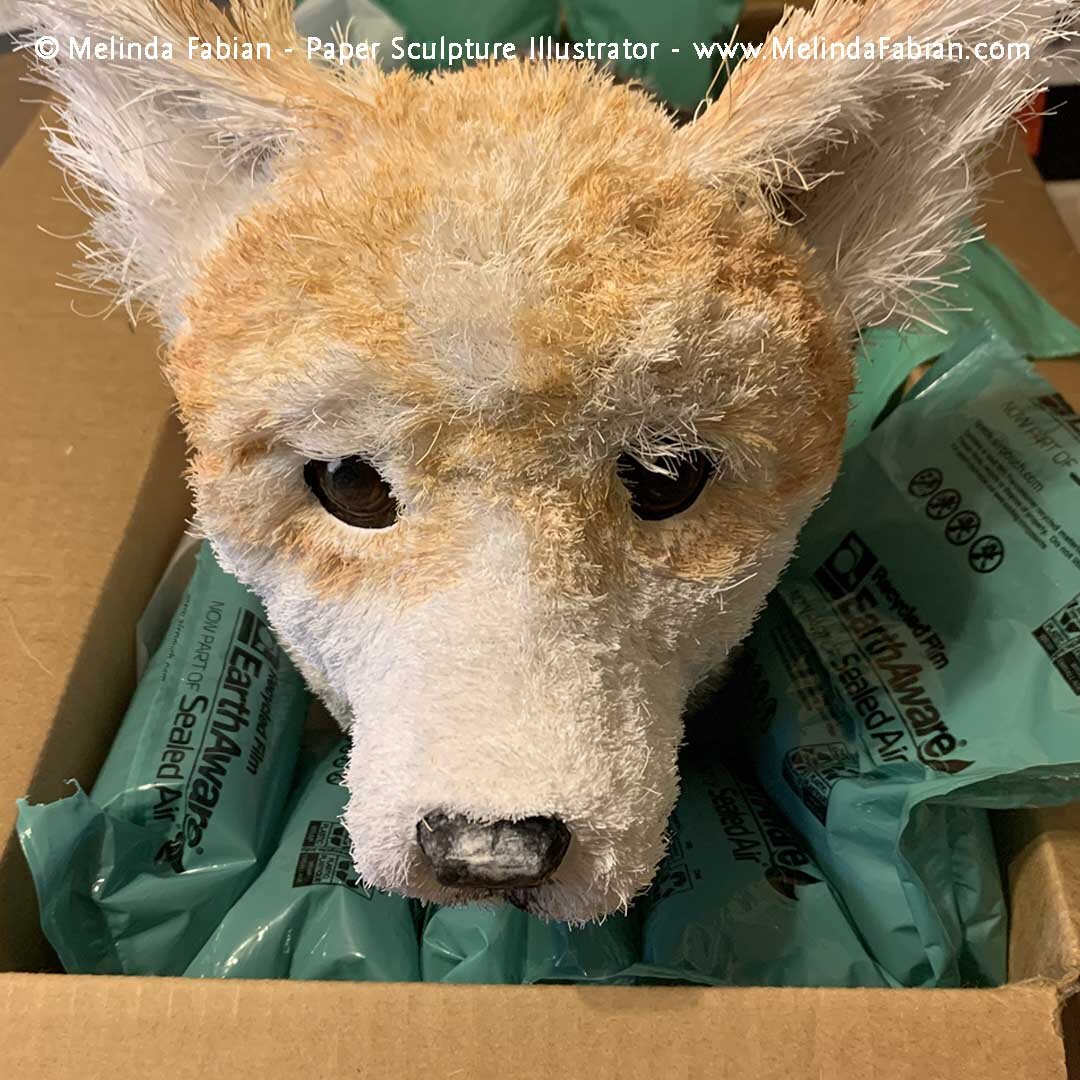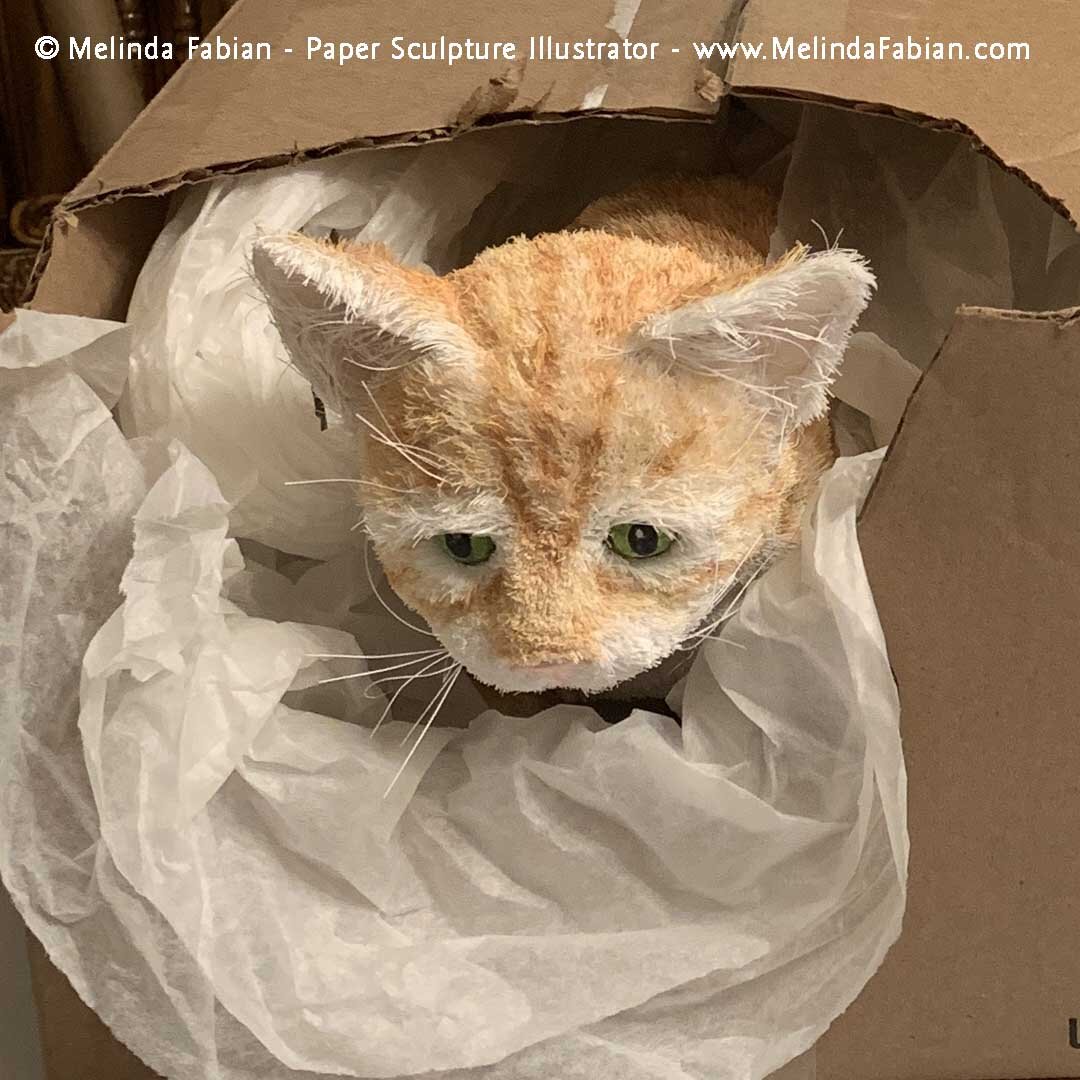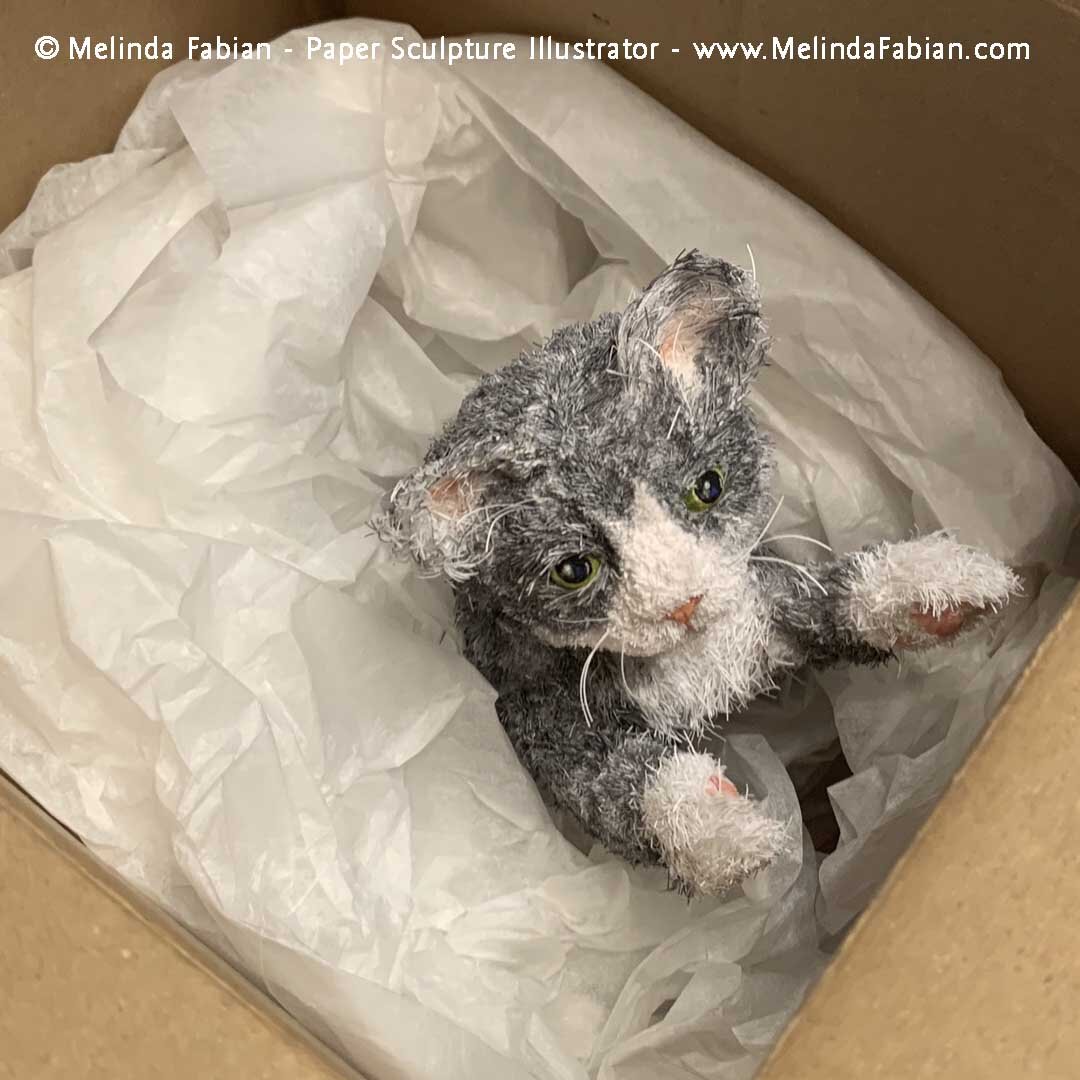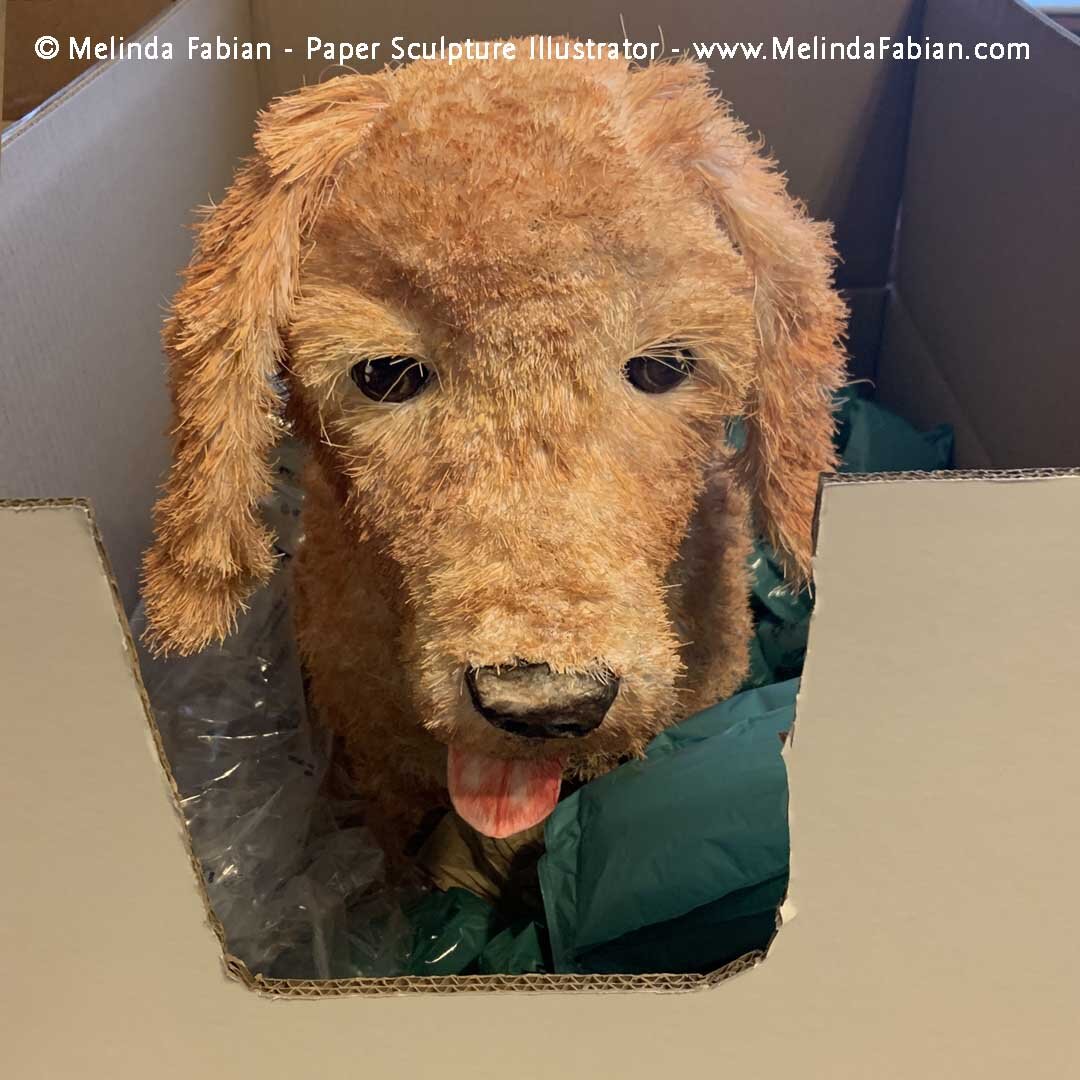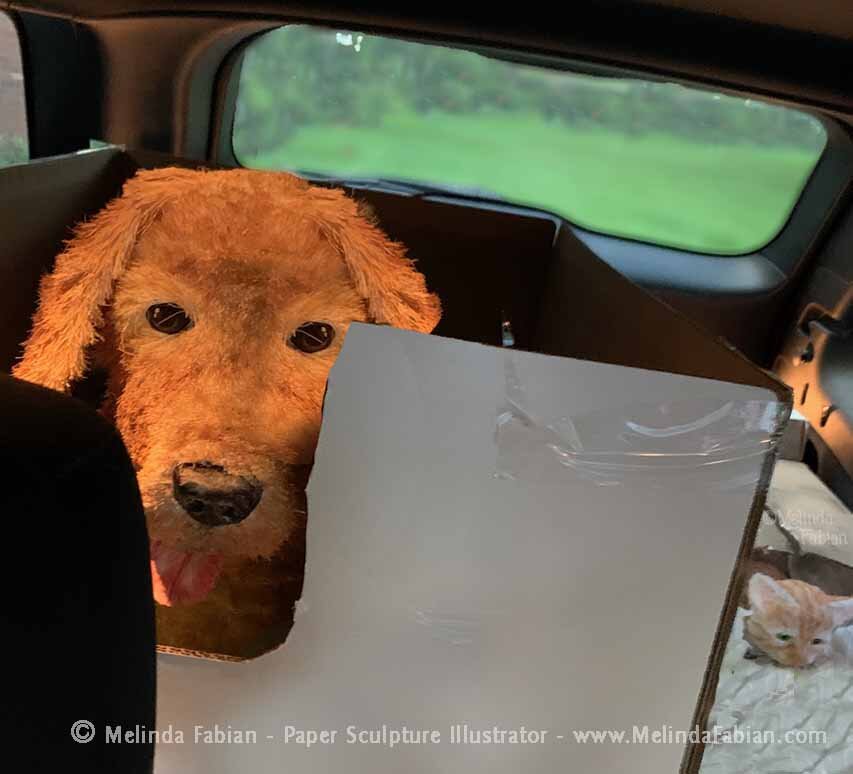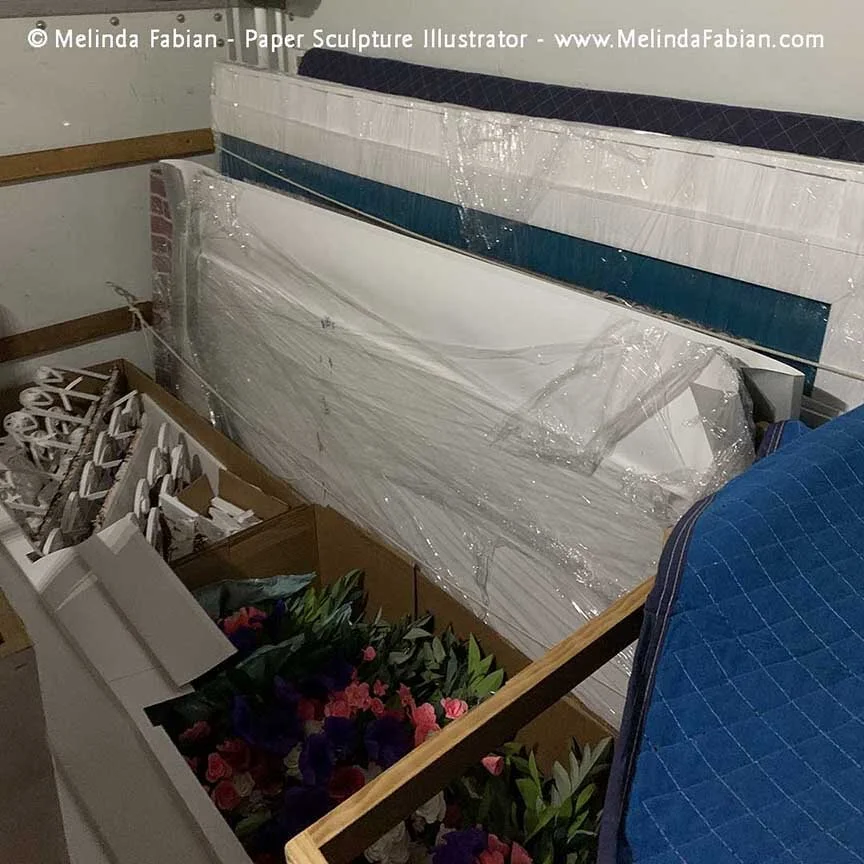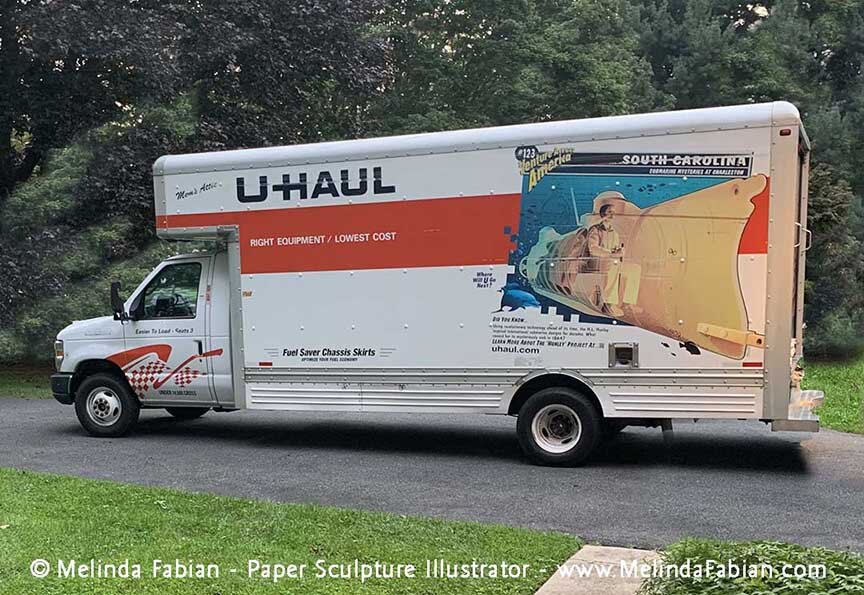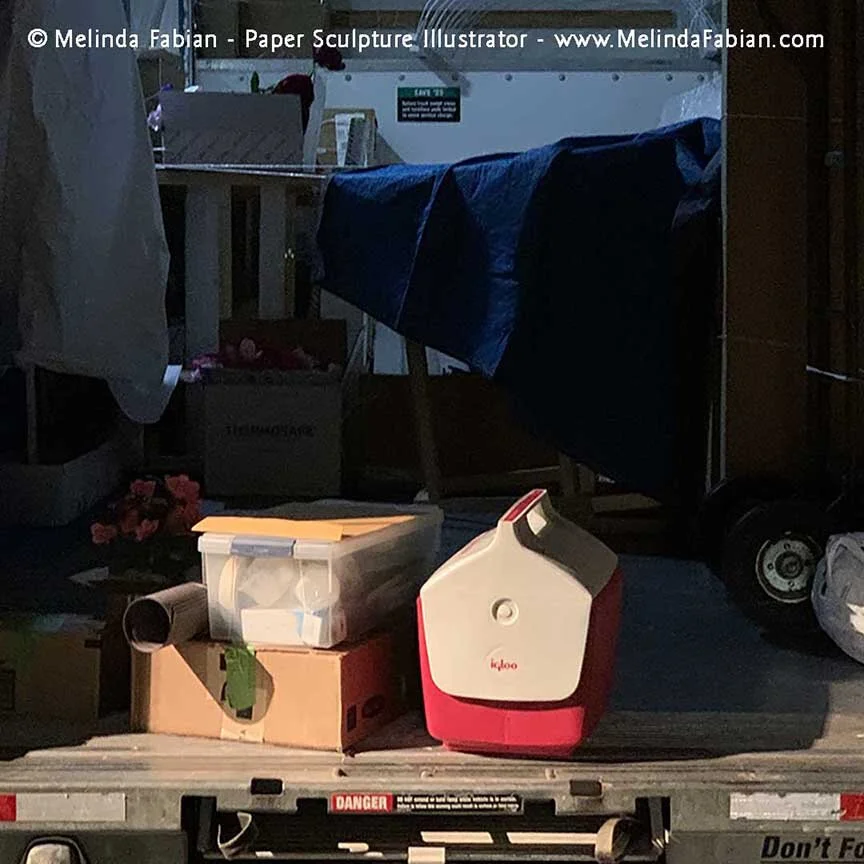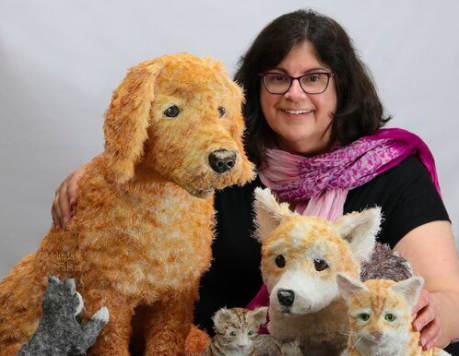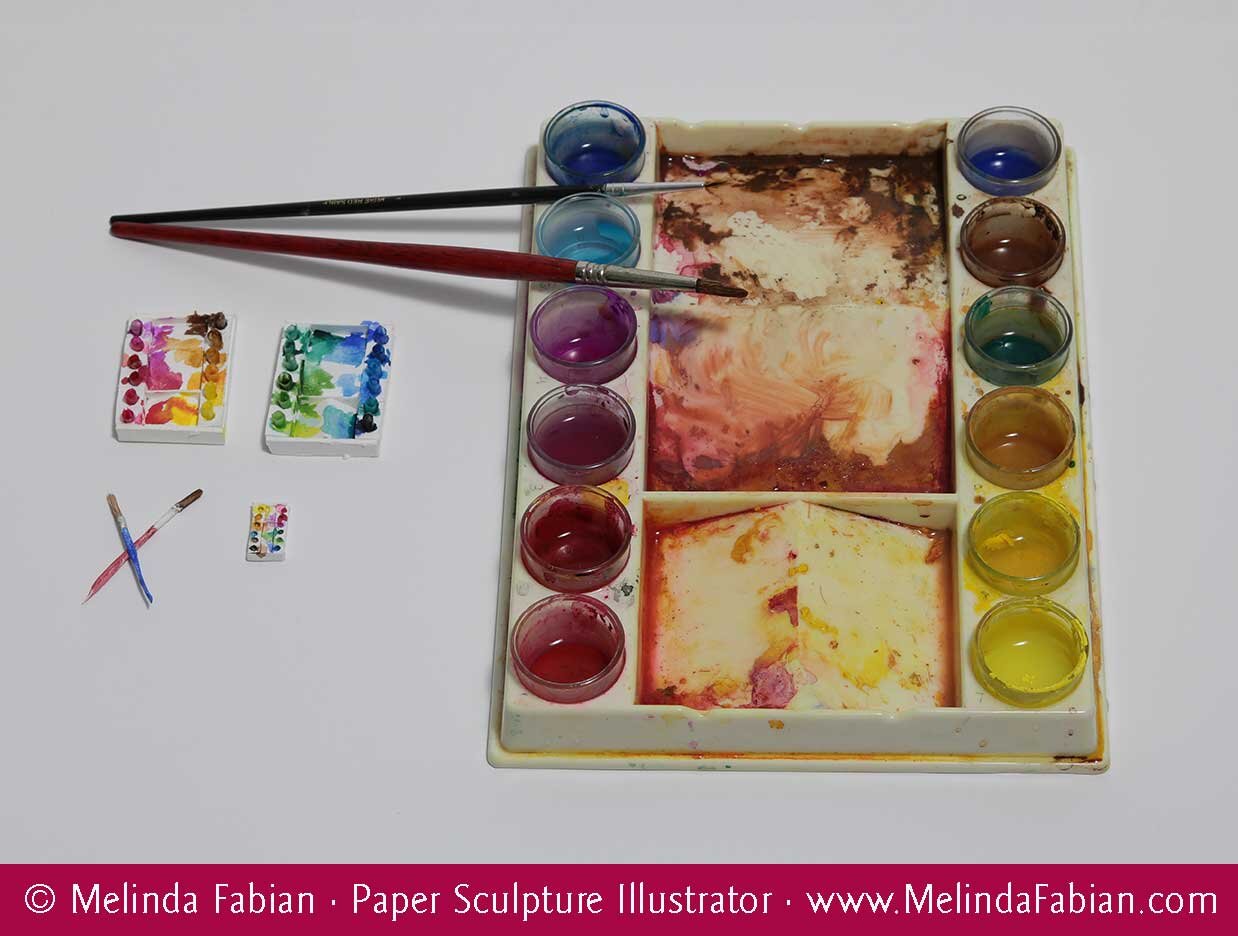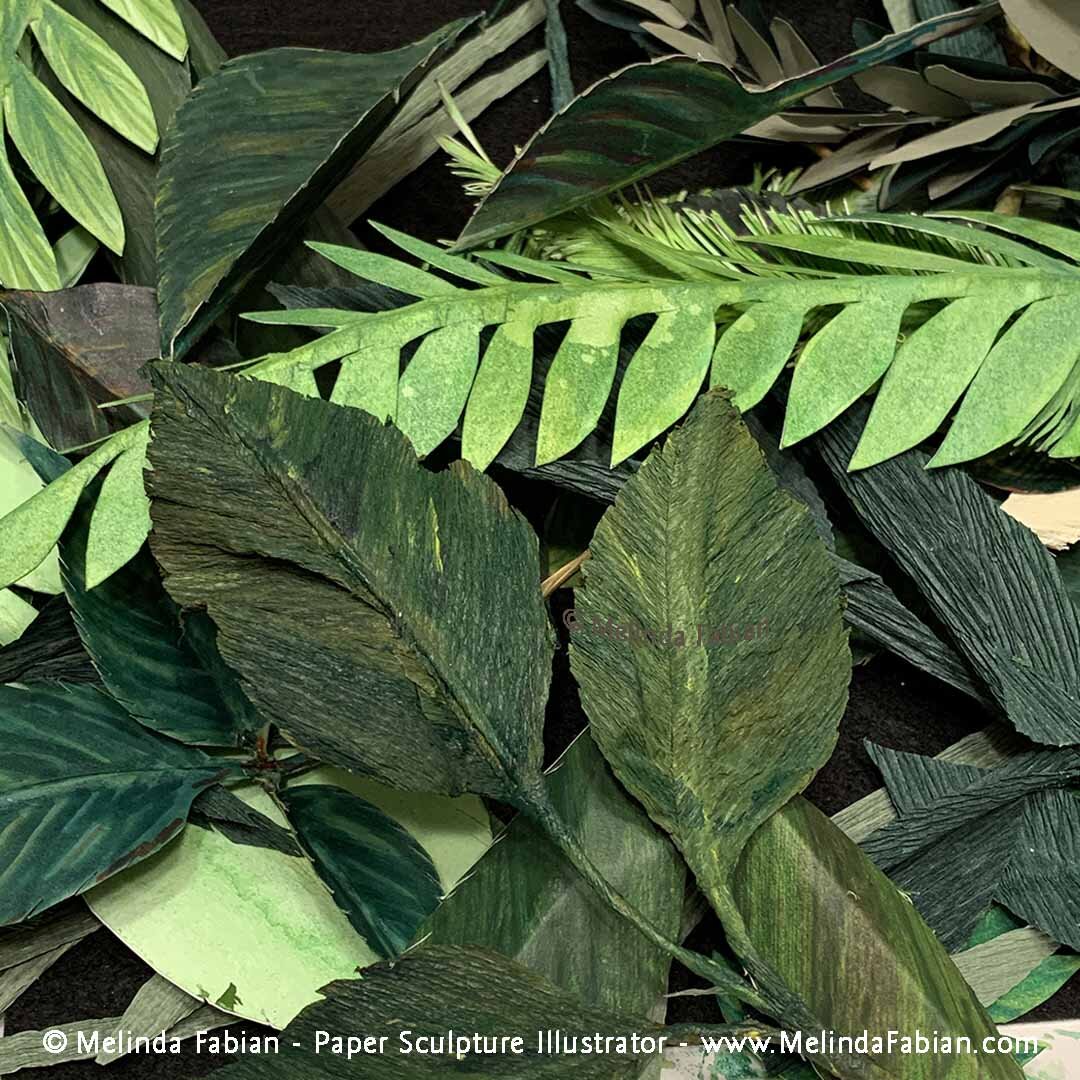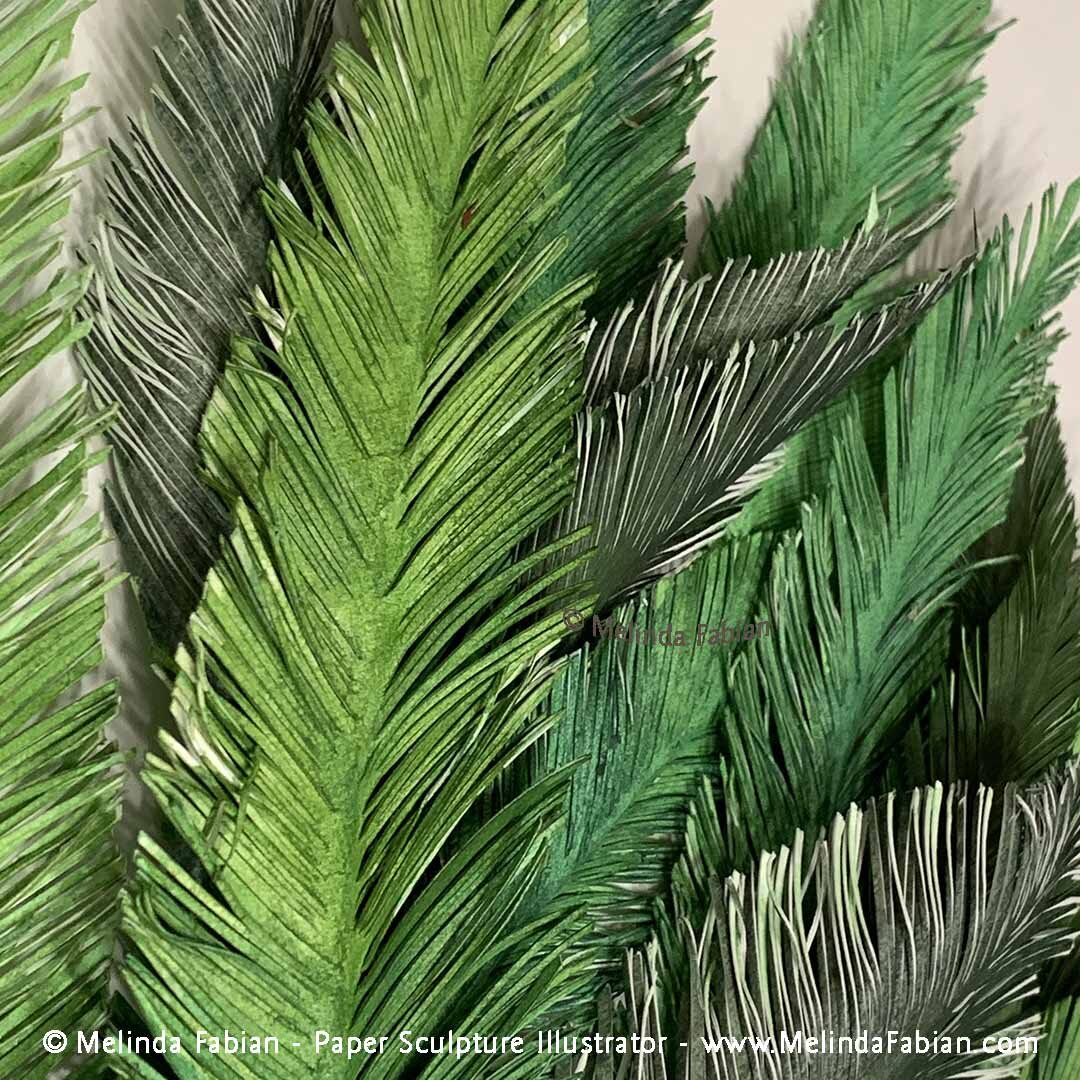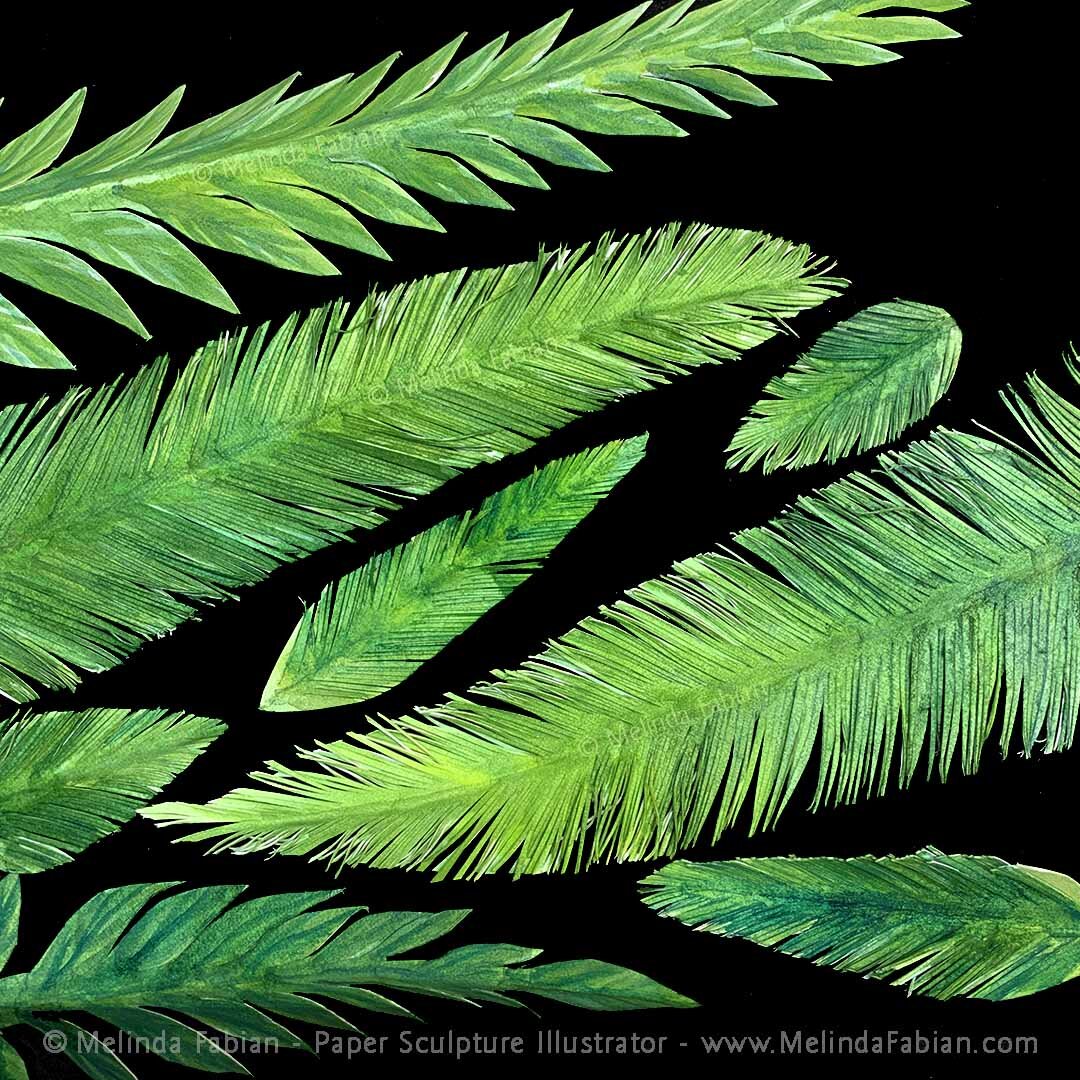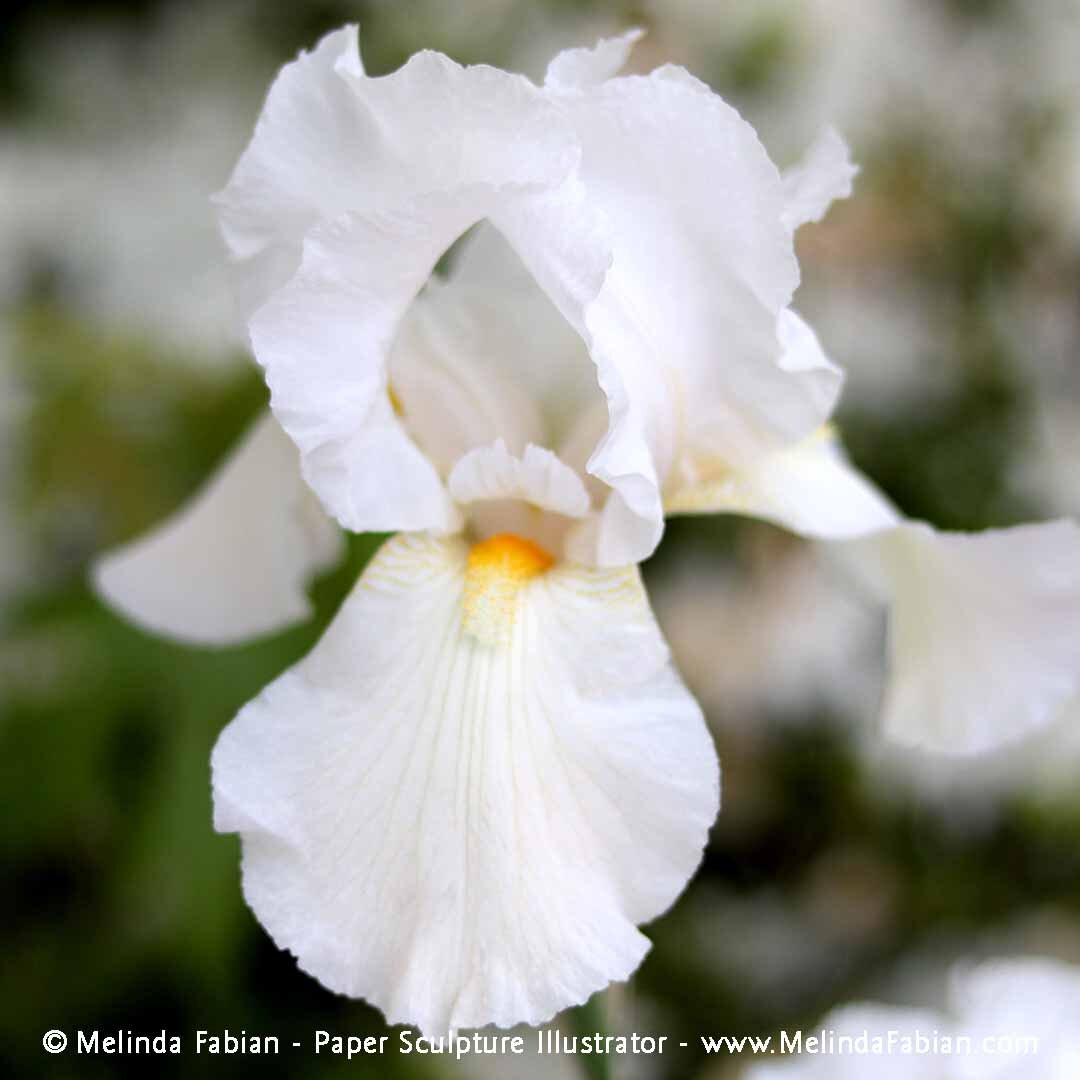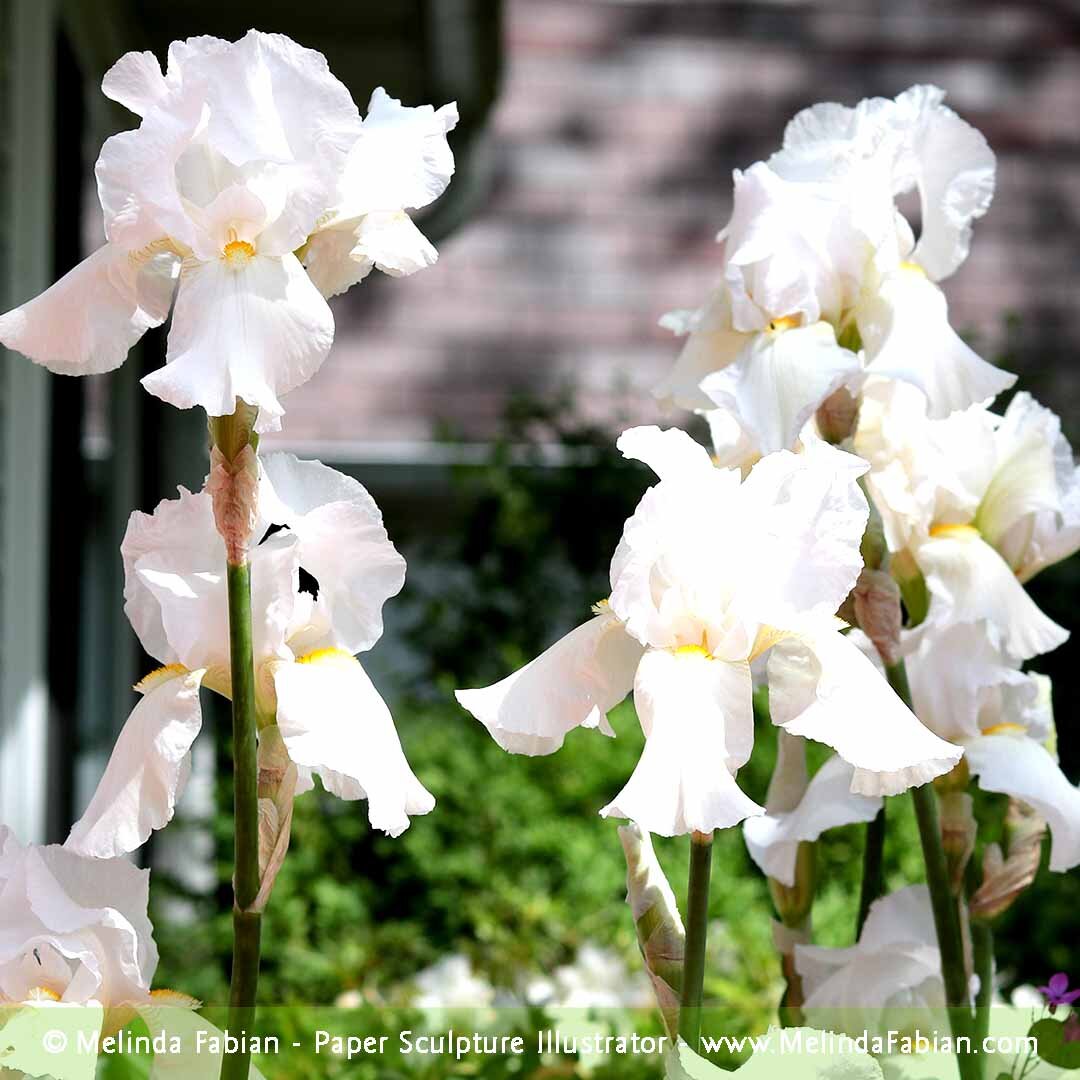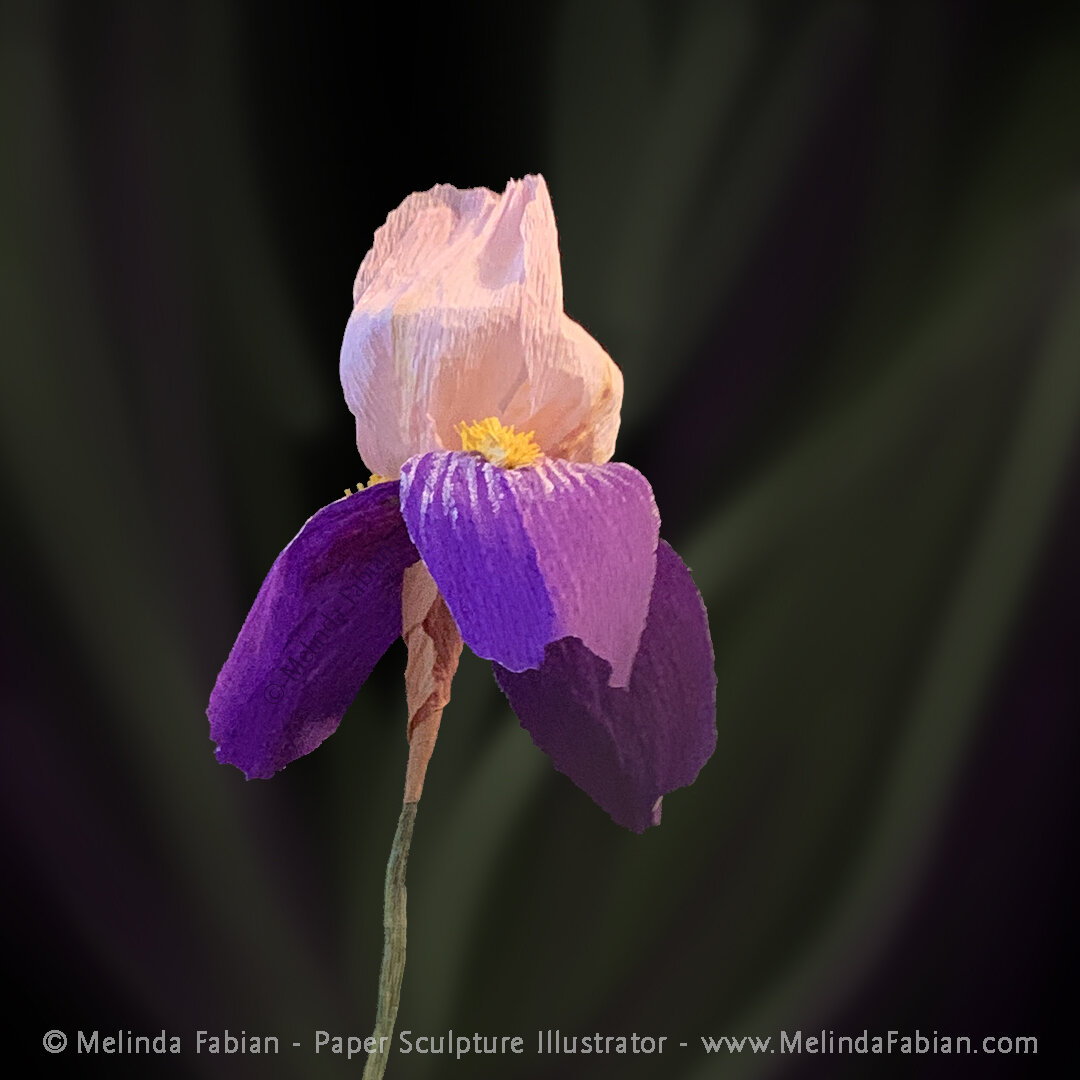Paper Sculpture Inspired by a Blank Canvas and It's Endless Possibilities
The inspiration behind “Let the Fun Begin” came from reflecting on that unique moment when an artist stands before a blank, white canvas—a clean slate full of potential. It is a space of endless choices and creative freedom, where nothing has been decided and everything is possible.
“Let the Fun Begin” delves into the quiet anticipation and limitless possibility an artist feels when faced with a fresh canvas. This compact work measures just 4.5" by 3.5" framed, yet it carries an expansive narrative, rendered entirely through the delicate interplay of white paper sculpted onto a vivid watercolor background.
The artwork is a three-dimensional paper sculpture that meticulously depicts a painter’s workspace. You’ll find a carefully arranged palette with circular wells, paint tubes scattered in casual disarray, and a brush—and a pencil—all crafted with precision from acid-free white paper and adhered onto a textured surface. The monochromatic white palette emphasizes form and shadow, turning the familiar tools of the artist into an abstract study of shape and volume. This white relief is set against a bright and dynamic backdrop of blues and teals, creating a sharp contrast that heightens the sense of depth and dimensionality.
The inspiration behind “Let the Fun Begin” came from reflecting on that unique moment when an artist stands before a blank, white canvas—a clean slate full of potential. It is a space of endless choices and creative freedom, where nothing has been decided and everything is possible. I wanted to express that quiet suspense and the exhilaration of beginning something entirely new. The title itself hints at this transition: the “white play” represents the pristine canvas, and the “begin” points to the spark of action, the moment when ideas spring to life.
What distinguishes this piece is its incorporation of sculptural elements purely through paper and paint, blending two-dimensional and three-dimensional art forms. The tactile nature of the paper gives the tools and palette a physical presence, inviting the viewer to consider the act of creation from a fresh perspective—not just as a visual image but as an object to be explored in light and shadow.
Through “Let the Fun Begin”, I invite viewers to pause and consider the magic of beginnings—the blank pages, fresh canvases, and untouched surfaces we all encounter at the start of creative ventures. This work honors that initial quiet moment, where potential hangs in the air, waiting to be transformed into something beautiful. It’s a celebration of the threshold before creation, when the real adventure starts.
This paper sculpture is a part of the International Miniature Art Show at Seaside Art Gallery and is available for purchase online or in person at the gallery in Nags Head, NC.
Giving My Grandfather's Sprinkling Can New Life
This old sprinkling can has moved with me many times to different locations — to different states and from house to house.
What do you see when you look at this photo? An old, tired rusty sprinkling can that has seen better days? A sprinkling can that should be tossed in the trash? An antique? Character?
This old sprinkling can has moved with me many times to different locations — to different states and from house to house. I keep thinking that one of these days, I am going to plant some flowers in it and it would make a pretty neat-looking planter inside my house. Or at least that is my excuse for not throwing it out.
The real reason I’ve kept it all these years is that when I look at that sprinkling can, I see a sprinkling can with a story behind it. Let me explain. This isn’t just any old sprinkling can. It was my grandfather’s, so when I look at it, my first thought is of him.
My grandfather was a kind person that I looked up to and looked forward to seeing every day. He took great pride in owning his own home and caring for his home and the people he loved. He was very meticulous about his lawn. The grass was always mowed to a perfect height; the sidewalks were edged -- no grass would dare grow past its boundary lines into the sidewalks and certainly no grass would grow between the sidewalk cracks.
He would fill up this sprinkling can from the outside faucet or sometimes use the garden hose to fill it up with water. He would water the beautiful flowers lining the patio — impatients or geraniums in the planters that set on the cement floor of the large patio and beautiful hanging baskets of impatients or begonia flowers surrounding the patio where we would sit outside during the summer months on the metal swings and listen to my grandparents talk about their day or about their family.
It may sound silly, having that entire story from just one old sprinkling can. But I think we all have memories that can be triggered from just looking at a small item from the past. Maybe it is an old piece of jewelry, your grandmother’s rolling pin or a serving dish that came out every holiday. You aren’t keeping that item because of the physical item. You are most likely keeping it because it reminds you of your loved one and fond memories.
I decided I wanted to make this antique sprinkling can a centerpiece for a paper sculpture, filing it with a bouquet of beautiful flowers, similar to the idea I have in mind for using it as a planter for house plants. Here is a behind-the-scenes look at making a paper sculpture.
First, I bought a potted red flower that just happened to be planted in a red sprinkling can, which I thought was a funny coincidence. I also picked up some gardening gloves and a couple of gardening tools. I arranged the items in a variety of different set-ups and took lots of reference photos with Pappy’s old green sprinkling can setting behind the other props. I shot the photos from different directions and from different angles.
Next, I was ready to get to work on this 3D paper sculpture. OK, not so fast! I needed more flowers! Yes, it is true, I never turn down an excuse to buy more flowers. But really, I needed to add more color to this sprinkling can picture. So, off to the store I went once again, searching for a variety of flowers to fill up my sprinkling can. Once I got them home, I took more reference photos.
As is usually the case with art, as you start working on your design, it evolves during the process, and that was the case here. I originally thought I would show the sprinkling can with one potted plant inside it, but after searching for different types of flowers — they are so beautiful and loved the colors — I decided to change it from a single potted plant to a bouquet of fresh-cut flowers filling up the sprinkling can.
I did a quick little watercolor sketch of the bouquet of flowers inside the sprinkling can and now the real fun begins! I get to start the paper sculpture part.
My 3D paper sculptures begin as white paper that is painted in watercolor and gouache. I started working on different elements that would be included in the final design, like the sprinkling can, gloves and spade. In the photos below, the pieces are setting on the wood base that the items will eventually be attached to. There is a glass dome that goes overtop of the sculpture to protect it.
Here are some in progress photos to give you an idea of what the little objects looked like in the beginning before they got painted. As you can see, I already painted a light shade of green onto the sprinkling can. The sprinkling can was difficult to construct out of just paper, especially the spout. On the one photo, I included an old penny sitting on the left side of the wood base to give you an idea of the scale of the piece.
Each little flower petal was cut out and painted. Even the grass was cut by hand. In the final piece, I wasn’t able to fit the little trowel onto the wood base and cover the final design with the glass dome. Instead, I drew up a couple of seed packets and added them into the final sculpture.
I also wanted to add a little buzzing bee to the piece. I like that it is not the first thing you will notice when you look at this piece and you have to find it among the flowers, just like in real life. Because of the bee, I thought it would be appropriate to title this paper sculpture, “Busy As a Bee.” I liked the play on words.
Paper Sculpture: ‘Can You Find My Lucky Four Leaf Clover?’
I wanted to make a whimsical, three-dimensional paper sculpture. This sculpture has a lot of details all made out of paper and paint. I will show close up details of the sculpture as I explain the story behind this piece.
I wanted to make a whimsical, three-dimensional paper sculpture for an upcoming miniature show. After doing some sketches, I came up with the idea of creating a little rabbit.
I wanted the bunny — who I call Flower — to be sitting on top of the hill she calls home. I also thought she needed a little basket to sit in so she can be comfy and cozy. I imagined that she is collecting and saving some of her favorite items and foods.
Now that I had my idea thought out and sketched, it was time to start working on all the pieces. Using white paper and a scissors, I cut lots of thin pieces of paper to create thin grass-like shapes. Then I took the grass shapes and formed them into a decorative hill for Flower to sit on. I wanted there to be a couple of holes at the base so she could stow away a special surprise.
Next I needed to make a tiny little “wicker” basket all out of paper, of course. I’ve always love woven baskets, especially the different styles and shapes. I have collected many different styles and varieties of baskets over the years.
After weaving an actual-size paper “wicker” chair and table for a large-scale exhibition, I wanted to see if I could make a miniature basket using just paper and paint. I started with white paper cut into narrow strips. I was debating what color to make the basket, but then realized I didn’t need to narrow myself down to one color or style.
So, I painted the narrow strips of basket weaving paper into a couple of different colors so I could make a variety of baskets. One basket would be used for this paper sculpture. I also did a few additional weavings to plan for some other ideas I have in mind. After the paper was dry, I started weaving the basket.
After I made the basket, I started cutting the papers to make the rabbit. I wanted Flower to be sitting up in the basket with her arms over the sides. I also wanted her to hold a bunch of flowers that she collected to decorate her little home with.
I wanted the basket to sit on top of the hill. Because it is an important feature of her home, I had to make a little decorative ‘doily’ for the basket to rest on. I wanted the basket to look fancy too, so I cut out little hearts and attached those to each of the bows on the basket.
Next, I started cutting out maple leaves and carrots — lots of carrots of course! Then, I designed the outside of the bunny’s home. I also added clover and one little flower as additional decorations.
And of course, I had to include one of Flower’s little friends — a cute, teeny, tiny turtle. After all, everyone needs a friend in their life. Sam the turtle was made from paper that I painted in golds and browns. I was able to fit him inside one of the little openings in the grasses on the side of Flower’s hill.
Next, I needed to find a good spot to place Flower’s prized possession — her lucky four-leaf clover! And that finishing touch led me to the title of this artwork, “Can You Find My Lucky Four Leaf Clover?” Most recently, Flower and her home were on display at the annual Miniature Painters, Sculptors & Gravers Society (MPSGS) miniature show at the Mansion at Strathmore near Washington, DC.
Miniature ‘Stars and Costars’ Under the Sea
I enjoy collecting seashells and have many different varieties. Some of them are small enough that I can display them in old printer drawers. One of my recent paper sculpture illustrations was inspired by some of the shells I have collected over the years.
I enjoy collecting seashells and have many different varieties. Some of them are small enough that I can display them in old printer drawers. One of my recent paper sculpture illustrations was inspired by some of the shells I have collected over the years.
This miniature paper sculpture illustration is three-dimensional. The shells come up and out of the piece of paper and are quite small. Even the sand on the beach is made of paper that was cut by hand and then painted in watercolor and gouache. The outside frame measures just 3.5 inches by 4.5 inches.
Sometimes when I’m working on a miniature painting such as this one, I use a 000 brush with just has a few short bristles. This allows me to add a lot of detail on such a small scale. The brush marks that I need to make are tiny, so I can only put a small amount of paint on the bristles.
By the time I move the brush from the paint to the painting, the paint is already completely dry. In order to remedy that, I will sometimes mix the paints right on the side of my hand. Then I can quickly move the brush immediately to the painting to add the necessary details. This is one of the adjustments I (and probably many others) make when working in such fine details in miniature art.
Here is a photo of me working on the “Stars and Costars” painting.
I wanted to really emphasize the colors and exaggerate the brightness of the shells, drawing attention to their beauty. I also imagine there are still many more “star and costar” shells under the sea that are yet to be discovered, waiting to show off all their glorious colors under the sea.
Teeny, Tiny, Little Miniature Things!
I’ve been making a large variety of teeny, tiny, little miniature things out of paper and paint. I am working on my next round of miniature art shows. Check out all the photos and you will get a glimpse into some of my upcoming miniature paper sculptures.
For the past couple of weeks, I’ve been working on several new pieces for some upcoming miniature art shows. Miniature art shows have a few requirements regarding artwork size.
The main rule is that the subject must measure one-sixth scale of the actual size. Most often, the image size cannot be any larger than 24 square inches. The outside frame measurements can’t exceed 48 square inches, which is a 6-inch by 8-inch frame. Generally, sculptures should be less than 6 inches in height.
Because of these requirements, I’ve been making a large variety of teeny, tiny, little miniature things as I am working on my next round of miniature art shows. I thought you might like to get a glimpse into some of these teeny, tiny, little miniature things.
Oh, and one other thing, just in case you are wondering, these items do seem to take even longer to make because they are so small. I often need to make a bunch of different, individual parts that will eventually go into the final art piece. Sometimes I make them several times until I get it small enough or until it looks just right.
Here we go. Click through the gallery to see al 12 photos!
Can you tell which items mentioned above were used in the following paper sculpture piece? This piece is titled, “Can You Find My Four-Leaf Clover?”
Settling Into a Brand-New Art Studio
Moving is usually a bit stressful. When you have a home-based business, such as an art studio, it adds additional stressors to the situation.
I recently relocated to Pennsylvania. Moving is usually a bit stressful. When you have a home-based business, such as an art studio, it adds additional stressors to the situation, or at least this has been my experience when moving.
After this move, I had to decide what supplies I would need right away to keep working. I plan on doing renovations in the studio. Many of my art supplies and reference books will need to be stored until after the renovations are complete. Therefore, I had to think through the resources I would want to have close at hand in the meantime. Right away, I knew I at least needed:
Paint brushes
Paints
Scissors
Glue
And of course, paper
Then I had to think ahead about the art shows that I want to participate in. What type of paper sculptures do I hope to complete for upcoming shows? Next I had to think about what reference materials I may need to complete those sculptures. Will I be framing the art, or will it be free-standing and placed under domes? I will need to keep those frames and domes nearby.
I also have finished, framed art that I need to keep track of. In an art business, things are always moving and shifting. Framed pieces need to be shipped to gallery shows or to a customer. If entering juried shows, those deadlines need to be tracked and I need to keep an eye on where my art is being shipped, sold, and sent out to clients.
With all my planning aside, several renovations have already occurred in my studio. First, the old paneling in the room was taken down and replaced with fresh dry wall. The rug was removed, and a new subfloor and wood laminate flooring was installed.
One tall and one short shelving unit was set up along with my large drafting table. Normally I have another shelving unit in my studio loaded with all my reference books. The walls in the room still need to be painted, so I don’t want to unpack all my books because it will be too hard to move the shelves if they are loaded up with books.
So, for now, almost all of my reference books and sketch books are still boxed up. I am discovering this is not all that convenient as I am trying to paper sculpt. I often refer to my sketch books for ideas, so despite all my planning, I still have to dig through various boxes to find what I need. This takes a lot of extra time — but it’s all a work in progress.
Stay tuned for what else I have planned with renovations in my new studio space!
A Squirrel Takes to the 'Soapbox'
In this paper sculpture titled, “On My Soapbox,” I wanted to see if I could recreate a squirrel’s woodland scene in miniature using only paper and paint.
In this paper sculpture titled, “On My Soapbox,” I wanted to see if I could recreate a squirrel’s woodland scene in miniature using only paper and paint. I love the challenge of creating a miniature piece. This entire piece fits under a glass dome that measures 4” in height by 4.5” in width, which includes the wooden base.
The squirrel in the scene is gathering nuts, getting ready for the winter ahead, while the newly fallen leaves are beginning to change colors during the colorful autumn months. I wanted the scene to look realistic, from the squirrel’s furry coat and fluffy tail to the acorns and leaves around him.
Like my other paper sculptures, I want viewers of this squirrel to find a moment of escape that evokes an emotional response, whether that’s joy, delight, surprise, nostalgia or tranquility. Can you smell the cool autumn air and hear the squirrel chirping to his nearby friends from his tree trunk soapbox? Perhaps he is reminding them to collect all the acorns they can before the cold winter sets in. You might see your own version of the story as you look at the squirrel in his natural habitat.
I want my paper sculpture habitats to serve as a reminder that we can find joy in our everyday intersections with nature. Stopping to appreciate these moments — like a squirrel with his acorn in the fall — can be a reminder of the importance our environment plays in our lives and the animals around us. I want to capture these snapshots that we often overlook in our busy, everyday lives.
It is these little moments in time that can bring us so much joy and help use tune into the important things in life. I also hope to make you smile when you realize what you can do with just paper and paint, a steady hand, and a bit of patience!
Discovering a Moment in Time at an Online Art Gallery
Have you visited an online art gallery recently? It is wonderful that we have the ability now to visit museums in this way, in the comfort of our home during this time when we aren’t able to travel.
Have you visited an online art gallery recently? It is wonderful that we have the ability now to visit museums in this way, in the comfort of our home during this time when we aren’t able to travel.
For today’s blog, I was going to write about artist Joseph M. W. Turner, a famous oil painter. I was always drawn to the skies in his paintings because of the colors and the light. So I recently headed over to the National Gallery of Art’s website. I searched through a list of artists under the heading “collection highlights” until I came across one of his instantly recognizable works. However, another painting caught my eye too.
The painting, titled “Young Girl Reading,” was by Jean Honoré Fragonard, an artist I was not familiar with. The painting depicts a young girl reading her book. She looks as though she is totally engaged in her book, not even noticing anything else going on around her. Fragonard seemed to capture a moment in time with this oil painting.
The vibrant color of the young girl’s yellow dress was also a surprise. So often in the old master paintings, I often feel like the colors are dark and dreary. This painting seems so different, and I thought it had a very illustrative feel to it, which I am of course also drawn to.
“Young Girl Reading” by Jean Honoré Fragonard (Image courtesy of the National Gallery of Art)
After a little more reading, I discovered that Fragonard was a French oil painter in the middle to late 1700s and was one of the most prominent French painters at that time. He used quick brush strokes and bright, vibrant colors in many portraits in his fantasy figures series.
I like the expression his figures have, especially their eyes. Fragonard seemed to be able to capture expressions — just at the right moment — to portray that perfect look in the scene.
I hope you take a few moments to visit one of the online galleries. You may discover a new artist that you enjoy seeing, just like I did. Not to mention, looking at art can be a nice way to relax and enjoy the moment.
How Viewers Perceived My Country Garden Retreat Installation
With my “Charming Victorian Country Garden Retreat” exhibition, I hoped people viewing the art would take away feelings of contentment and peace.
As an artist, when I create a new piece, I am not only considering the piece I want to make, but also the feeling, thought or emotion I want the viewer to experience and take away from my art. I like creating fun art that engages viewers with my art, hoping it makes them feel joy.
One of the problematic issues as an artist, like many of us who work alone in a studio, is you can only imagine how your audience will receive your art and hope it is in the way you planned. But, unless you are at a gallery watching or talking with guests, you can never really be certain how the art was perceived.
With my “Charming Victorian Country Garden Retreat” exhibition, I hoped people viewing the art would take away feelings of contentment and peace. The porch scene would be a place where they could want to come and have a cup of tea — a place to relax and enjoy themselves. And, of course, as they look at my art, I was really hoping they would begin to notice all the details I added such as the family pets, birds, butterflies, ants, bumble bees, and the not-so-obvious items such as a dragon fly, caterpillars, and pinwheels. I wanted to help capture this moment in time for viewers, long enough to realize the beauty in these everyday experiences we often walk right past.
I also was curious what people’s favorite part was of my country garden paper sculpture installation. I have my favorite things to create, and even one or two things that I would prefer to not make again. But what about those who saw it in person?
This installation was such a large project — about 1.5 years’ worth of work — and I was curious how my plans compared with people’s real experiences of the work. I decided to send out a mini survey to some of the people who viewed my art installation in person. I kept asked two questions:
1. What was your favorite part of my paper sculpture installation?
2. How did it make you feel when you viewed my art?
Here were the results from my very unscientific survey:
Perhaps unsurprisingly, people had many different answers for their favorite part that spanned the entire installation. The animals, including the turtle, owl, corgi and dogs, cats, all the butterflies and moth, and the character of the ants. One said they liked all the animals, and the “sense of playfulness.”
For others, it was the setting that really stood out, including the hand-woven wicker paper sculpture table and chair, grapevine wreath, flowers in the vase, the silhouette of the couple dancing, and the teacup. The wisteria, peonies and all the flowers also got votes, along with the hidden objects throughout the installation.
When I asked how the art made people feel, I also got such a wonderful variety of responses as to what spoke to people. Many expressed the detail and finding hidden treasures among the work made them smile — there was a joy in finding something new every time you look at it. There was also surprise that the entire installation was made out of paper!
Some found a sense of love and romance because of the couple dancing in the window in the background of a nostalgic porch scene. Others felt content and peace, relaxation in a peaceful garden, nostalgia for simpler times and a reminder of being young.
“It's such a creative representation of how beautiful things can be we walk past every day and seeing it in art form where there are new things to discover every time you look is a reminder to do this out in the real world too,” said one visitor.
I am happy to see the fur critters were so popular, since they are something that I really enjoy making. It was a pleasant surprise to see a nice variety of items people liked, especially because I included such a spectrum of smaller pieces for the installation, from the trees to the smallest ant. I was also glad that several people mentioned it reminded them of yesteryear — feeling nostalgic, relaxed on the porch, and of course, the fun of looking for all the objects.
20 Fun Facts About My Country Garden Paper Sculpture Installation
This week, I thought I might share some fun facts about the installation, including how much paper it took, how many roses are in the installation and more.
You may have seen my FAQ post from last week, where I answered some of the most common questions I get about my large-scale paper sculpture installation, “Charming Victorian Country Garden Retreat,” currently at the Paper Works show at the Mansion at Strathmore. This week, I thought I might share some fun facts about the installation, including how much paper it took, how many roses are in the installation and more. Let me know what you think!
1.) It took me 1.5 years of working on the installation full-time to complete “Charming Victorian Country Garden Retreat.” I worked 40–60 hours a week in the first months, but the last six months, I was working on the project 60–80 hours a week, sometimes more.
2.) It took approximately six weeks to sketch, come up with a tentative schedule, develop a plan in detail of the display, and research art papers I was going to use in the installation.
3.) Approximately 29 square feet of paper was used to make this squirrel.
4.) It took five weeks to construct, build, assemble, and weave this table and chair — this does not include the time it took to do the research, sketches, design, and planning out how I was going to make the furniture or the amount of time it took to prepare the paper to begin the weaving process. That took about an additional two weeks.
5.) I made three miniature cardboard models of different chair deigns to help me figure out the construction of the chair and a basic design shape.
6.) Every piece of paper that was used to weave the chair and table had to first be hand-cut to the correct width.
7.) To make the “brick” walls, I spray-painted paper. I added sponge painting overtop to give the bricks added texture.
8.) The first harp silhouette I cut out tore when I was hanging it in the window. I had to remove it and cut a new harp silhouette. The second harp turned out even better than the first one, so it was a happy accident!
9.) Did you see the soccer ball in the flower garden? The soccer ball is also three-dimensional and comes out of the flat paper background. I added it to the flower garden because I wanted to add some hints that children “live” here too, not just grown-ups.
10.) In many of my illustrations and art projects, when possible, I will include things that relate to members of my family. One of several in this installation is Cricket the cat, which is named after my daughter’s cat. He was also used as a reference point for this furry critter.
11.) It takes 2.5 hours to create one wisteria flower because each petal is individually attached to the stem.
12.) Over 80 wisteria flowers were paper sculpted for this installation.
13.) Over 75 roses were used in the climbing roses.
14.) Over 80 white and ivory roses make up the trellis.
15.) It took four days to install the full paper sculpture piece at the Mansion at Strathmore.
16.) Over 15 ladybugs inhabit the scene. (Can you find all of them?)
17.) There are also four bumble bees in this garden retreat.
18.) At least 17 butterflies can be seen at the exhibit.
19.) Four cats, two dogs, two squirrels, one chipmunk and two adorable bunny rabbits live at the “Charming Victorian Country Garden Retreat.”
20.) My favorite thing to make for the “Charming Victorian Country Garden Retreat”? Honestly, I loved making all of it. Yes, there were some aspects of the final paper sculpture piece that were more challenging than others, but truly, I loved every minute of this project. I am so thrilled to be a part of Paper Works: The Art of Paper. Thank you Strathmore!
‘Charming Victorian Country Garden Retreat’: Frequently Asked Questions
From how much paper I used to my inspiration for the paper sculpture, here are answers to 12 of my most frequently asked questions.
As I have been talking about my “Charming Victorian Country Garden Retreat” installation in the Paper Works show at the Mansion at Strathmore, there are several questions that I have been asked often. From how much paper I used to my inspiration for the paper sculpture, here are answers to 12 of my most frequently asked questions.
1. What was your inspiration for this piece?
I want to use my art to bring families together, creating three-dimensional habitats that remind people to look for the little everyday moments that happen all around us that bring us joy and serve as a reminder of what is really important in life.
2. How long did it take you to make this paper sculpture installation?
I was asked to participate in the Paper Works show in October 2018. In April 2019, I had my first in-person meeting with the curator, Lesley Lundgren. After that meeting, I began working on the installation in earnest. So, about 1.5 years working full time, beginning with the sketches, then continuing on to create each individual paper sculpture element for the installation.
3. How big is the final installation?
“Charming Victorian Country Garden Retreat” measures 12 feet high, 18 feet long and 30 inches deep.
4. How much paper did you use to make this sculpture?
That is a difficult one to calculate. I will have to get back to you on that one.
5. How did you get the full installation to the Mansion at Strathmore?
I created everything in smaller sections and individual pieces for two reasons. First, it was easier to transport. I also wanted each item to be saleable so it could be sold as one large installation piece or as individual pieces. I rented a truck to take the larger pieces to Strathmore on the first day, and then on the second day, I took all the furry critters in the car. The pets seemed to like the drive because I didn’t hear a peep out of them the whole way down! You can read more about the journey on my blog here and here.
6. Is the entire installation really made out of paper?
Yes, everything you see in “Charming Victorian Country Garden Retreat” is made out of paper. I used a variety of different types of papers. Some are very thin papers and some are thicker papers. The paper siding and painted brick walls are attached to a narrow wood frame, using the same concept that an oil painter uses when they attach their canvas to a frame.
The flower stems are paper covered wire so they will stand up straight and tall. Originally, I thought I would try to make the flower stems out of paper too, which I have successfully done in the past, but I quickly realized it would take too long to make that many paper stems for all the flowers I needed for this installation. It would have added a couple more weeks or months to the project of this size. So, I covered the wire stems in paper.
7. How many flowers are there total in the installation?
There are 80 wisteria flowers, over 75 tulips and more than 100 roses. The rose trellis has over 75 roses.
8. How long does it take to make one paper sculpture wisteria flower?
It takes approximately 2.5 hours to make each wisteria because there are so many petals to one flower and each petal is attached individually to the stem.
9. Is the grapevine wreath really made out of paper?
Yes, even the grapevine wreath is hand-sculpted using painted papers.
10. How long did it take you to make the large dog?
It took me about 5–6 weeks to make the large golden retriever, Rusty. All of my furry animals are made out of paper. There is no wire armature or structures hidden inside their body. I bend, fold, cut, twist the paper into the necessary shapes to create the skeletal and muscular structure for each animal.
I want to keep these signature pieces authentic and made entirely out of paper and paint, with of course some adhesive to hold the sculpture together. The animals are all very sturdy. Rusty weighs about 10–15 pounds! Each animal is made out of the finest art papers that are then painted in watercolor and gouache.
11. What is your favorite type of paper sculpture to make?
I really like making a variety of different things, but my favorite would have to be the furry animals. I like the challenge of creating fur from just paper and getting the paper sculpture to a life-like appearance. One of my favorite critters in “Charming Victorian Country Garden Retreat” is the last one I made — the little bunny rabbit.
12. Is any of “Charming Victorian Country Garden Retreat” for sale?
Yes, absolutely! The entire installation is for sale as one piece and each individual item within the installation is for sale as well. I also have individual framed pieces available for sale or you could order a piece or purchase a commission. If there is something you are looking for, you can find my contact information here.
There’s still time to see “Charming Victorian Country Garden Retreat” in person at the Mansion at Strathmore, now through Oct. 31. To learn more about planning your visit, head here.
Capturing a Moment in Time
When I was thinking through what I wanted to create for my large-scale paper sculpture exhibit for the Mansion at Strathmore, I felt I had to take a step back and first think about the guests that will view my art.
When I was thinking through what I wanted to create for my large-scale paper sculpture exhibit for the Mansion at Strathmore, I felt I had to take a step back and first think about the guests that will view my art. What did I want them to see? What feeling do I hope to evoke when they view my artwork?
When I am at a museum looking at art, I like the feeling of being drawn into a piece, taking a step closer to get a better look to examine something special in that piece. Perhaps it is the colors, the brush strokes, the details or the subject matter or the emotions.
For my large-scale paper sculpture illustration exhibition, I wanted viewers to feel happy, excited and have some fun with my art. I want to draw people in by adding tiny elements and details I love to include in all my work. I want visitors to stay for a bit, so they can enjoy the space, feel part of the scene. I want my paper sculpture to be so real viewers feel like they’re seeing real wisteria, hearing baby birds chirping, getting ready to eat yummy desserts and watching a ladybug climb up the tulip petal.
I realized I wanted to capture a moment in time. In our busy world, how can we slow down and take a moment to appreciate what’s around us? That’s what I wanted to accomplish in my paper sculpture.
We often miss little moments in our everyday life. As a child we may have noticed the colors of the flowers or caught the squirrel scurrying away or the ants marching along the path. These moments keep happening around us, but they’re easy to miss and take for granted. Even watching the family cat playing with string or the color of the dog’s fur in the evening sunlight.
In my “Charming Victorian Country Garden Retreat,” I’m asking you to pause, take a look and remember just how much beauty can be found in many moments in our lives. It is exactly these little moments that add up over time and are really important. The whole world is exciting and new and we don’t have to go far — it is right there in front of us, and often best enjoyed with those we love the most.
I have always wanted people to feel joy when they view my art and hopefully they can also have some fun while looking at the entire piece. I want to use my art to strengthen family bonds, from young children to parents and grandparents, sharing in an experience created through my work — bringing families together with my art.
Come and visit my art at the Mansion at Strathmore, in person or online. Look closely and tell me, what can you find? What memories does it remind you of when you see it? Perhaps the next time you are outside at the park or on your own front porch, enjoying a cup of tea, you may look up and hear the birds chirping and notice the little chipmunk at your feet, eating the acorns that fell from that large oak tree. So smile and enjoy this moment in time!
Critters Are Moving to the Mansion at Strathmore
Because my paper sculpture animals are more fragile than many of the other pieces going into my large-scale installation, I wanted to take them separately.
On my first installation day, I rented a truck to take the large paper sculpture items for my “Charming Victorian Country Garden Retreat” installation to the Mansion at Strathmore. On the second day, it was time to take the critters to the mansion.
Because my paper sculpture animals are more fragile than many of the other pieces going into my large-scale installation, I wanted to take them separately and not risk them being jostled around too much in the back of the truck.
To pack up these cute furry, handmade, hand-sculpted, critters, I needed to figure out a way to pack them safely without altering their appearance — such as the cute little nose on the bunny rabbit or the fluffy tail on the squirrel.
It seemed like the best way to pack up these cuties was to make a little nest for them to sit in. Using acid-free tissue paper, I carefully made them nests. I didn’t want the whiskers on the cats to become damaged, so I let their little faces stick out of the boxes just like they are sitting in a pet carrier. Well, like the most well-behaved cat ever sitting in a pet carrier.
They looked so cute all wrapped up in their boxes and packed up inside my car – all ready to travel to The Mansion at Strathmore in Bethesda, MD for installation day No. 2!
On My Way to the Mansion at Strathmore
Today’s story begins near the end of my process. The work in my studio is completed, and my installation is about to leave my studio and make its way to the Mansion at Strathmore.
For over a year, I’ve been working on a large-scale project for the Mansion at Strathmore in Bethseda, Maryland. I was asked to be a part of the Paper Works show. My installation, “Charming Victorian Country Garden Retreat,” is 18 feet long, 12 feet high and 3 feet in depth. In the past, I’ve created booth designs for trade shows and for art shows, but this is the first installation I have ever done out of paper at this size. It has been a new experience and I am excited to share with you some of the steps I went to in order to create a successful installation.
Today’s story begins near the end of my process. The work in my studio is completed, and my installation is about to leave my studio and make its way to the Mansion at Strathmore. Because it is such a large installation, I purposely designed the entire piece in small pieces and manageable sections that will all come together into one large scene. Some of the sections though are still too large to transport in my car, so I had to rent a truck. The largest sections of the piece are 7 feet high by 4 feet wide, though are all lightweight. It may be easier to transport, but there are a whole lot of pieces.
It took a full day of packing to everything ready to go, including extra papers just in case something tears, breaks or creases and needs to be repaired. I used many different types of papers to create the installation so that alone was a lot to take along. I try to be prepared for the worst-case scenario and hope for the very best. I also needed to pack up the tools I use such as glues, scissors, adhesives, and whatever else I could think of that could possibly help me construct the final installation. The Mansion is about 1.5 hours from where I live, so I needed to be prepared because I could just run home.
We loaded most of the truck in the evening and then first thing in the morning, drove to Bethesda where everyone was waiting for us. We had some extra hands to help get everything in place and complete the installation. I was so grateful there were people there to help us unload the truck and to help us to begin installing everything. In total, it took us four days to complete the installation and add all the final details. Stay tuned for more behind-the-scenes scoop on “Charming Victorian Country Garden Retreat.”
Opening Day for ‘Charming Victorian Country Garden Retreat’
This is the moment I’ve been waiting for, Sept. 8 2020! Today is opening day of the show “Paper Works: The Art of Paper” at the Mansion at Strathmore in Bethesda, Maryland.
This is the moment I’ve been waiting for, Sept. 8, 2020! Today is opening day of the show “Paper Works: The Art of Paper” at the Mansion at Strathmore in Bethesda, Maryland.
My 18 foot long by 12 feet high exhibit titled, “Charming Victorian Country Garden Retreat,” is featured in this amazing show at Strathmore. I am so honored and thrilled to be a part of the show.
After working on this piece for 1.5 years, it is so exciting to finally see my installation all come together into one large-scale exhibition. I built the paper sculpture art in small sections, so to see it all pulled together as I had conceptualized it after so long is really something.
The installation is made out of paper, from the painted brick walls, to the white paper siding, wicker table and chair and of course all the furry critters that have become a part of this retreat. I hope my art helps to remind us the importance of enjoying the simple moments and joy we can find when we retreat into these moments.
In this exhibit it may be the chirping of the baby robin or watching the playfulness of the kitten or corgi playing on the porch. And if you look closely within this setting, in this habitat, you will find ladybugs, butterflies, cocoons and a praying mantis to name just a few — all the things that enrich the habitats we find ourselves in every day.
I can’t wait to show you my work. You can get a sense in the photos below. Plus, over the next several weeks, I will be blogging about the process and include some behind-the-scenes videos and photos. Please keep checking back for more.
I would also love for you to see “Charming Victorian Country Garden Retreat” in person. For information about visiting, check out the show’s official page on the Strathmore website here. And don’t forget to join us for a free virtual art reception on Thursday, Sept. 17 at 7 p.m. ET.
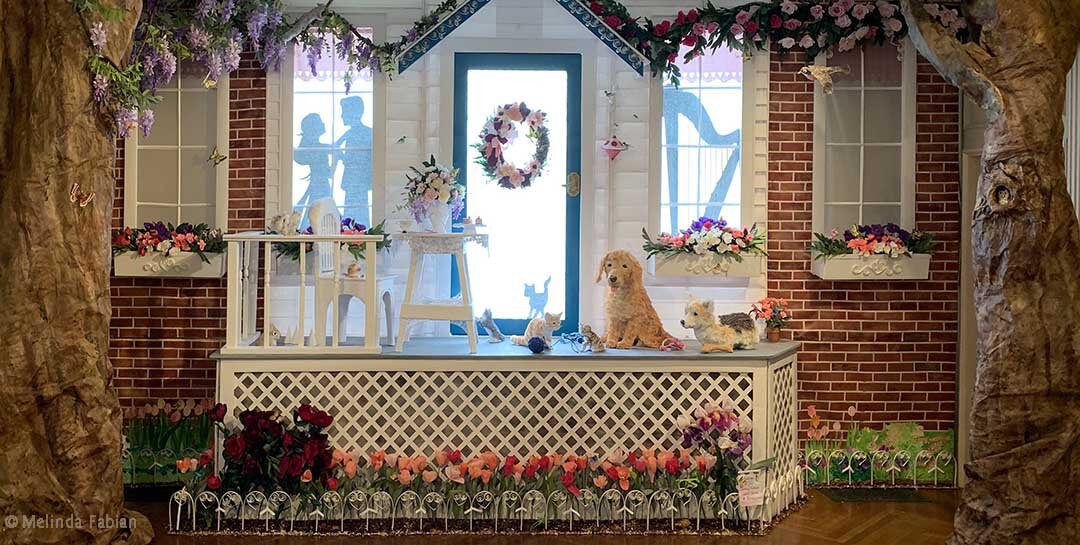
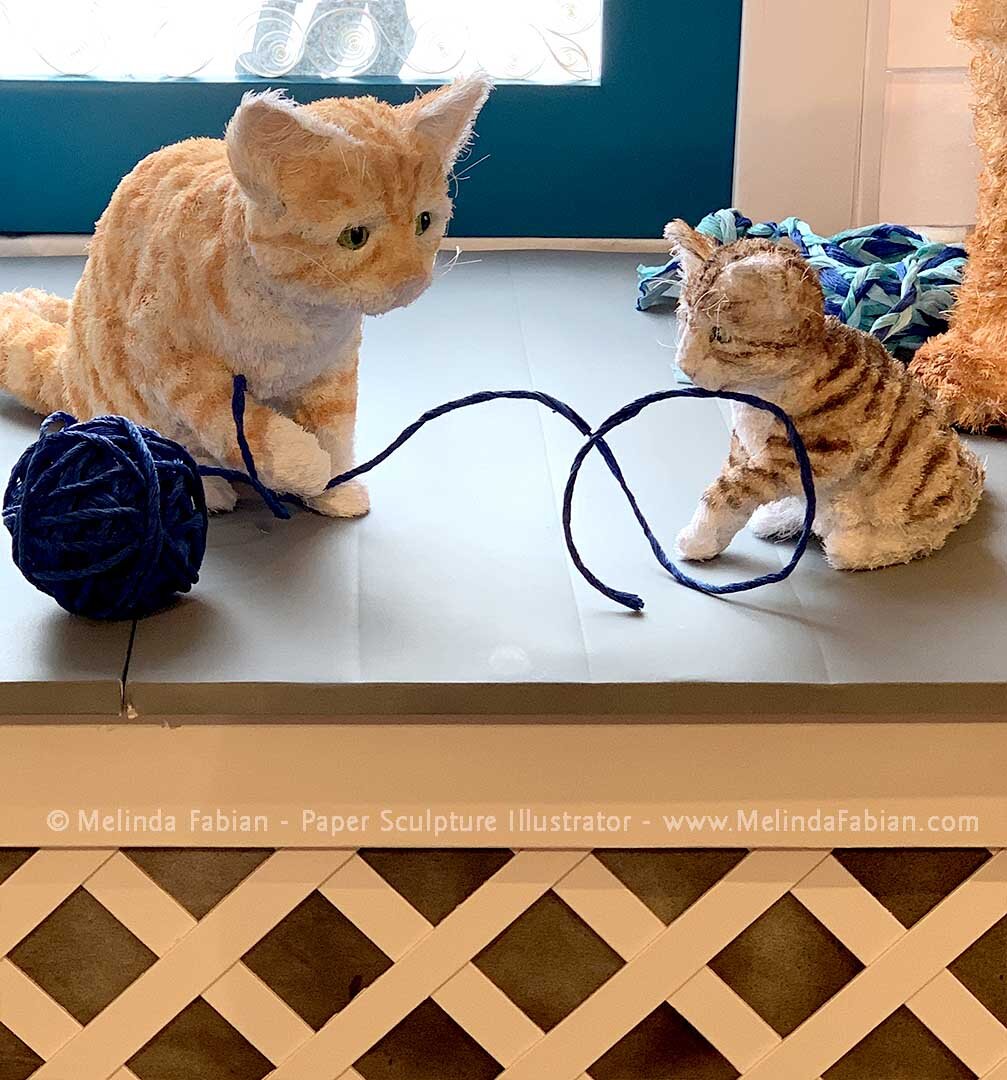


For Immediate Release
Melinda Fabian’s 18-foot piece will be the focal point of Paper Works: The Art of Paper at the Mansion at Strathmore.
Local Artist’s Paper Sculpture Country Garden Retreat Featured in Strathmore Gallery Show
Melinda Fabian’s 18-foot piece will be the focal point of Paper Works: The Art of Paper at the Mansion at Strathmore
BEL AIR, Md., Sept. 8, 2020 — Local Bel Air, Maryland, paper sculptor and illustrator Melinda Fabian will be the featured artist at a new exhibit opening at the Mansion at Strathmore in North Bethesda from Tuesday, Sept. 8 through Saturday, Oct. 31. The show, Paper Works: The Art of Paper, brings together 11 paper artists who use paper as the focal point in their creations, including Fabian’s large-scale paper sculpture installation.
Titled “Charming Victorian Country Garden Retreat,” viewers of Fabian’s 18-foot installation in the Paper Works show can expect an idyllic setting just outside a country cottage that reminds us of a simpler time. The piece is one in a series of Fabian’s habitat sculptures, which capture the simplicity, joy and beauty of simple moments in time often taken for granted.
“While ‘Charming Victorian Country Garden Retreat’ is made out of paper and paint, it is my hope this habitat will remind us of the importance of creating real spaces in our lives that can be our safe haven,” Fabian said of the installation. “I want my work to create an opportunity for viewers to reflect on the healing power in our everyday intersections with nature.”
Visitors to the retreat are welcomed into a serene setting with a beautiful garden framed by wisteria, roses and tulips. The family pets play on the front porch where the wicker table is set with exquisite afternoon snacks. Hidden creatures, like ladybugs, a praying mantis and a chipmunk inhabit the scene for those who look carefully. Fabian’s installation combines hand-sculpted paper elements painted in gouache and watercolor to bring them to life.
Paper Works: The Art of Paper was curated by Lesley Lundgren, Strathmore’s director of exhibitions. Other artists featured in the show include Kate Norris, Ashely Chiang, Gina Gwen Palacios, Daniel Lai, Marylouise Roach, Rosa Leff, Leigh Suggs, Lucrezia Beerli-Bieler, Jennifer Deppe Parker, and Ronni Jolles.
The Mansion is operating with new hours, along with extra COVID-19 safety precautions. Several virtual events will be held throughout the show’s run, so keep an eye on the show’s website. Learn more at https://www.strathmore.org/mansion
About Melinda Fabian, Illustrator
Award-winning illustrator Melinda Fabian creates realistic yet whimsical art designed to bring families together. Melinda’s signature work features paper sculpture designs, which seamlessly blend three-dimensional, hand-sculpted paper elements and watercolor and gouache illustrations to create lifelike scenes. Her imaginative designs literally jump off the page — the swish of a cat’s furry tail or a busy bee’s landing — causing viewers to do a double take upon realizing they’re not just flat paintings. Melinda’s paper sculpture illustrations have won several awards in galleries across the United States. She also created an award-winning line of Can You Find?® hidden object greeting cards, games and jigsaw puzzles as the creative director for the company she previously co-founded, Rocking Chair Studio. Melinda has more than 35 years of experience as an illustrator, freelancing for magazines and publishing companies, and holds a bachelor’s degree in communication design from Kutztown University in Pennsylvania.
About Strathmore
Strathmore presents and produces exemplary visual and performing arts programs for diverse audiences; creates dynamic arts education experiences; and nurtures creative ideas and conversations that advance the future of the arts. The Mansion at Strathmore is located at 10701 Rockville Pike, North Bethesda, MD, one half-mile north of the Capital Beltway and immediately adjacent to the Grosvenor-Strathmore station on Metro’s Red Line. For further information or tickets, call (301) 581-5100 or visit www.strathmore.org.
Contact
Melinda Fabian, melinda@melindafabian.com
###
Get a Studio Sneak Peek in Strathmore Art Talks
In June, I had the opportunity to sit down with Strathmore exhibition coordinator Gabrielle Tillenburg to give viewers a little insight into my upcoming paper sculpture installation at the Paper Works show at the Mansion at Strathmore
In June, I had the opportunity to sit down with Strathmore exhibition coordinator Gabrielle Tillenburg to give viewers a little insight into my upcoming paper sculpture installation at the Paper Works show at the Mansion at Strathmore, “Charming Victorian Country Garden Retreat” — including a look inside my studio!
In the two talks — one for kids and one for adults — I showed off some of the furry creatures that will make an appearance, including Rusty the dog and his corgi sidekick. Other creatures, like a squirrel and cardinal, also make an appearance, along with a close-up preview of the delicious treats set on the table.
You don’t want to miss this preview for my upcoming installation, so you can watch both videos below! The first art talk is great for kids:
And there’s an art talk for the adults too if you want to know more about my tools and creative process:
The Paper Works show will run at The Mansion at Strathmore in Bethesda, Maryland, from Sept. 8 through Oct. 31, 2020. Visit Strathmore’s website for more.
Supersize Painting for Paper Sculpture Leaves
One of the pieces I am making is a large wreath for the front door of my “Charming Victorian Country Garden Retreat.”
For the past year, I’ve been working on many large items for my upcoming art installation. The exhibit, Paper Works, will be held at the Mansion at Strathmore in Bethesda, Maryland, Sept. 8 through Oct. 31. For the show, I am working on the largest piece I have ever done. There are lots of furry critters, birds and all sorts of surprises within the exhibit.
One of the pieces I am making is a large wreath for the front door of my “Charming Victorian Country Garden Retreat.” It is going to be a grapevine wreath with a variety of pretty flowers and leaves and a beautiful bow — all made out of paper. I am making all the pieces separately before I start attaching them to the wreath.
Since I will need to make a lot of leaves, I wanted to mix up a large amount of watercolor paints at one time. The only paint trays I had were these small watercolor trays with individual cups with lids. I really like these trays, but since I need a lot of paint, someone suggested I could try canning jars.
I used the jars a few months ago to mix up the paints I needed for my paper sculpture dog, Rusty, and it really worked out well. The other nice thing about using canning jars is that it is so easy to mix paints. I add various colors to the jars, put the lid on tightly, and give it a good shake. Open it up and test the out the color and decide whether it’s good to go or it needs another mix.
I use watercolor and gouache paints, so it takes more paint than I am used to using for my smaller paper sculptures — and big brushes too! It was fun mixing up the colors and slathering watery paints onto large sheets of papers.
To show you the final product, here are some of the leaves I’ve been painting up in my studio. Hopefully I will have enough leaves already, but if not, I can easily make more. I still have paint left over to make sure they will be the same shades of greens.
Blooming Paper Sculpture Irises
Flowers are a fun thing to make out of paper, especially because there are so many varieties to choose from.
Flowers are a fun thing to make out of paper, especially because there are so many varieties to choose from. It is nice to make paper sculpture flowers when the real plants are blooming so you have great reference photos to choose from.
This year, my white iris seems to be standing extra tall in the flower bed and look larger than I remember them being from previous years. And because they stood out, it only seemed natural I should include some irises in my upcoming art installation, “Charming Victorian Country Garden Retreat,” in Paper Works at the Mansion at Strathmore in fall 2020.
My art installation for the Paper Works show will be the largest piece I have ever done to date, and it’s taken more than a year to complete. Despite the size of the installation, I don’t want to lose the details or color I bring to all of my paper sculpture work. That’s why you can expect to see many different flowers in the installation.
When I was making the paper sculpture version of these irises, I brought in one of the stalks from my real iris plant so I could get a closer look at them. They do not last very long inside — just a day or two. Even though I am working from a white iris for what will eventually have more color, it is still helpful see a live flower for reference.
When figuring out how to make something out of paper, it is similar to when I draw something. I have to check out the subject carefully, breaking it down into simpler shapes. It’s often easiest to start with the smallest elements. For instance, with the iris, instead of looking at the entire flower bud, I examined the shape of the petals: Are they round, oval or triangular shaped? I then cut those basic shapes out of paper free hand.
By cutting free-hand, I can ensure each flower I make is completely individual and unique. Though there are thousands of flower petals in my “Charming Victorian Country Garden Retreat” installation, they are all cut by hand. While it may have been faster to automate the process with a laser cutter, for instance, I wanted to capture the true artistry of nature — every petal is slightly different.
Irises come in a large variety of colors, and since I love working in an array of bright colors, I couldn’t help but make some using purples. I looked through my photo files and came across some purple iris flowers that I could reference.
And here is just one of the final paper sculpture irises, completely hand-sculpted out of paper and painting using watercolor and gouache. You can see this — and many other — flowers up close at the Paper Works show at the Mansion at Strathmore in Bethesda, Maryland. The show will run from Sept. 8 to Oct. 31, 2020.
Paper-Sculpting a Robin, the First Sign of Spring
The paper sculpture robin, pictured here, was framed in a shadowbox frame.
This little robin bird is an example of a three-dimensional bird similar to a bird or two that you may find flying around in my “Charming Victorian Country Garden Retreat” paper installation at The Mansion at Strathmore in Bethesda, Maryland.
I liked the idea of making a robin. It’s a common bird on the east coast where I’ve lived my whole life. When I was growing up, you wouldn’t see robins until the warmer weather arrived. Every spring, people would spot the first of these red-chested birds and say, “I saw a robin today. It is the first sign of spring!”
The paper sculpture robin, pictured here, was framed in a shadowbox frame and has been sold. I wanted this male robin to look like a young bird, sitting in a tree, slightly hidden among the new spring leaves that are just starting to grow back in.




